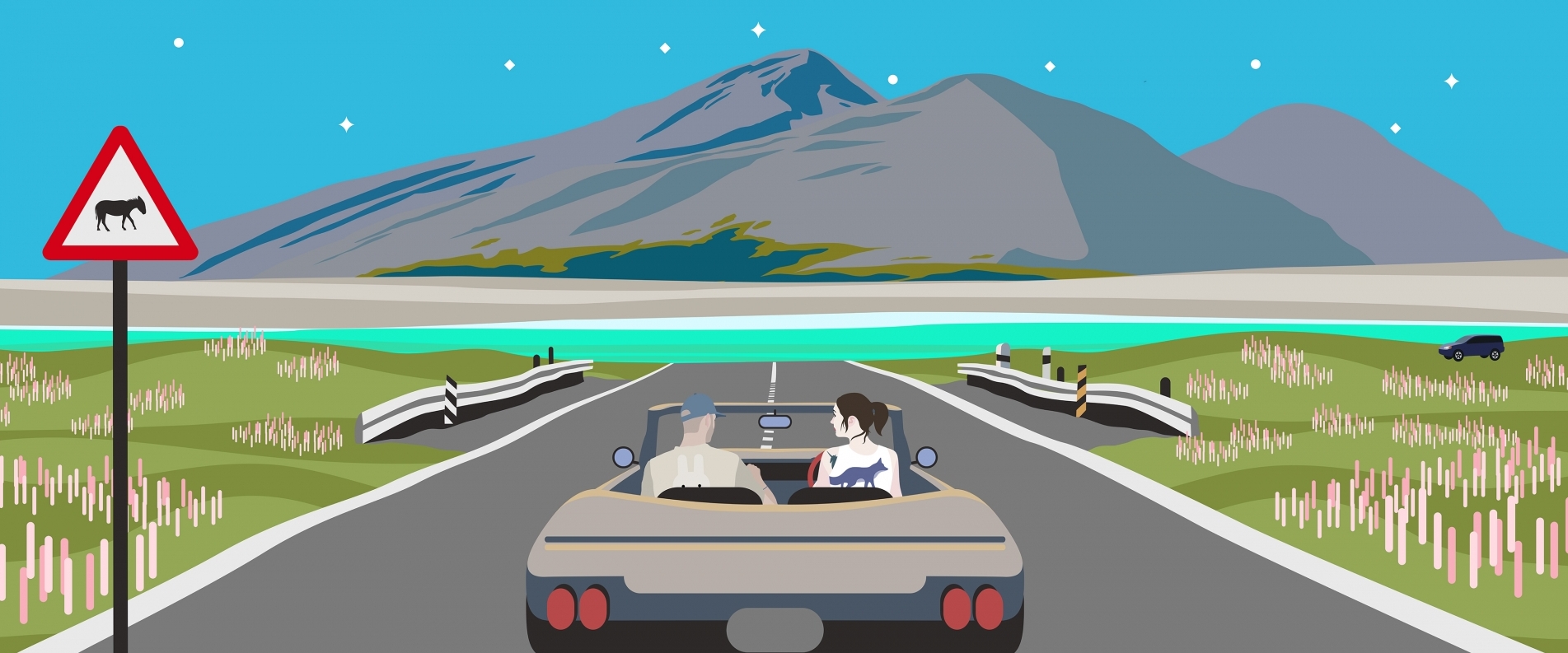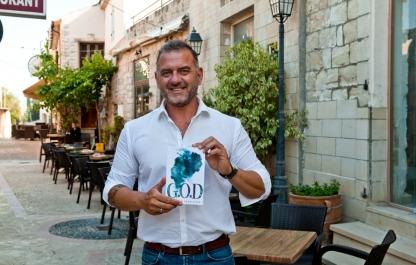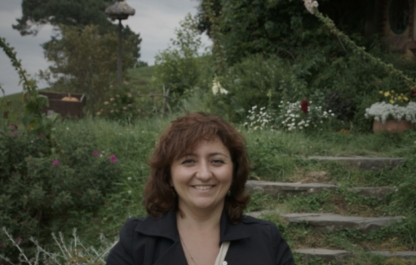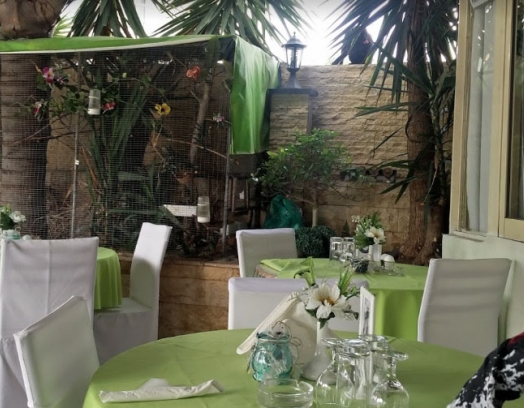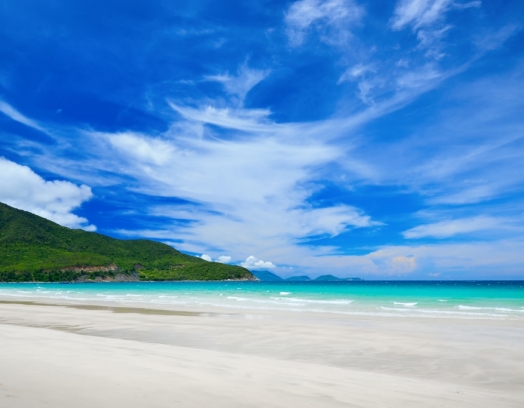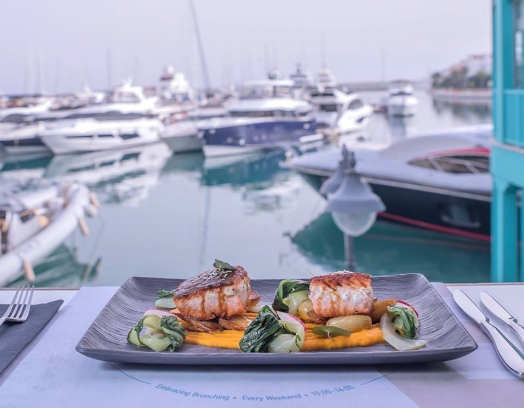Sometimes you feel like waking up early, quickly grabbing your things, loudly slamming the front door, jumping in the car, turning the music up and putting your foot to the floor as you drive somewhere into the sunrise.
Yes, Cyprus is an island. A small one where, if you travel straight for more than 200 kilometres in any direction, the only thing you’ll find is sea. But don’t let the size of it put you off! The superb-quality roads, accompanied by the island’s spectacular views, make Cyprus an ideal place for a road trip. We present to you the top 5 most exciting routes that you can enjoy a drive along.
1
View-trip
The B6 Main Road. Limassol – Paphos
Let’s first get to grips with the terminology a little. Main roads with a class “A” are very convenient, high-speed motorways with 4-6 main lanes connecting the large cities in Cyprus. “B” class roads are slower, consisting of narrower duplicates passing through populated areas. The B6 is likely the most intriguing and scenic out of them, with the entire route stretching a little more than 60 km. But don’t get your hopes up of covering it quickly.
We start from Limassol and head west towards Paphos. A narrow, two-lane road. At its start (in the Limassol vicinity) it is rather congested. You’ll constantly encounter Cypriot farmers toddling along, squeezing the last out of their grumbling old mechanical “mules”.
When the Limassol suburbs have ended, the road noticeably frees up, and driving along it is an absolute delight.
On the way to Paphos, you’ll come across a multitude of unique locations which you can examine a little closer if you so desire. And the first of these spots — the medieval Castle Kolossi, built in XIII B.C. — will appear almost instantly, after 10 kilometres of driving. It is famous for being the birthplace of the well-known Cypriot wine “Commandaria”.
The castle is located next to the road, but you won’t be able to see it from there. Follow the signs, so you don’t miss the turning.
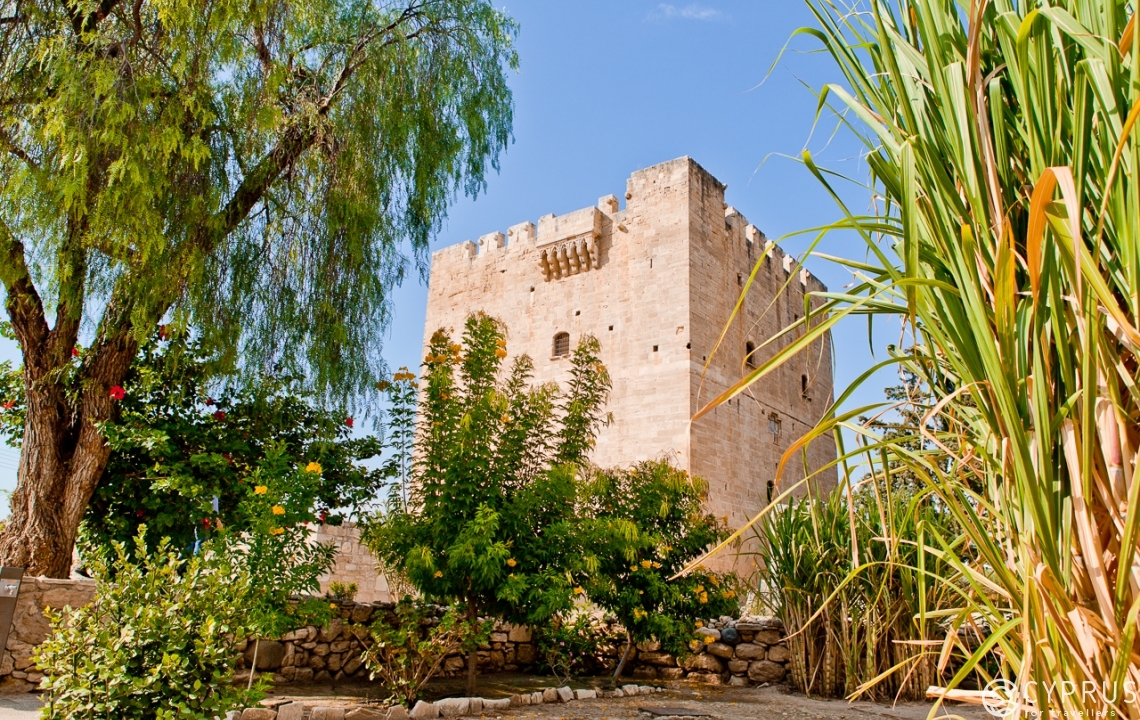

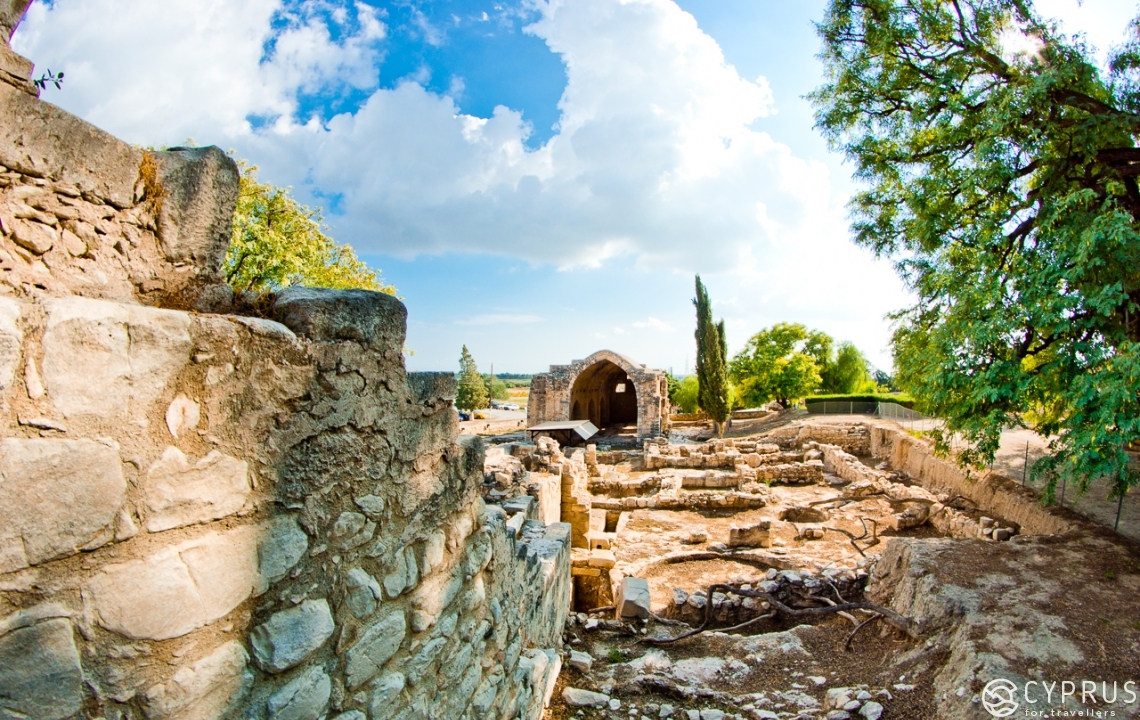

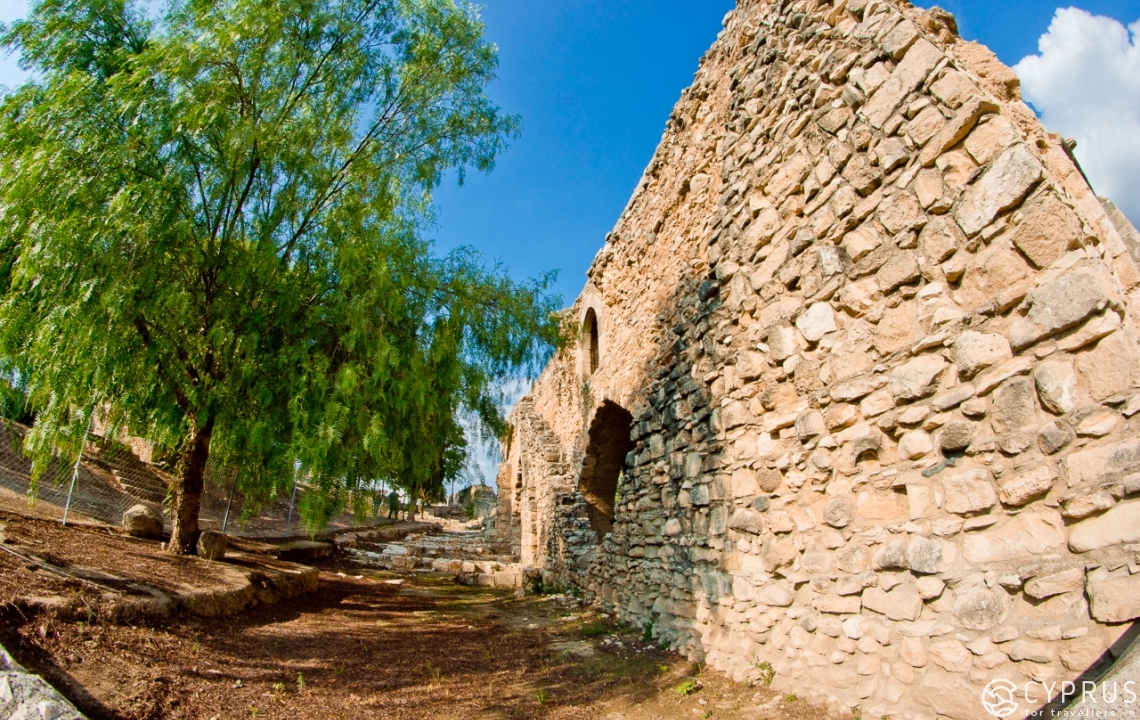
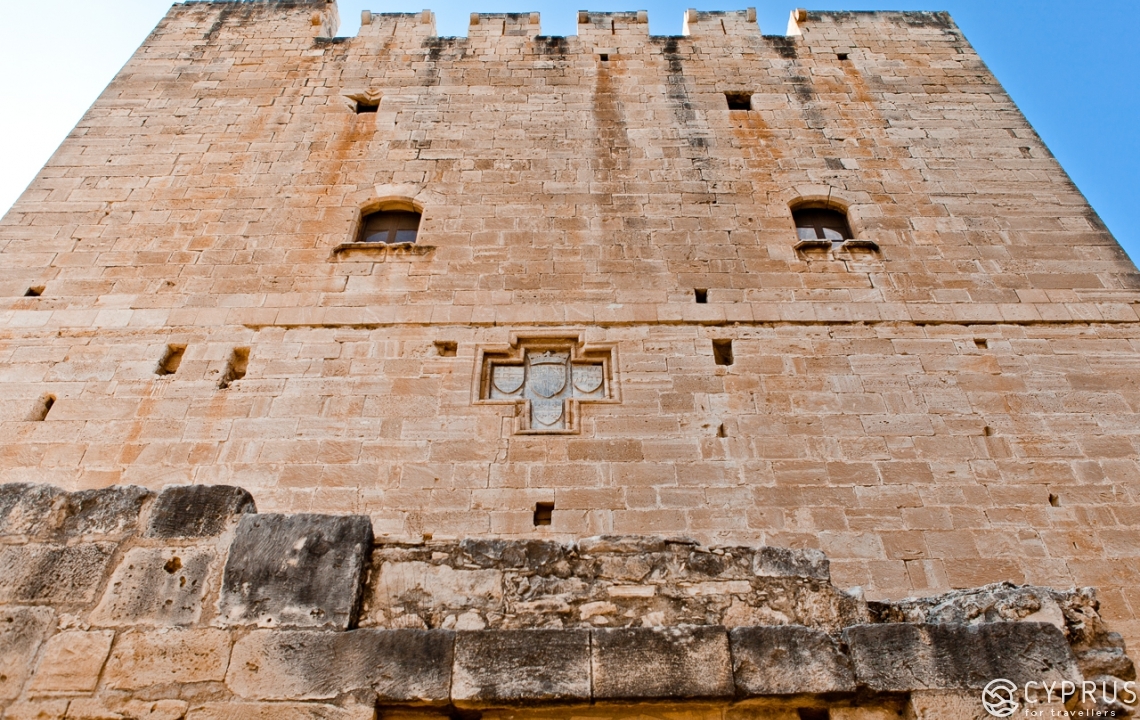

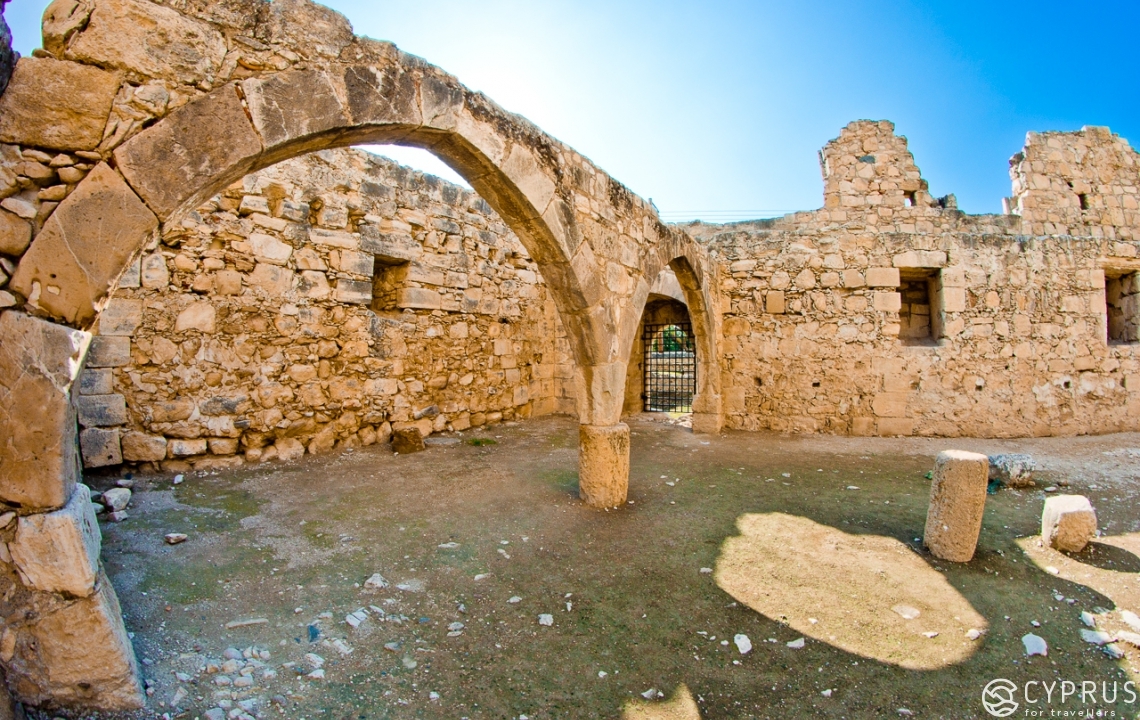

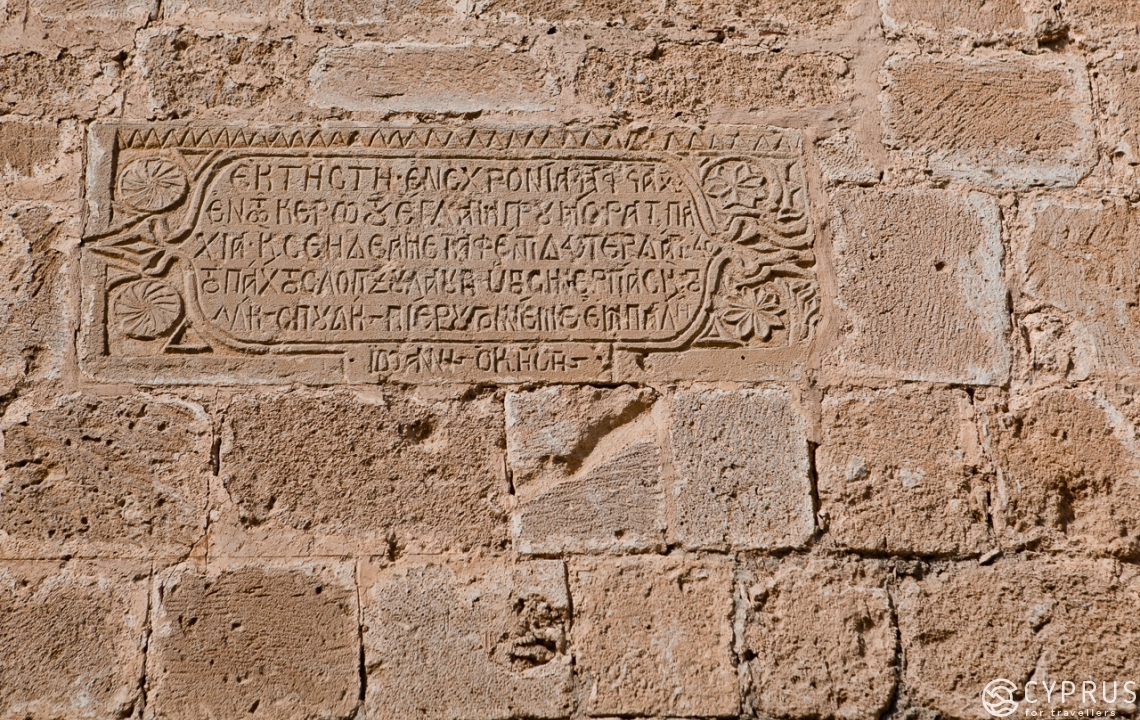

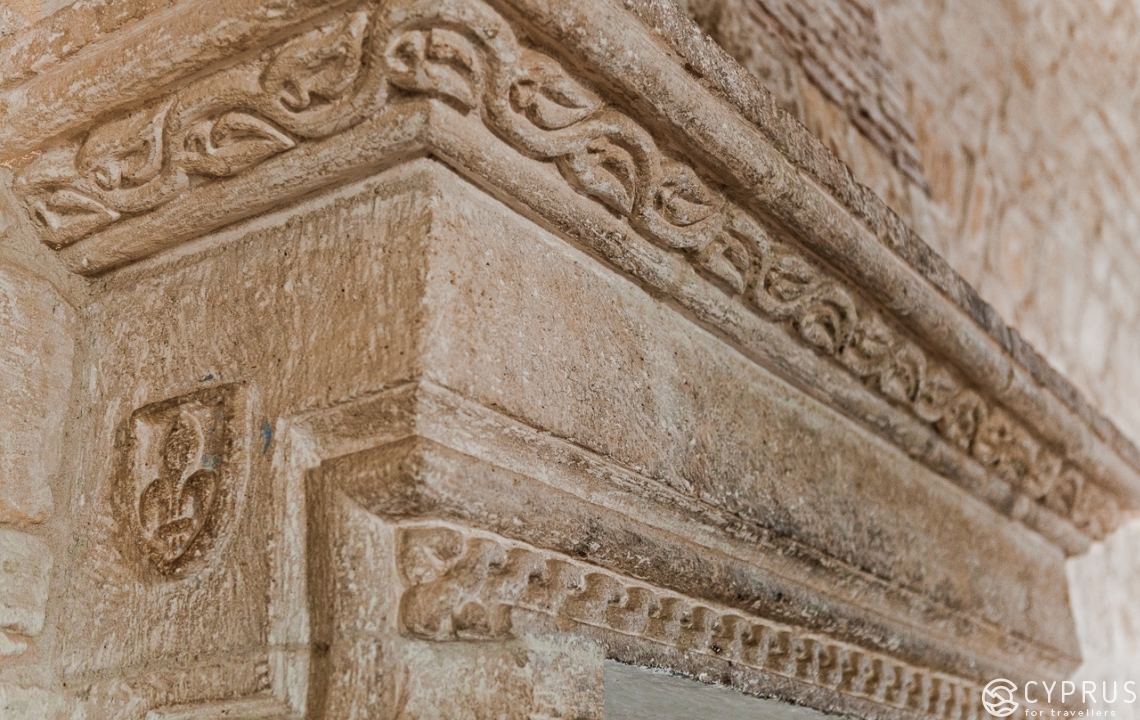
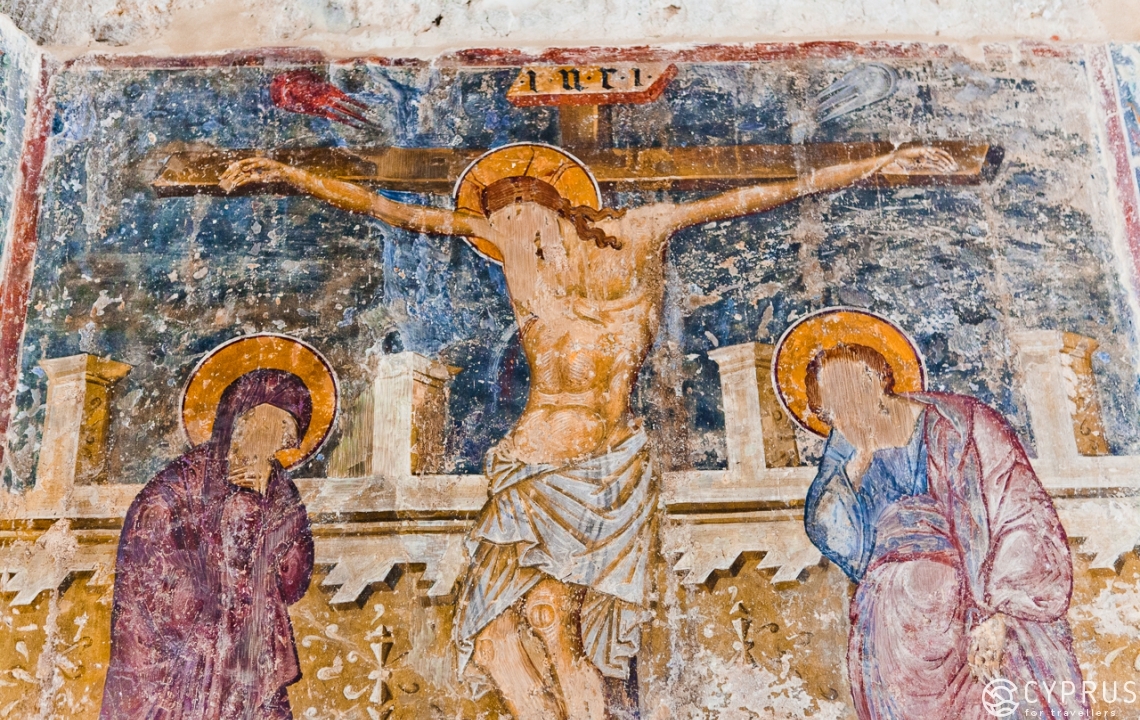
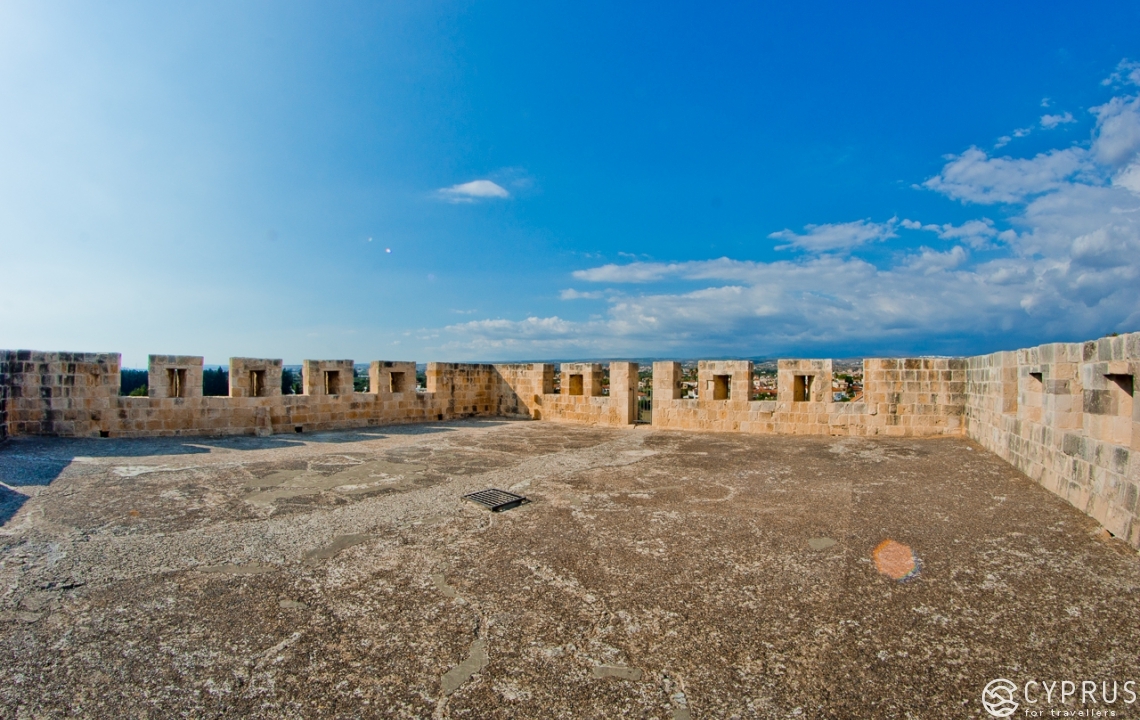
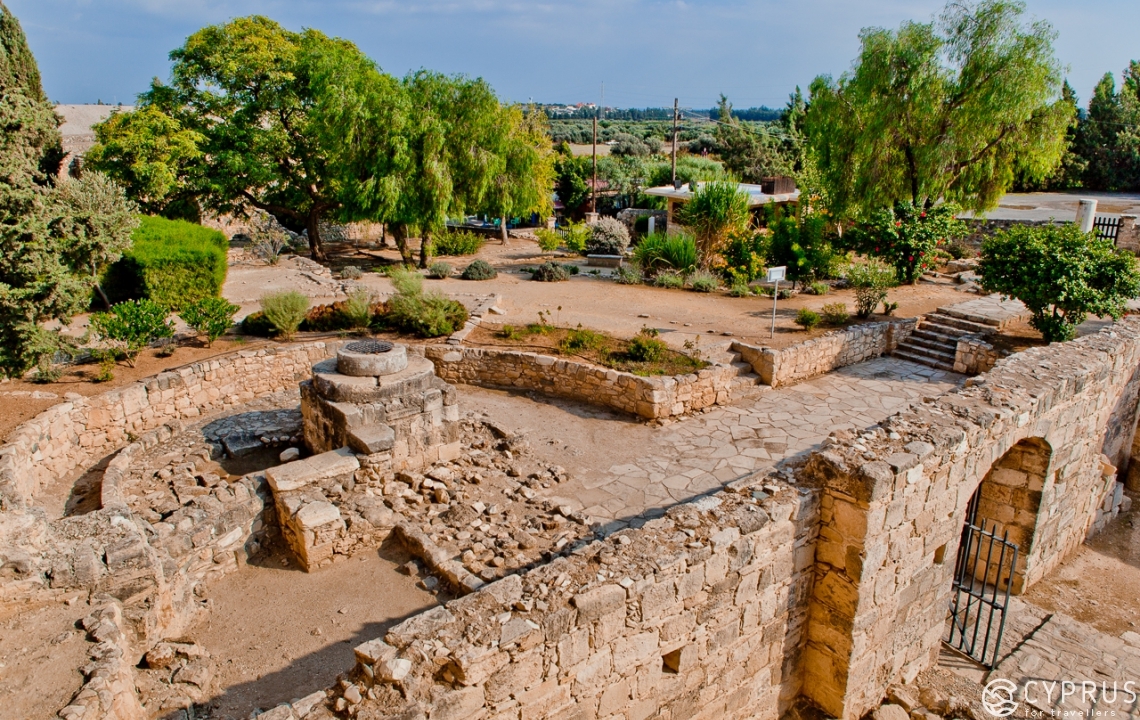
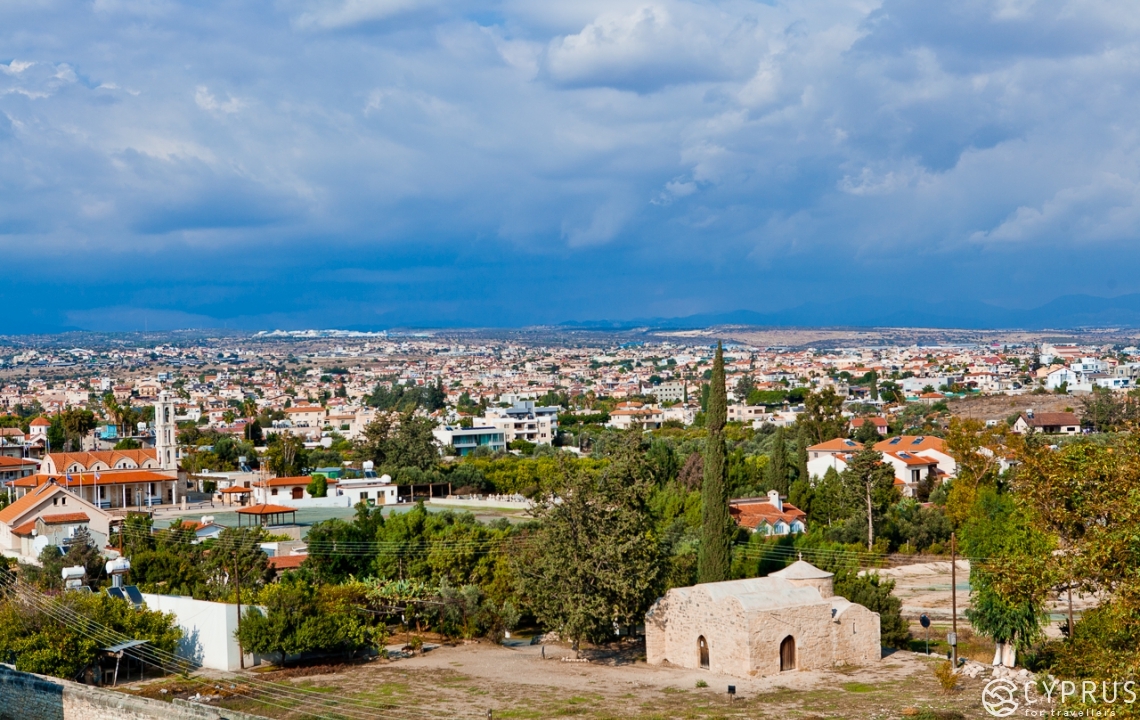
So, Kolossi is behind us. For a little while, you’ll drive through Episkopi, a small yet scenic village with narrow streets. Afterwards, you’ll take an abrupt flight into free and open space, where you’ll meet the wind, broad fields, and the smell of the steppe and sea.
Congratulations, by the way! And welcome to the territory of Great Britain! If you take photos and tag them on social media sites, they’ll automatically be geo-tagged as Great Britain.
The road heads up into the hills, while right before them there is a left turning to a spectacular beach and one of the best in Limassol — Kourion. It’s worth coming here for the wind, the waves, cosy cafes and gorgeous sunsets.
Kourion was also the name of an Ancient Greek city which used to inhabit these parts, but it was destroyed at some point in an earthquake. The city itself, or, to be more precise, what is left of it, can also be visited. If you don’t stop off, you can see the ruins of the stadium and other ancient constructs directly from the road. Whatever the case, the road here is a sight to behold.
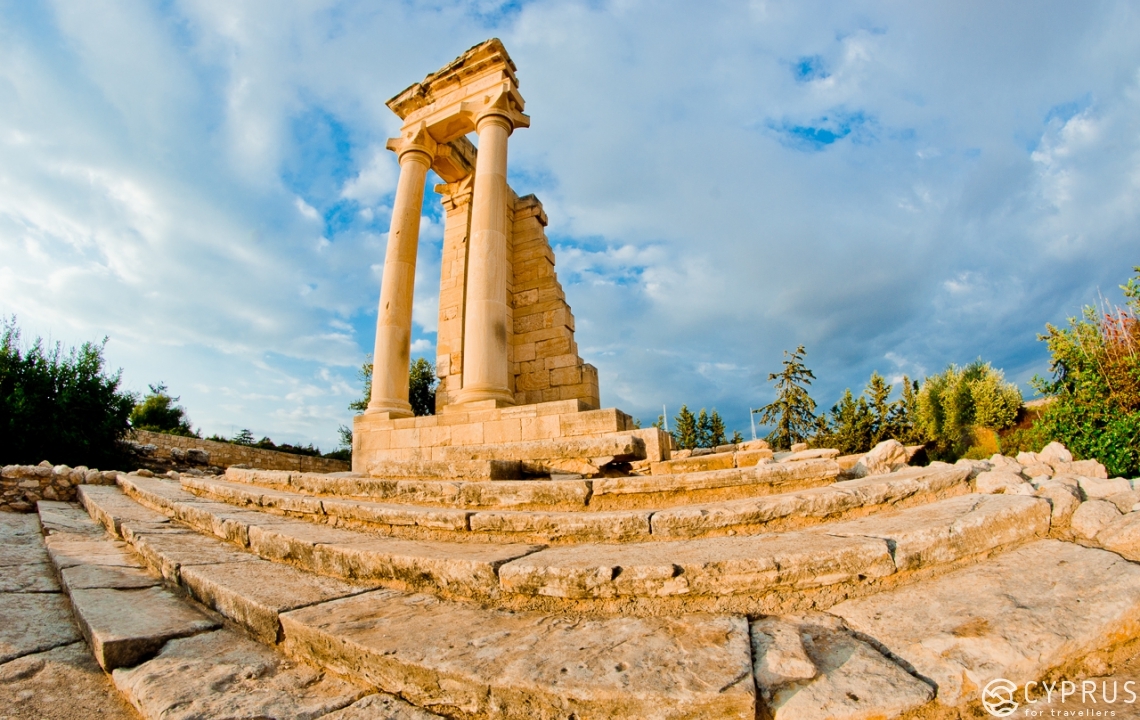
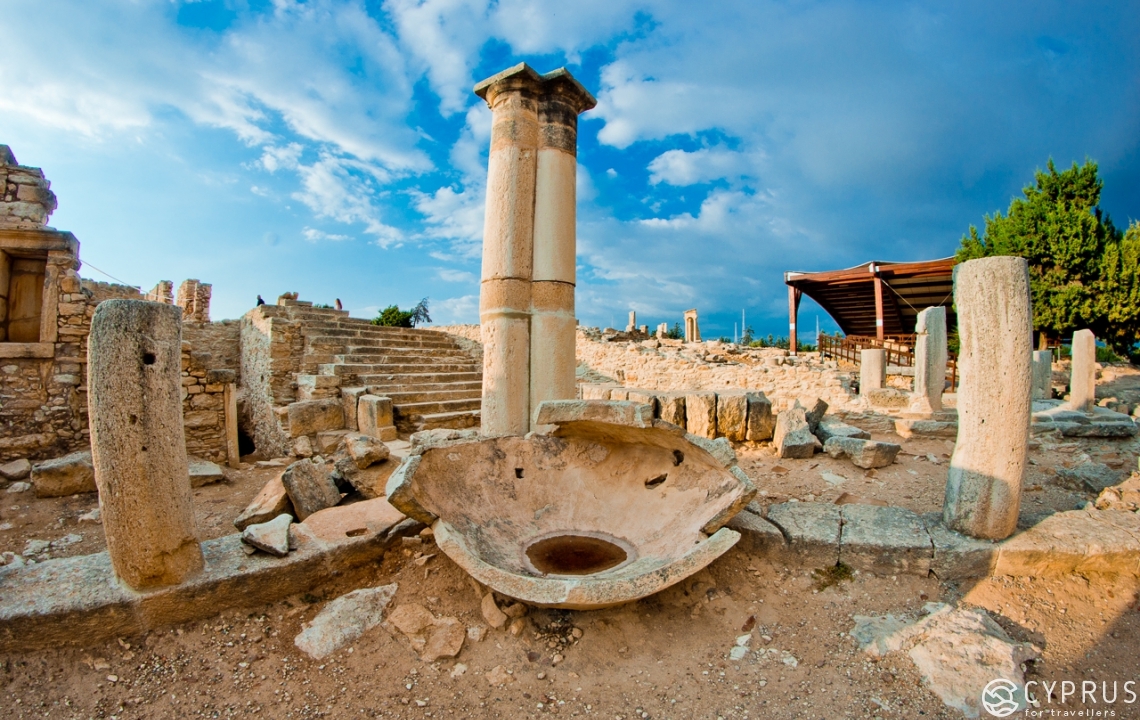

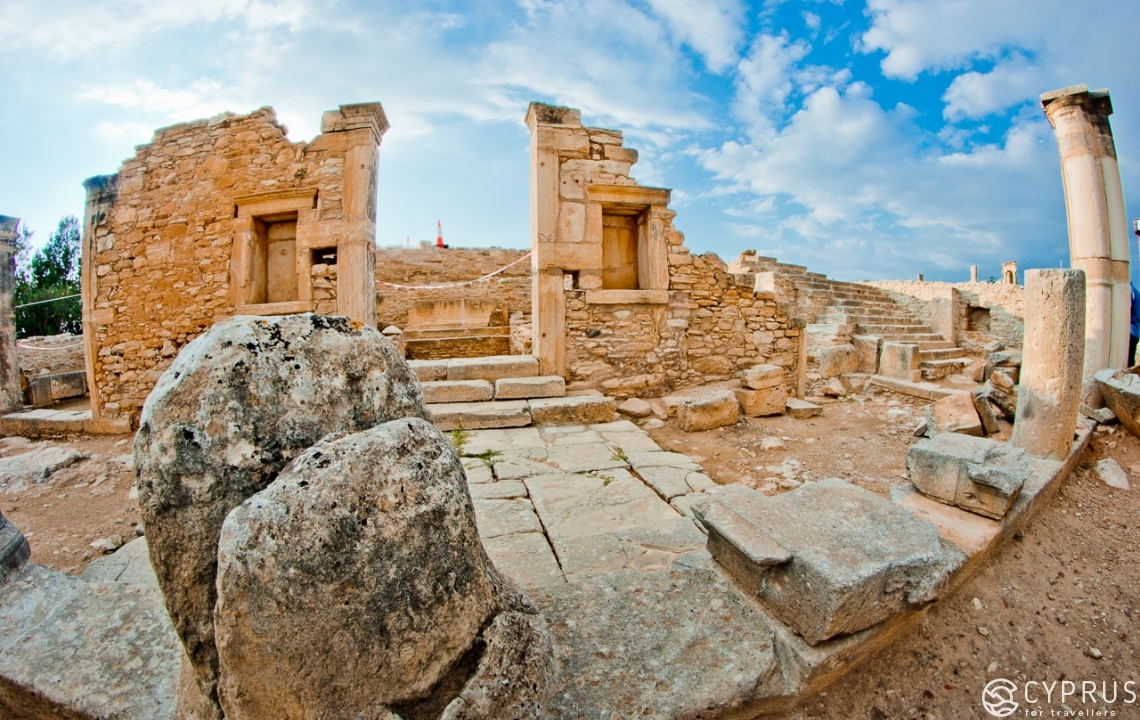
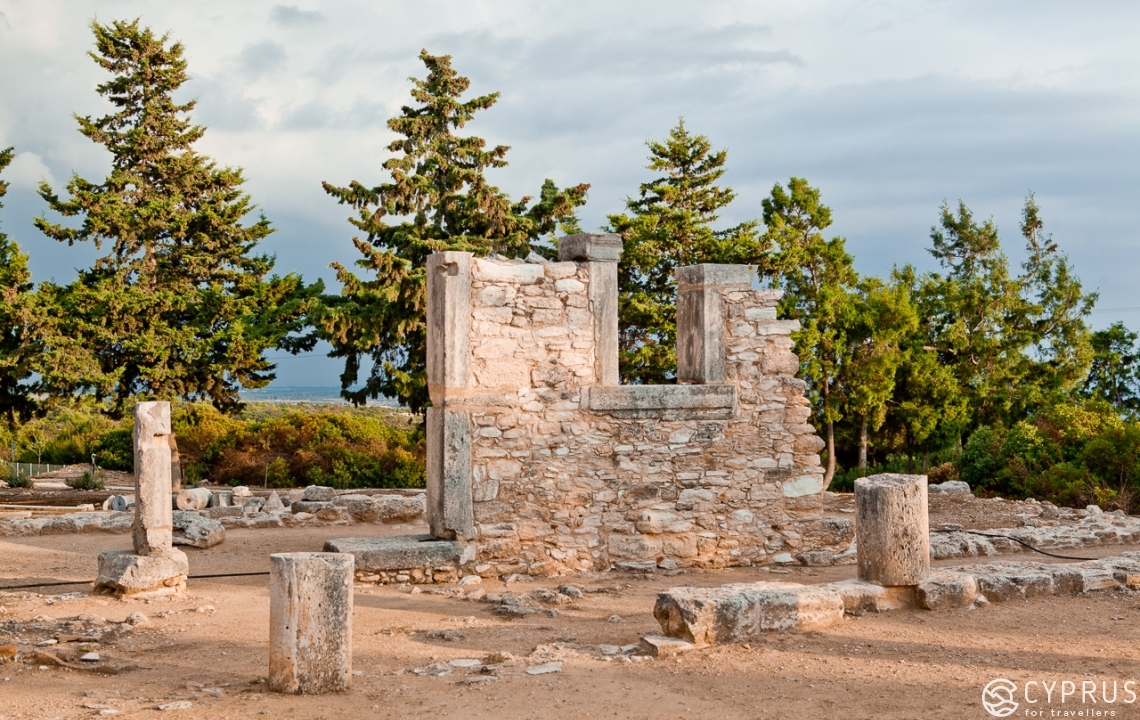
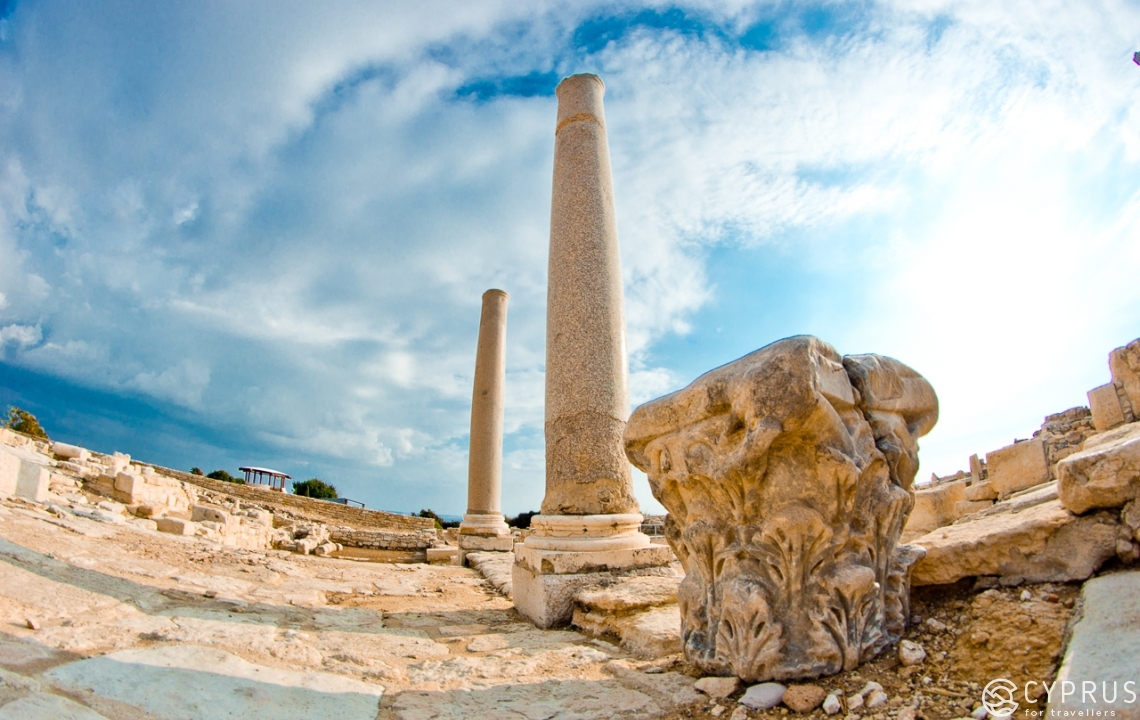

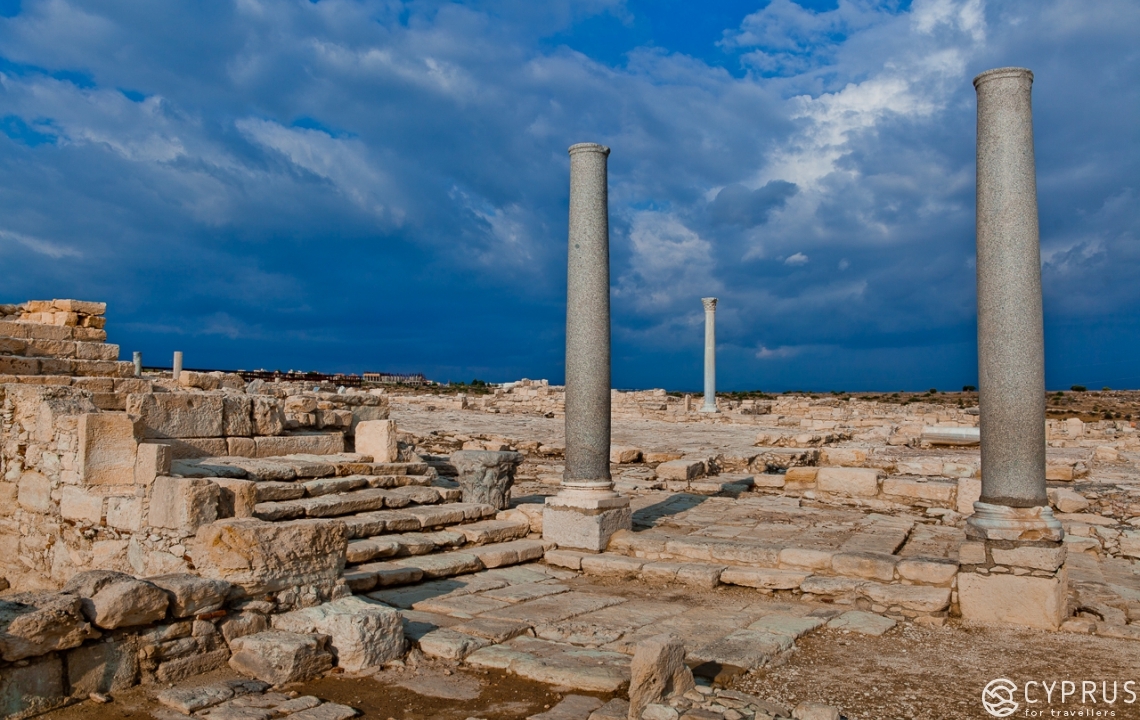
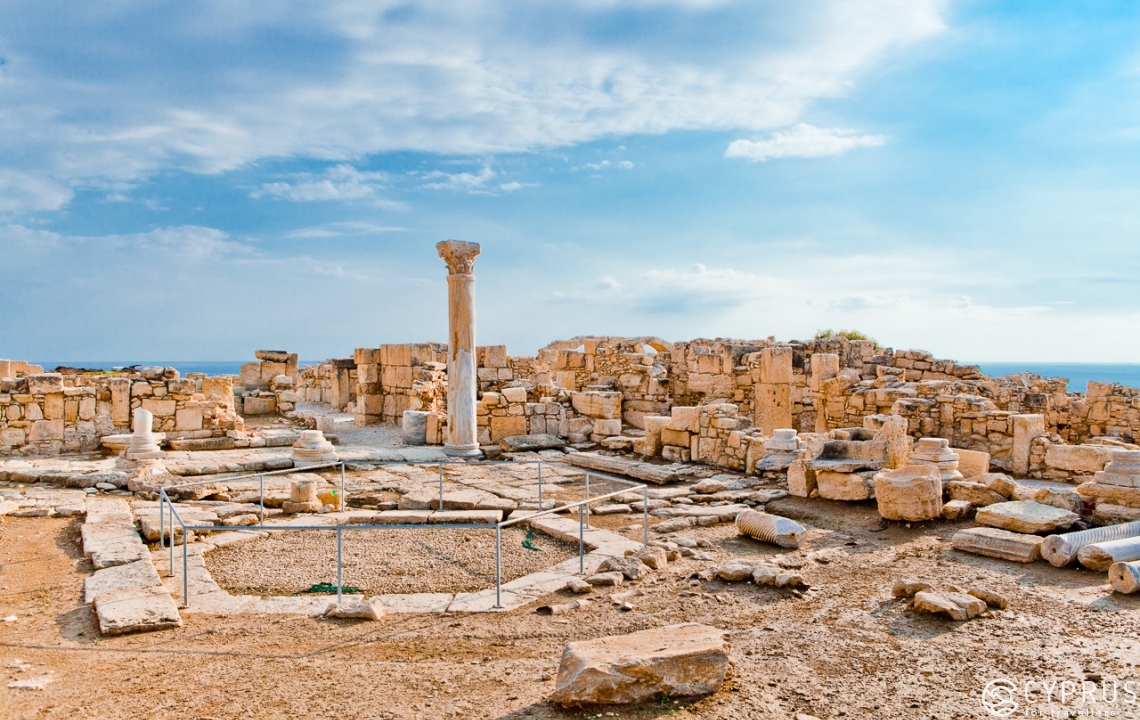

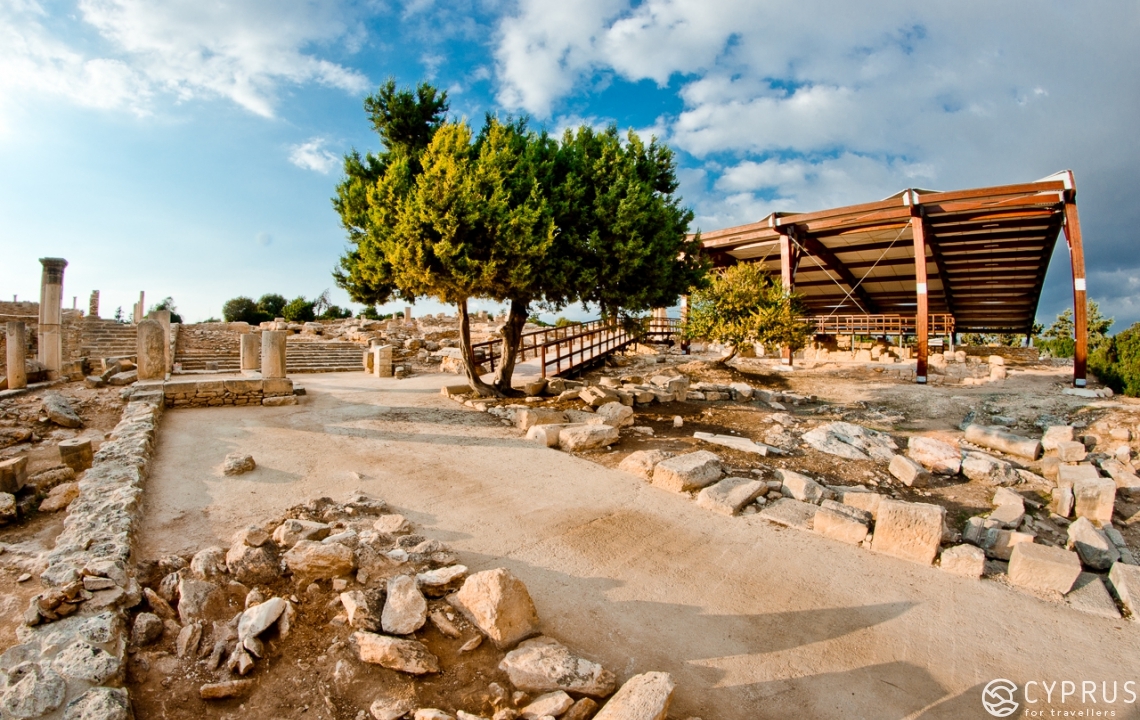



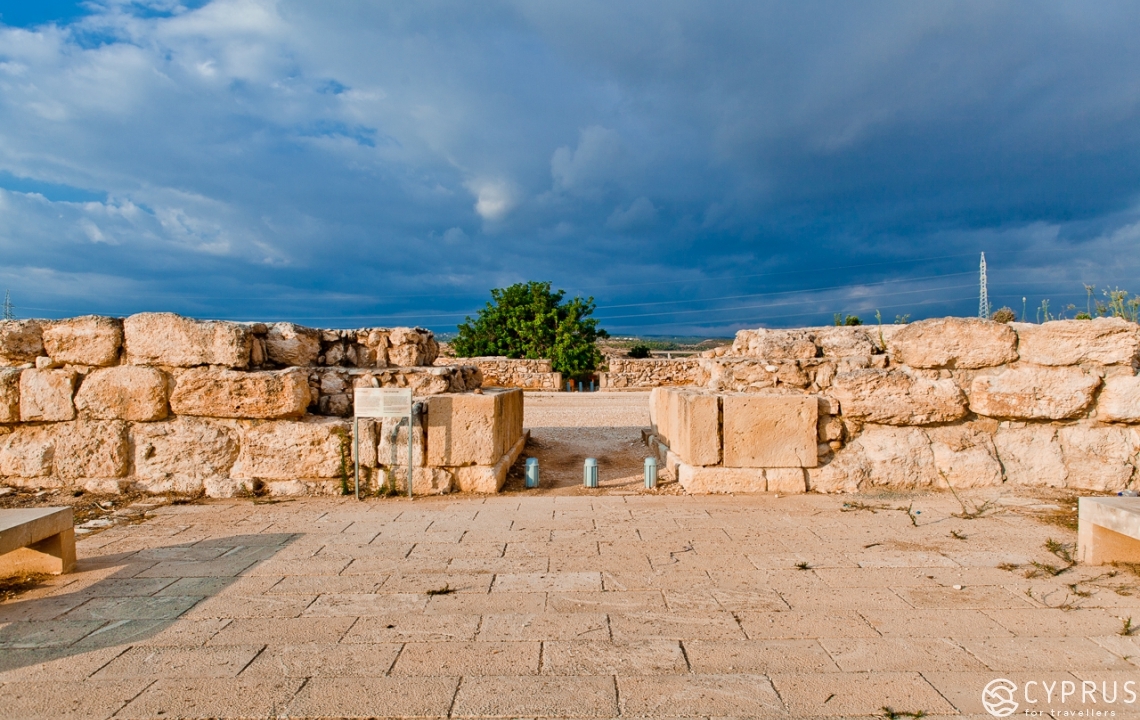
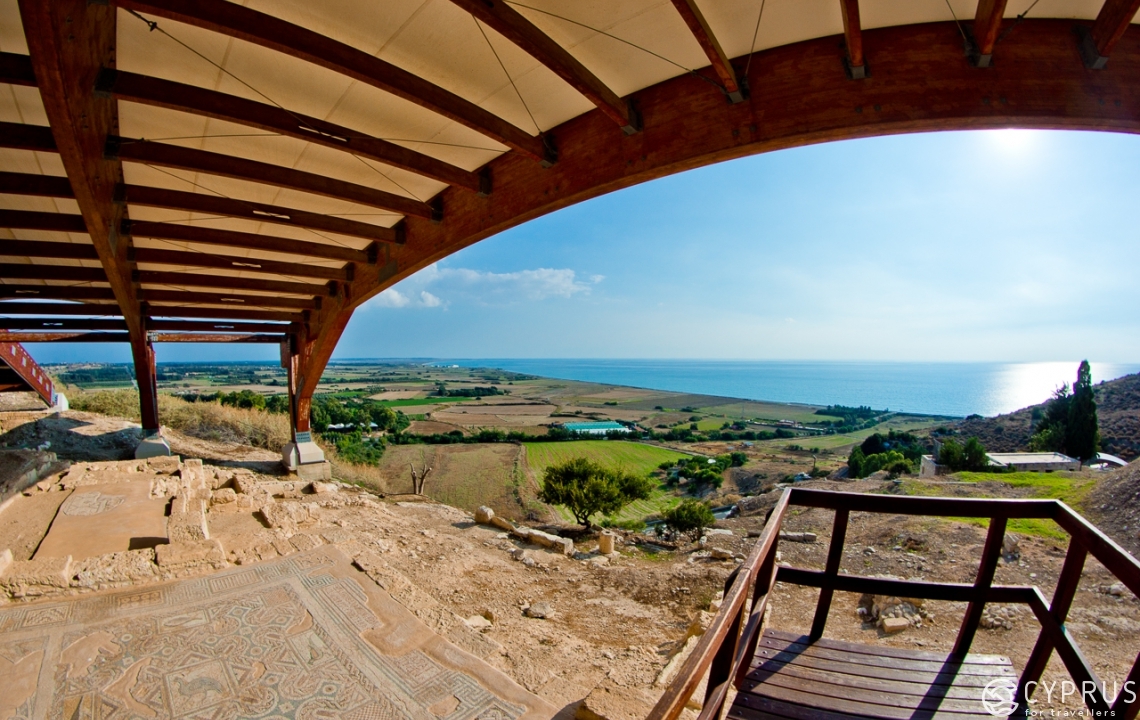
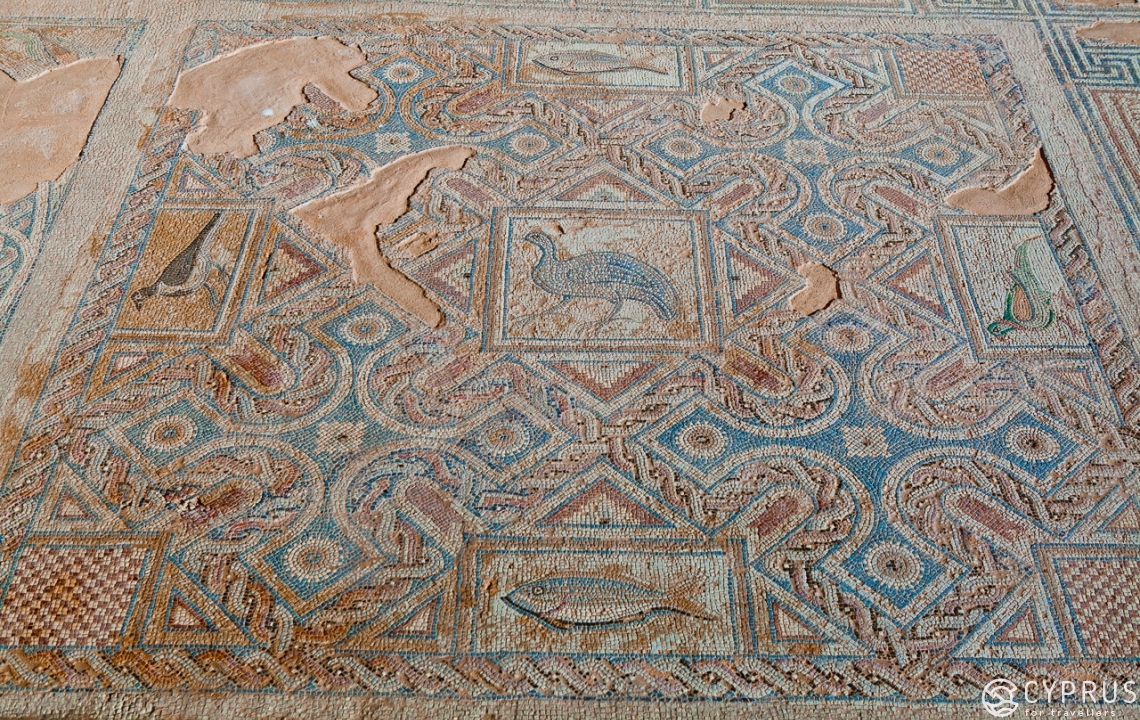

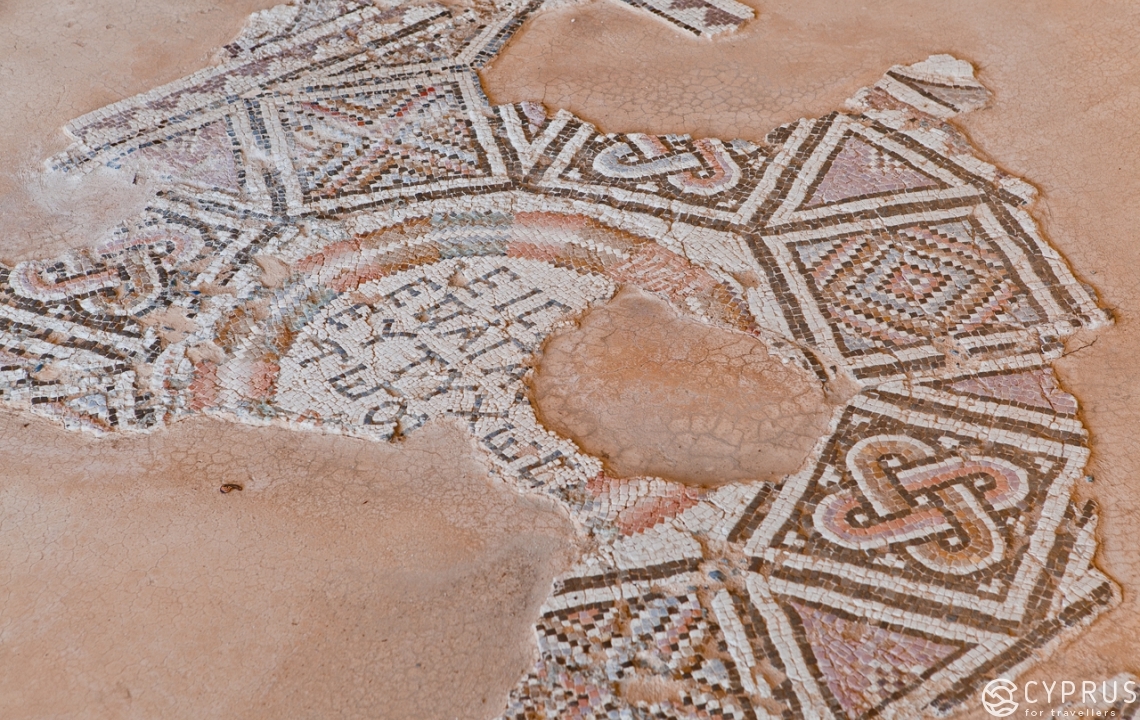
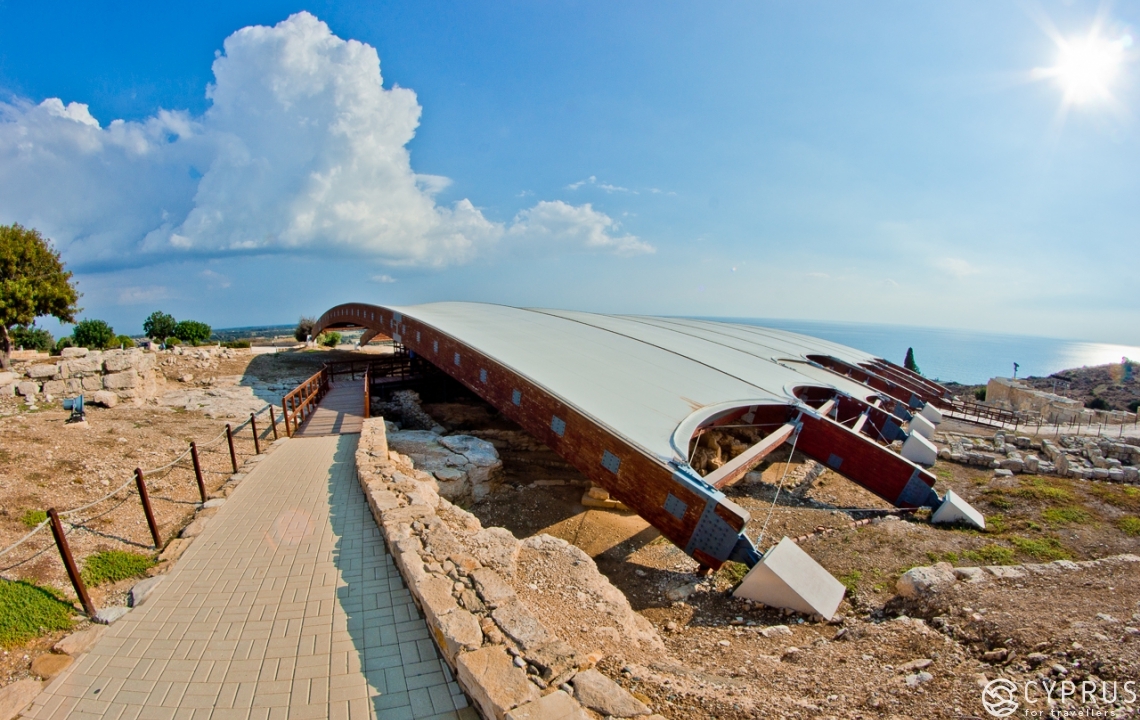
Having ascended into the hills, we find ourselves on British military base territory. While everything confidential and off-limits is located behind barbed wire and barriers, the road itself is calm and empty. Aside from some small, cosy, British-style houses where the British troops have their living quarters, there’s not really much else to see. Or so it may seem. May we have your attention, as we’re about to reveal a secret location — one which isn’t written down in tourist guides and which you most likely won’t spot from the road, despite it being directly adjacent.
What to call this wonder — let’s say it’s a “mini grand canyon”. A unique, natural land formation which is truly spellbinding thanks to its unusual appearance, and one which I’m struggling to describe in a better way. However, I guarantee that having seen this place, you’ll be struck with awe and surprise. You’ve never seen anything like this before.
This spot isn’t all too easy to find, as it’s only slightly visible from the roadside, and you’ll catch it for no more than a second if you’re driving at 60 km/h. The most exciting part is mainly hidden behind trees or bushes.
So that you definitely don’t miss it — the “mini grand canyon” is situated exactly two kilometres after the turning into the ancient stadium of Kourion. Look closely to the left. You won’t get it wrong, as you can’t mix this place up with anything else.
We pass the army bases and stray off a little along an extremely windy road, heading downwards from the hills and immersing ourselves in authentic Cypriot rural landscapes. Small villages, fields, gardens and coffee shops surrounded by what would seem to be all of the locals, as well as hills and mountains in the distance. Left-hand turnings for the sea flash by here and there. The area also has a handful of beautiful, cosy beaches yet to be tarnished by tourists.
When approaching the hills head-on, the main road will go ahead, while to the left, the road will head upwards to the village of Pissouri. I definitely recommend you stop off here. It won’t take up a lot of time, and will, no doubt, prove to be an impressive find.
Having ascended the hill, you will come to a fork. While glancing at the narrow streets and steep cliff-sides, you involuntarily begin thinking about where you’re going to abandon “your iron horse”, as well as lose your head, but you can turn wherever you want. You’ll find convenient parking spots both to the left and right, which are adjacent to the historical centre.
Pissouri is one of (maybe the) most beautiful villages in Cyprus, thanks to being positioned on a hill amongst a scenic green valley. The windows of almost every house in this hamlet reveal a wondrous, pastoral view. Besides, the village’s architecture is exceptionally striking. Especially in the centre.
The local elderly females here are dressed the same as they were a century ago (if you’ve seen old photos of Cyprus, you’ll know what I mean) — in standard black dresses.
The most intriguing spot is the historical centre, which you’ll need a grand total of about 1.5 minutes to walk around. Yes. It’s tiny. But stunning. The main street is paved, there are cosy little eateries everywhere, restaurants, souvlaki spots and coffee shops — precisely what you need for a road trip. You pop in, take a quick look around, drink some coffee, smile at the locals, bid “good day” to the numerous British tourists (Pissouri is considered a British village, but there are hardly any fewer Greeks here than English) and drive on.
We are further awaited by the tourist Mecca of Cyprus — the Rock of Aphrodite. This is believed to be the very place where the goddess was born.
The Rock of Aphrodite is a large piece of rock which broke off from the main cliff-face and fell into the sea. It looks beautiful and resembles the island landscapes in Thailand. This place is so stunning that tourists come here by the busload. And we can see why.
When approaching the rock, it will be on the left-hand side, with parking to the right. Reaching the rock from the car park is initially a little confusing, as between you and the Rock of Aphrodite, there is a main road lined with crash barriers, and after that an awkward mountain slope. Some tourists aren’t phased and run ahead recklessly, regardless of the evident obstacles. But you don’t have to do this. Nearby the small shop, located in the parking area, there is a faintly-noticeable decline into a tunnel leading to the beach.
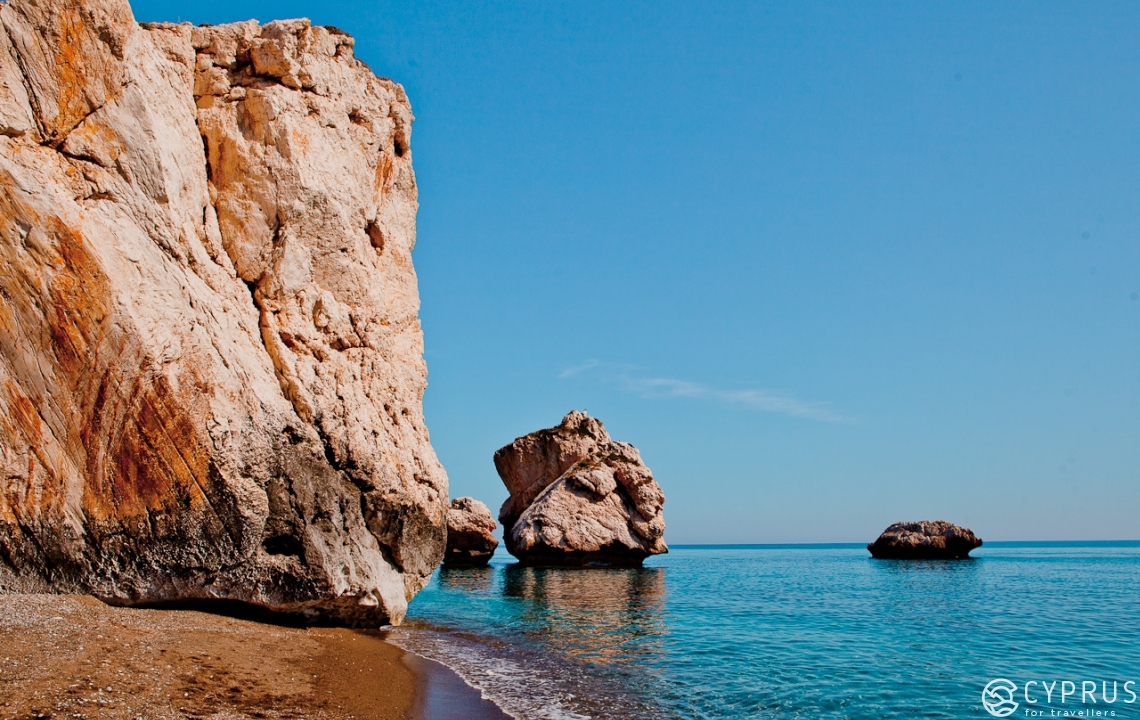
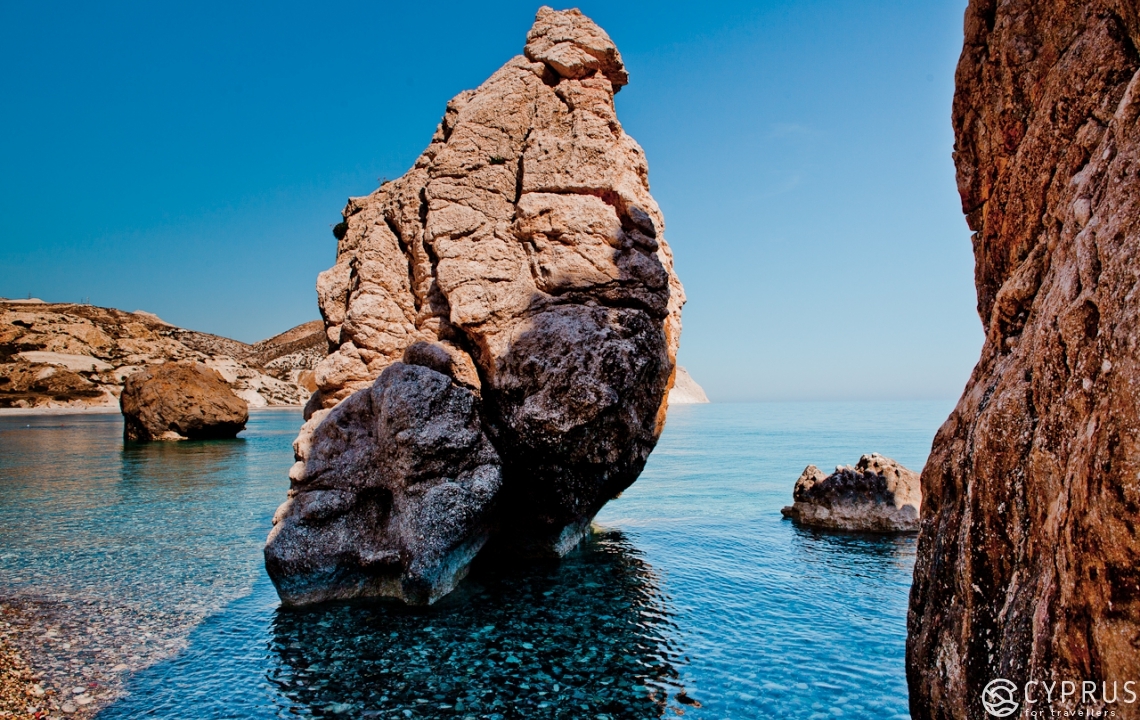
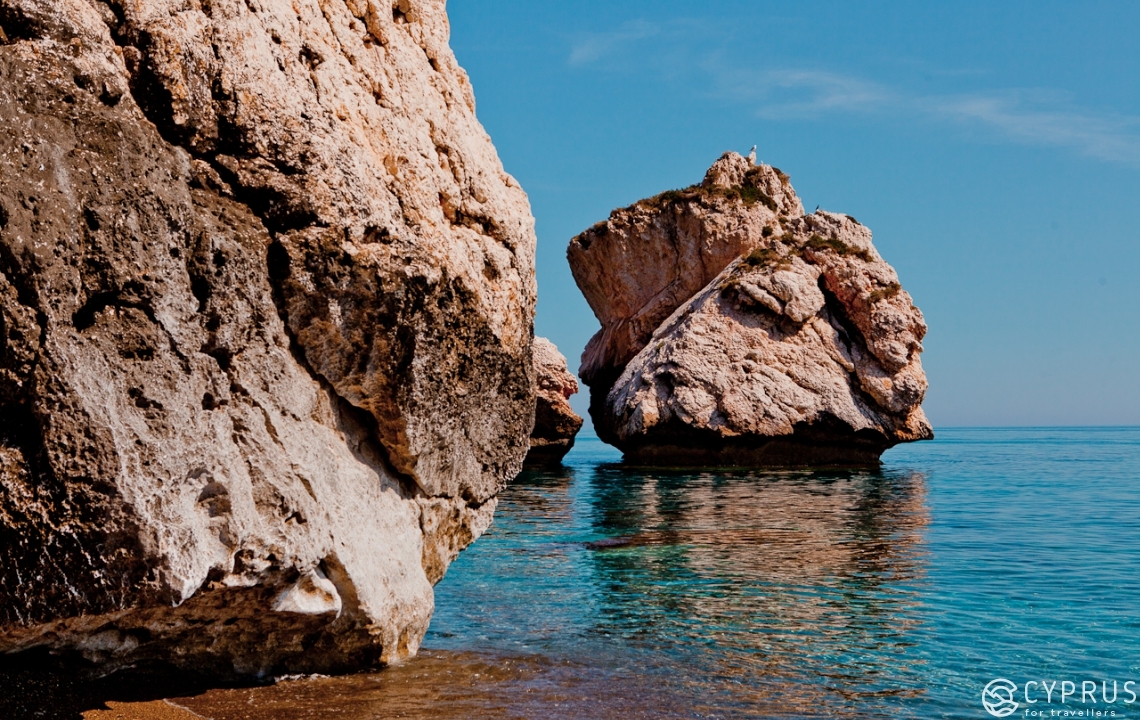
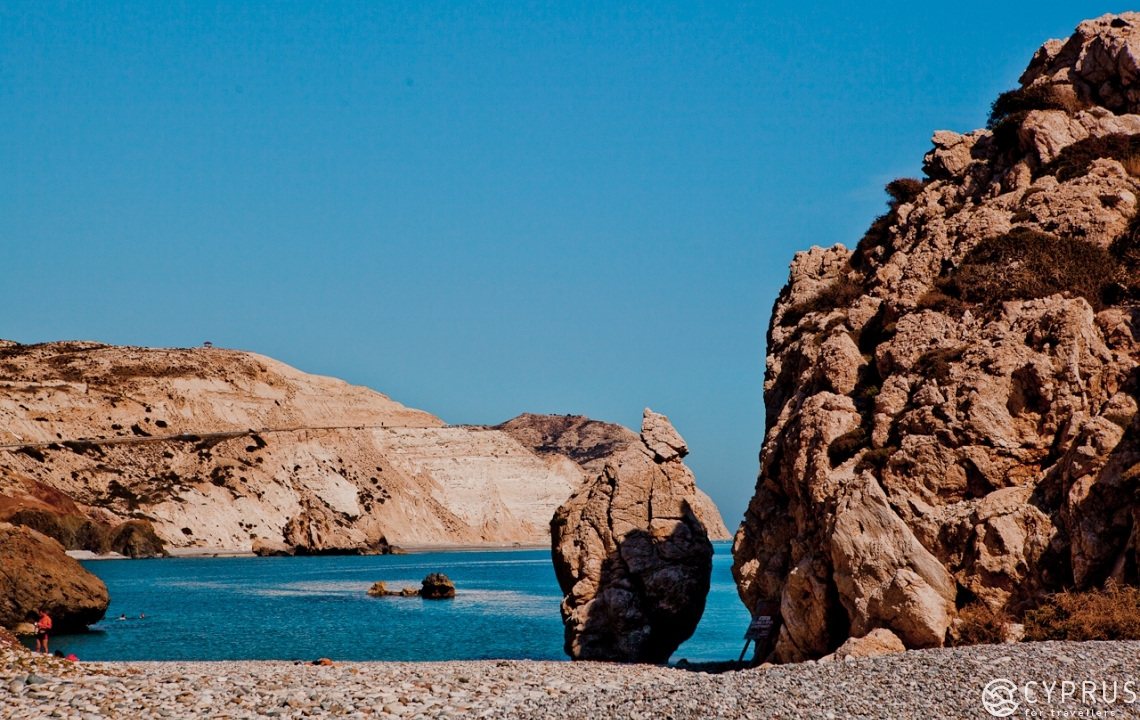
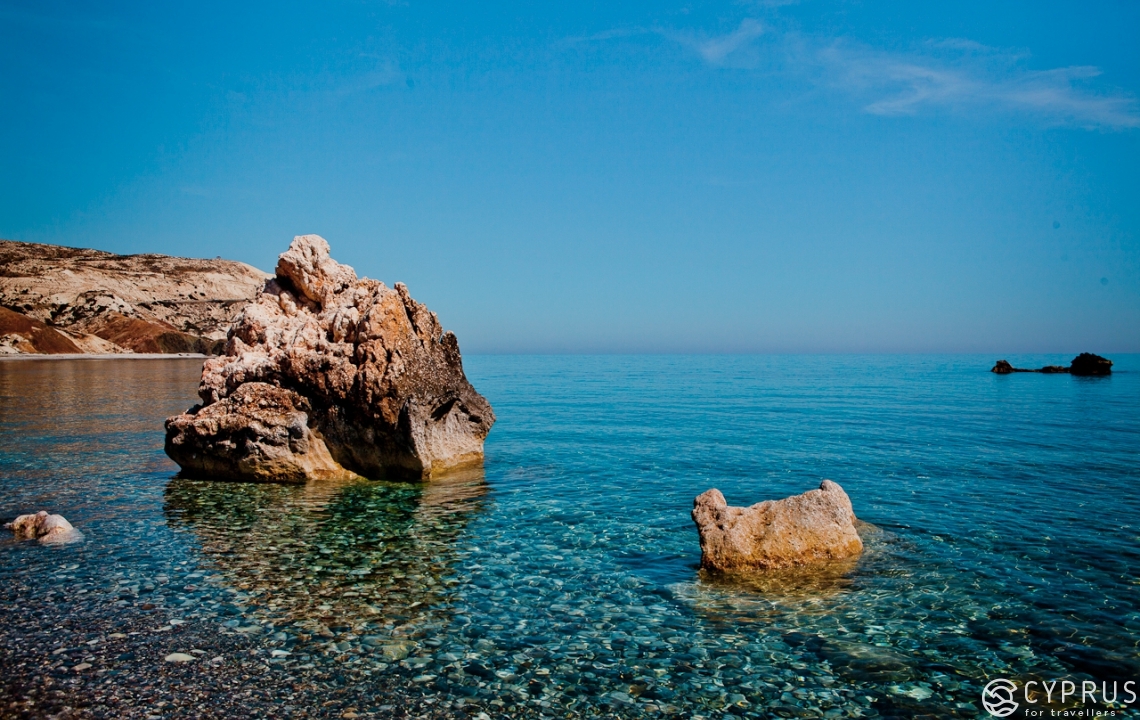
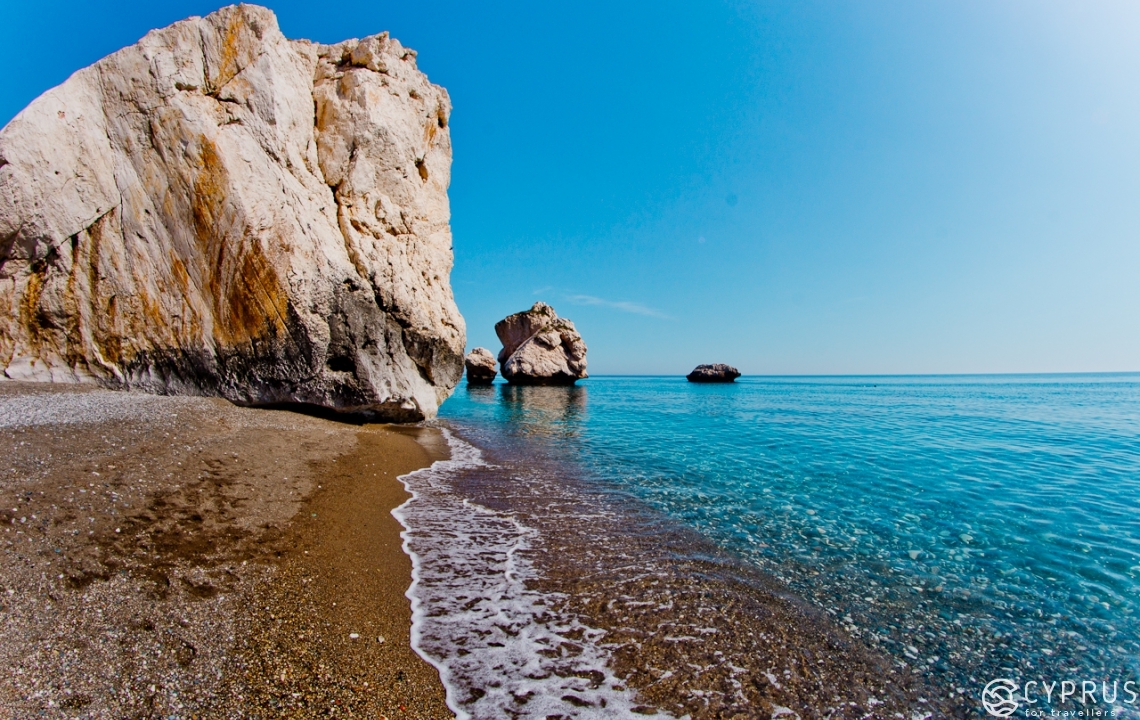
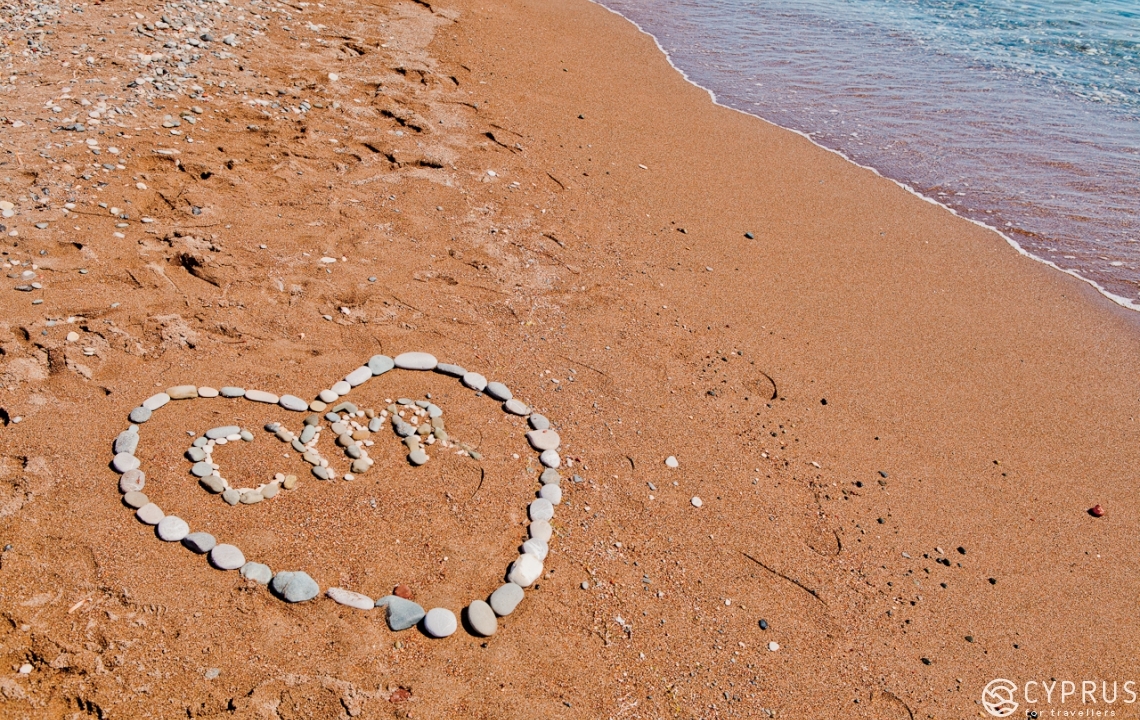
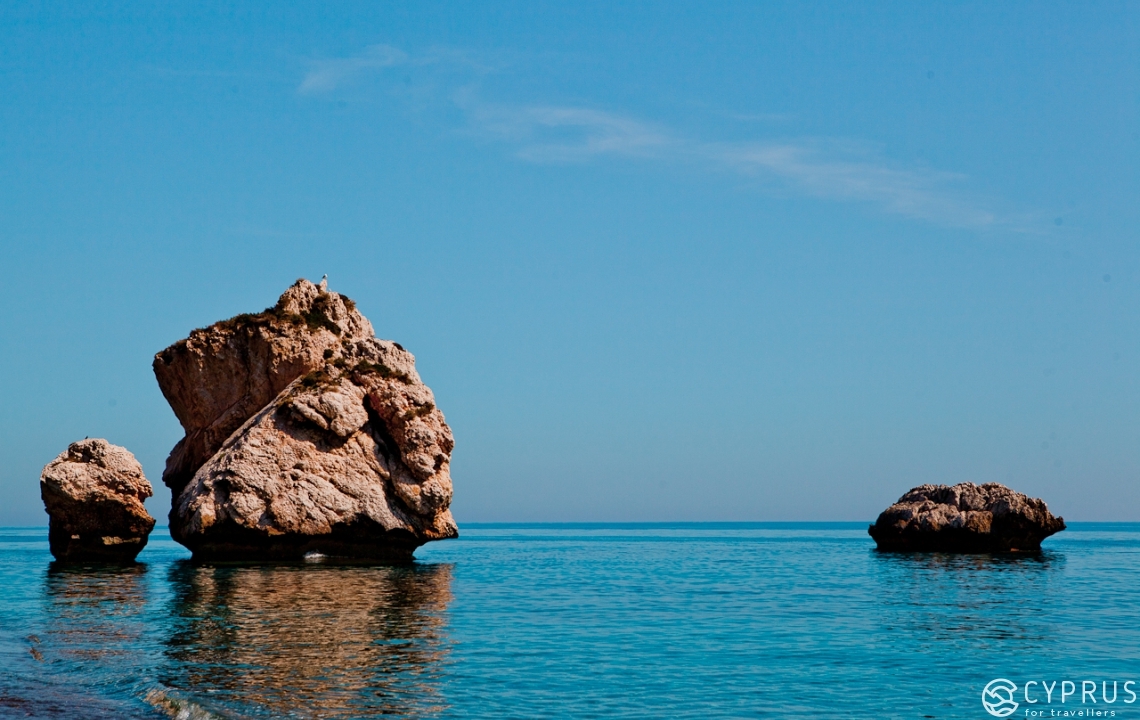
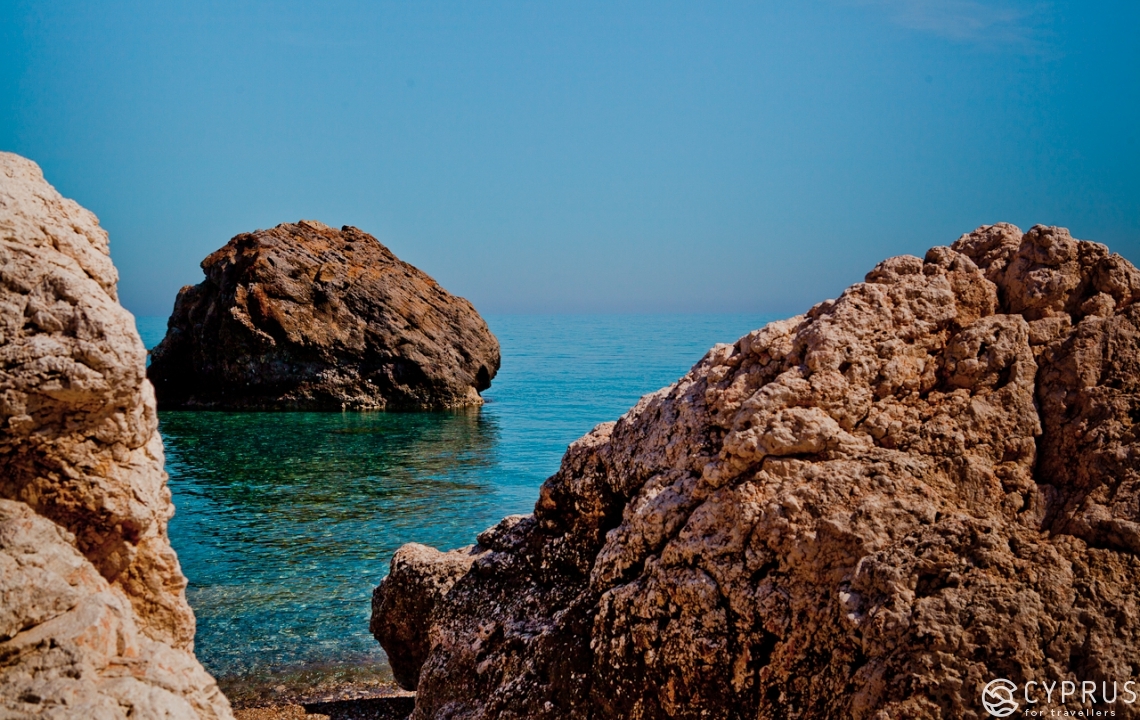

We’ve had a look at the rock, taken some photos for keepsake and fried ourselves in the sun — now let’s get back to the car.
The road onwards travels along the coast. A fresh sea breeze and staggering panoramic vistas.
If you’re curious to see how “the other side” live, then it’s worth turning off into Aphrodite Hills (there will be appropriate signs. You won’t miss them). It’s a small, modern village hidden in the hills, away from prying eyes, where, by and large, well-off Brits have settled. The Hills of Aphrodite is a gigantic golf course on which huge, stylish villas and restaurants have sprouted here and there. As they say, “it’s good to have a little house in the countryside”. Especially one like this.
Having driven past the hills of Aphrodite, you’re now no longer enveloped in fields, but orange orchards. The landscape adopts a Paphos style. The turning to the airport will soon flash up. By the way, if your road trip has fallen on a Sunday, you’ll discover аn amazing rural car boot sale (it only operates on Sundays) nearby the turning.
And now, onwards — and nothing else. It won’t be long until we reach Paphos.
When in Paphos itself, we recommend you stop almost on the promenade — near to the medieval castle. This is far from the likes of Italy with “the closest free parking area being in Switzerland”. There is a gigantic free municipal parking spot at the heart of the tourist area which, amongst other things, is very convenient, and one reason why Cypriots are owed a great deal of respect and gratitude.
After you’ve enjoyed Paphos — the cherry on top of our adventure-cake — you can head back to Limassol along the A6 road. Albeit not as scenic, it’s a far quicker and more comfortable drive.
In our eyes, the B6 is hands down the most striking and stunning of all the roads. You were able to see for yourself that it’s filled to the brim with fascinating locations, along with staggering views. That being said, the B6 is not the only route which can fill you with both joy and surprise. Let’s continue our journey!
2
Mountain trip
The Road from Kato Amiantos to Mount Olympus
For this route, we will travel along several different roads all at once: the E801, B9, E910 and F935. So you don’t dwell too much on the classifications of Cypriot roads — just know that the further the letter-name is from the start of the alphabet, the less significant the road.
The entire journey spans across only 15 km. But don’t get your hopes up of speeding along. Firstly, you need to get to the starting point. Secondly, you’ll continuously be stopping along the way to look at all the fascinating sites. The third thing — the route consists almost entirely of winding roads, where you won’t be picking up much speed.
This is the highest mountain road route on the island. So get ready! Incredible landscapes, the cool air of the mountain heights, forests of conifers — you’re guaranteed all of this.
Why does our drive begin from the village of Kato Amiantos in particular? Because this is where the beauty starts. You specifically need to drive from the village to the mountain, not the opposite. I don’t even know why, but the drive to the mountain is far more eye-catching than the ride back.
Roads from Limassol and Nicosia run directly to Kato Amiantos. Although it’s generally nothing to write home about, the village is rather beautiful, lost in the Troodos forests. Around the village, you will see typical Cypriot mountain architecture.
We move upwards from the village and through the forest until we reach a large fork in the road. While the way to the left leads directly to Nicosia, the road to the right branches off to…ermmm…. Nicosia. You need the left turn, but don’t take it just yet. There’s a charming little eatery tucked away at the intersection which makes some phenomenal homemade apple pies in autumn. In other seasons, it’s nice to sit here with a cup of coffee, pause for a breath, revel in the mountain air and experience the inimitable taste of roadside establishments — an integral part of a good-quality road trip.
We’ve had some coffee, so let’s head onwards. The road starts to steeply climb, looping tightly around the stunning, yet crumbling mountain. If this trip takes place in winter, then you need to pay the utmost attention to the road, as blockages are often formed from fallen rocks. Besides, due to the sharp ascent, getting through the snow is no easy task.
After several minutes, there will be a left-hand turn off to the Troodos botanical garden — a vast, stunning expanse of greenery with canals, a pond, viewing platforms and a central building where you can find films playing about Cypriot nature. It is also home to the park’s staff, who will eagerly and happily answer any questions from tourists.
A secret location is hidden directly behind the botanical garden — the abandoned village of Pano Amiantos. It’s generally visible from the road, but for one, few houses are lying next to the road, and secondly, they are lying on a mountain, above eye level, covered in foliage. Thirdly, the homes to the right pale in comparison to the jaw-dropping views on the left, displaying the valley below. The author of this account drove past the village roughly 10 times before discovering it, not even entertaining the idea that there was anything other than forest.
Pano Amiantos is a particularly beautiful spot, one which you can comfortably set aside around three hours for visiting. This mountain village emerged alongside the nearby asbestos quarry, but as soon as the mine closed, the village was emptied (around 50 years ago). Despite the village having been abandoned for many years, many houses are still in excellent condition, with utensils preserved inside them.
The village also has a gigantic, abandoned hospital complex — not like the uptown “Berengaria”, whose floors have been thoroughly polished with tourists’ slippers, but a genuinely sinister place.
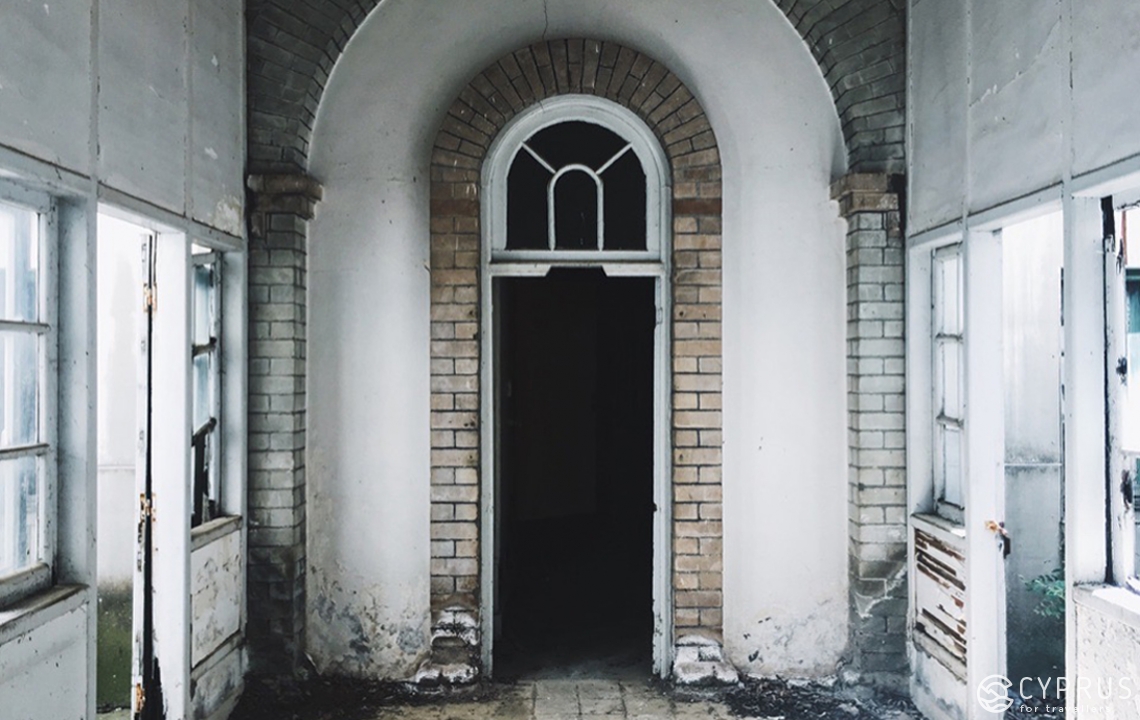

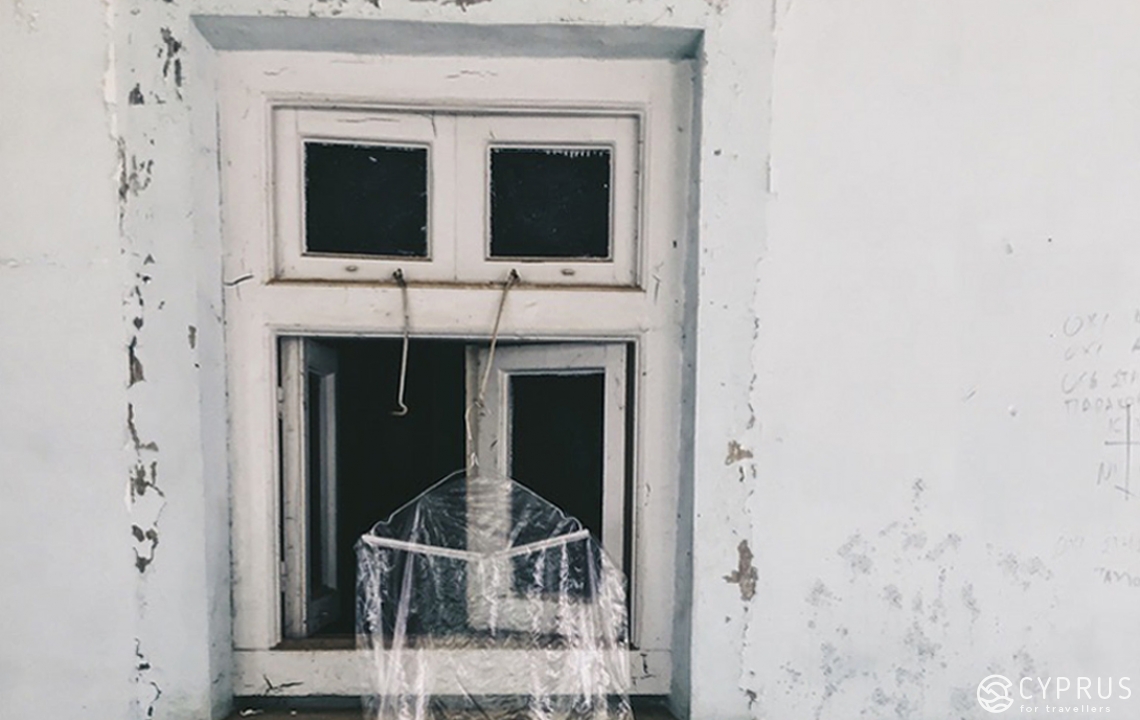


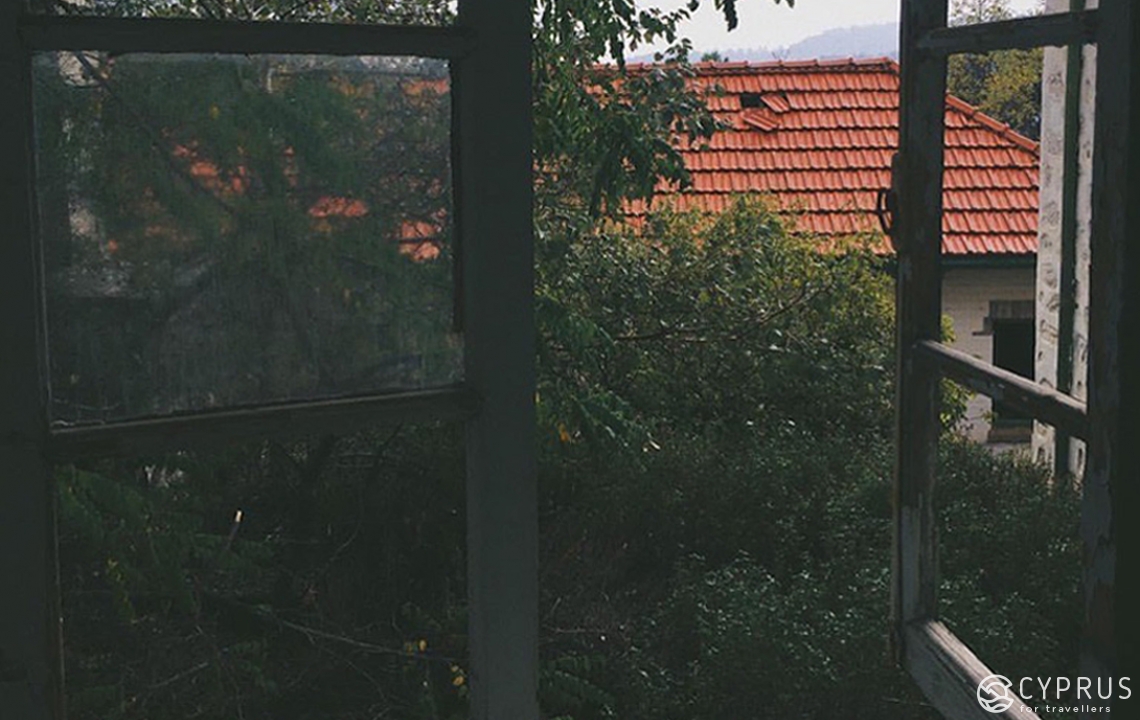

For more information about the abandoned villages of Cyprus, including Pano Amiantos, please see our material here. As for us, we’re heading on.
After the abandoned village, the windy road carries us even higher under the clouds, and after a couple of kilometres, you will come upon a “must see” spot to your left, revealing one of the most stunning views of the Troodos. In this instance, “one of the most” is not merely a figure of speech, but the actual case. The viewing platform displays a vista of an enormous quarry, the Troodos, the Kyperounta mountains and the roofs of the abandoned village, hidden by the forest and rarely looked upon. You can also see the botanical garden, and in clear weather, the sea (which is 50 kilometres away!) Far below you stand the terracotta roofs of our start location — the village of Kato Amiantos.
Autumn and winter often see clouds creeping onto the mountain, when the only thing you can see below is a sea of clouds sprawled out to the closest peaks.
At 1600 metres above sea level, the viewpoint is already rather high, so when we drive further, the windy road begins to straighten then buck and jump upwards like a mountain goat. It gradually becomes flatter and calmer, the adjacent forest condenses and thickens. Around you will be mainly thickets of black pines, along with a truly gorgeous collection of Cyprus cedars. This part of the road is crammed with a multitude of cosy mountain picnic zones. There are also some intriguing pathways leading away from the road for pedestrians — and even one with wheelchair access!

It’s easy to forget yourself here and imagine that instead of driving along with a tiny mass of mountain in Cyprus, you’re cruising somewhere in the majestic Swiss Alps.
We drive past the forest and spot the Troodos — the highest populated spot in Cyprus — on the left side. It’s tiny, but very appealing, encircled by small “Austrian” houses, a stone-paved roadway, eateries and hotels. There’s something like a mini-market for tourists where you can try Cypriot sweets and have a sip of the local wine for free. By the way, there’s a cash machine too!
When strolling through the Troodos, you’ll sense a significant drop in air temperature compared with the start point of your journey. It’s a comfortable 5 degrees lower. In the summertime, it’s hot but not stifling, while winter sees the Troodos swept with snow.
However, the final port of call lies even higher. After the village, roughly 5 kilometres of coniferous forest remain before you reach the summit of Mount Olympus.
Free parking is available close to the summit, which almost always has some open spaces (except for in the winter months), as well as mountain ski slopes and a small cafe nearby. If you enter the forest to the left of the road, then you’ll rather quickly stumble upon a path which encircles Olympus. It’s short and straightforward, taking 1.5-2 hours to cover, but has some phenomenal panoramic views of the island’s southern part.

Having chosen the route to the right of the road, heading slightly upwards to the mountain, you’ll find yourself at the highest point in Cyprus, from which you can observe the northern part of the island, all the way to the far-off Kyrenia ridge.
The air here is fresh and incredibly tasty all year round. You sit here as though you’re on the roof of the sea, and can spend hours simply contemplating eternity scattered below.
So, we’ve visited all the points and locations of our journey, and can now happily head home.
How much time do you need to allocate for this road trip? Well… if you’re a complete cynic, pain in the neck and party pooper “mountain after mountain… oh, right, have I not seen any mountains yet?”, then you can rush through the route in half an hour. But if you want to visit all the spots we’ve mentioned, then go ahead and set aside a whole day for your adventure!
3
Short-trip
Limassol – Akrotiri
If you are living or staying in Limassol and don’t have the time or desire to spend a whole day on the road, then we suggest you take this small, yet fantastic route located in the vicinity of Limassol. We’ll warn you immediately, however, that a large part of the route takes place along non-tarmac roads.
We’ll set the My Mall shopping centre as our conditional starting point. The overall length from start to finish spans over roughly 15 kilometres but, as with the last option, you can spend as long as you like on it. From half an hour to a whole day.
So, we start from the shopping complex and head south — towards the sea. After passing the ring rather quickly, we bid a sad farewell to the tarmac which we won’t be seeing for a while and enter Lady’s Mile — a huge beach leading somewhere into the horizon.
The sea and its coast here are far cleaner than in the city boundaries. The beach is initially covered with stone, and at its end — an uninterrupted expanse of sand.If to compare this beach with the likes of Ayia Napa, there are no people here whatsoever. In the summertime, there’s roughly one person for every fifty metres of beach, whereas, in other seasons, you might not encounter anybody at all.
Aside from the beach being relatively clean and empty, it’s also a rather scenic spot. When driving along, to the left of you lies the sea. To the right, a salt lake. The Troodos mountains loom behind in the mist. From behind, the main port of Limassol bristles with its steel skyscrapers. It’s so beautiful that there’s the temptation to weep with adoration as the sun sets itself down on the lake, colouring the clouds and sky in a surreal lilac.

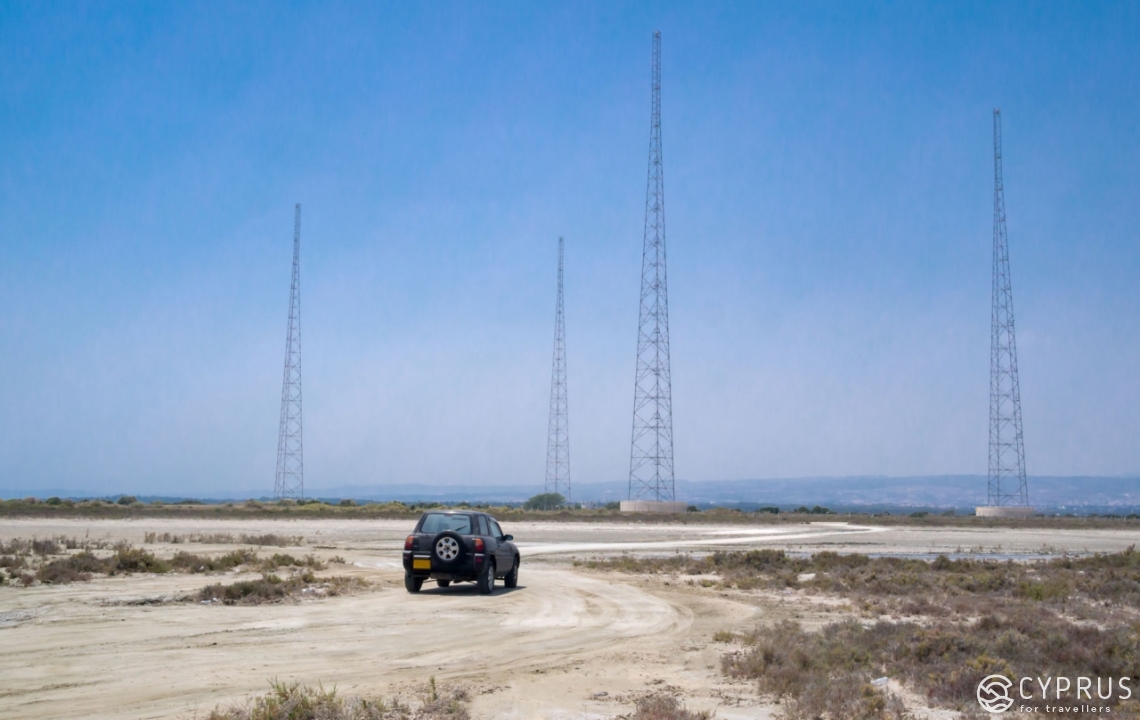
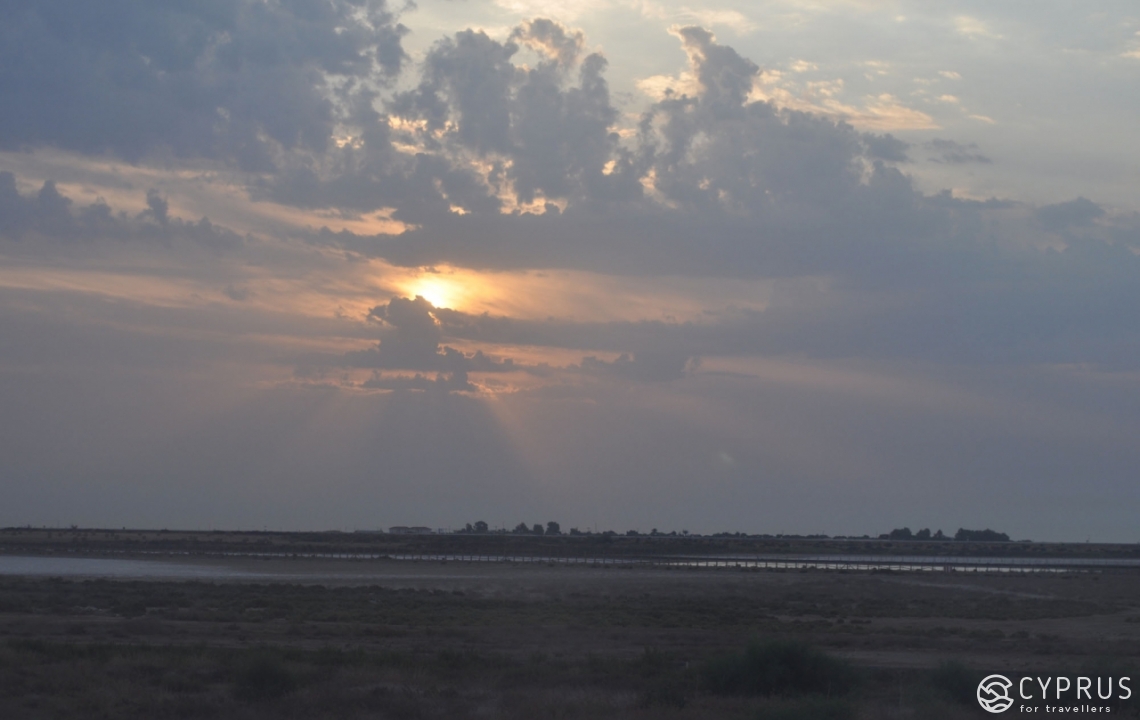
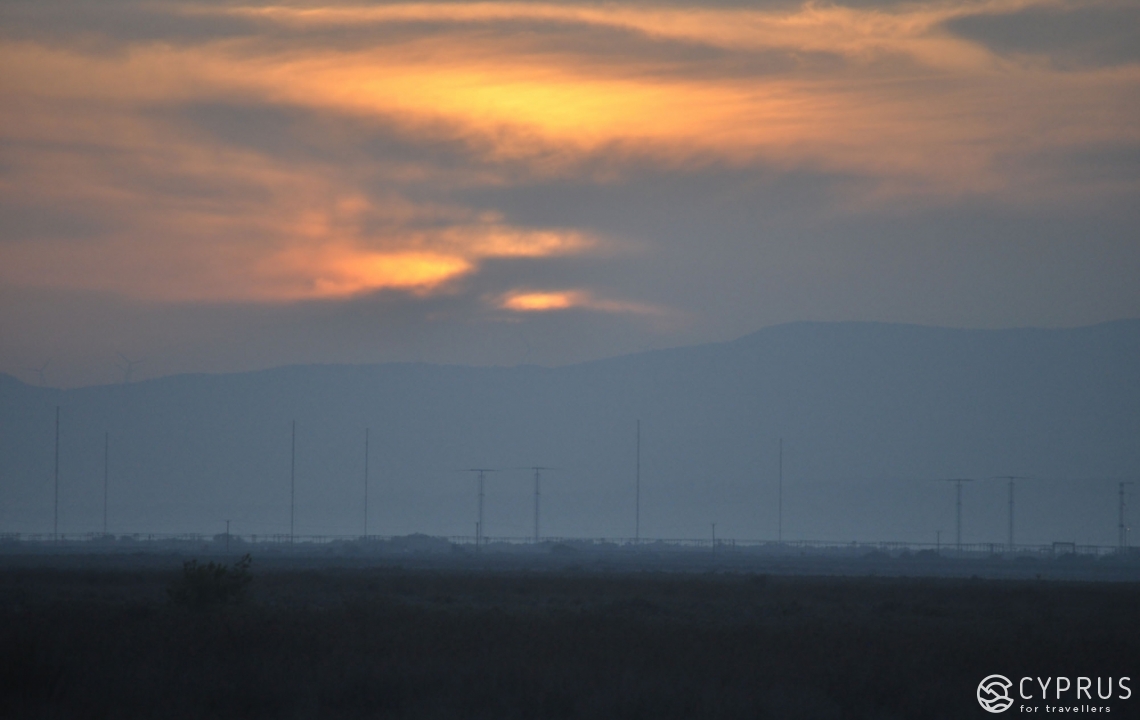
You’ll have to shake along the broken road for quite a while — until the end of the beach. The road was once covered with asphalt, but now all that remains are stone fragments sticking out here and there, only strengthening the shaking.
The road at the end of the beach leads you away from the sea and into the lake's depths — an incredibly beautiful sight. A large part of the lake is practically always dried up, and the smooth, uniform surface of its bed trails off into the horizon. You can go as fast as you like here. There are no cars to be encountered, nor trees or pillars in the lake.
If you drive along the bed for a while going North, you can reach a small forest, unique for almost being the only deciduous forest in Cyprus, as all the others are evergreen.
Pink flamingoes can sometimes be encountered here in the wintertime.
But it looks like we won’t be going into the forest, and so we drive on ahead, where the village of Akrotiri awaits us. It’s pinned in from two sides by the sea, one side by the lake and another is bordered by boundless flat plains. Basically, whatever side of Akrotiri you look at — there are panoramic landscapes everywhere. Yet, it’s still better to look at this from the depths of the village, as the highest viewing points in the vicinity are located here.
Surprisingly, despite the village being in a vast expanse of open space, the houses here are pressed together, as though situated amidst impassable mountains. The roads are very narrow and fidgety, often to such an extent that only one car at a time can pass along them.
The village features some pleasant little eateries with a national sheen, as well as a view of the lake.
Since three sides are backed up against the water, you can only drive further on via the fourth — towards the flat plain, where your heart will jump out of your chest. There are hundreds of roads here going in all directions, so you can keep to the coast or go deeper into the plains. Either way, wherever you go will be a sight to behold. The beaches — ones with both sand and shells — are empty. On the flat plains, you will encounter small lakes here and there, as well as the odd bush or two.
Tourist guides will never show you such unique landscapes, strong winds, or the spirit of freedom.
We suggest making the return journey a comfortable one — along the asphalt road leading away from Akrotiri village and then heading north to the “A6” motorway. You’ll drive past the deciduous forest mentioned earlier, turn to the right and onto the road with signs for Limassol, then drive through the citrus orchards to get back to the shopping centre.
Our small road trip may seem somewhat light-hearted, and you may not fully understand the point of it, but we guarantee you’ll remember this sort of spectacle for your entire life.
4
Long-trip
Nicosia – Limassol
A magnificent, very convenient high-speed road has been constructed from the Cypriot capital to the largest coastal city on the island. If sticking to the speed limit, you can get from one side to the other in an hour.
But this isn’t the only motorway. If we don’t consider the countless “backyard” options, there are another two routes — both dual-lane with tight turns and speed limits imposed. Although nobody but local villagers and romantic types use them, we’re going to choose one of them.
This is the longest route in our review. 130 km one way, practically cutting right through the island. We drive along the B9, E801 and B8. The main distinctive trait of this route is the continually changing landscapes. It’s a classic road trip with few stop-offs, where you simply drive and enjoy yourself.
We start our journey from Nicosia. After escaping the endless suburbs, we find ourselves on a quiet road leading through flat fields. If you’ve ever been to Oklahoma or seen it in a Hollywood film — then this is natural “Oklahoma”. Bright green or yellow (depending on the season) fields with the Troodos plains far away in the background. This proves to be a breathtaking sight when the weather is overcast.
We’re not going to the mountains just yet, but heading into the very sticks of the island — the northern unoccupied territory, surrounded by flat plains and small Greek-Cypriot hamlets, almost like in the “Wild West”. Here you can witness the islanders’ provincial, non-tourist way of life in all its glory.
The road is straight, level and rather long. It will lead you along the mountains until you take a sharp turn to the south, at which point a whole other form of idyll begins.
You will gradually be driving higher and higher with every kilometre you cover.
We can also just drive along without turning off anywhere, or we could pop to the village of Evrychou and drive further on, parallel to the motorway. The road travels through large, vibrant Cypriot villages smoothly flowing into one another, thus reaching Kakopteria, the most beautiful and favourite village of tourists.You can catch your breath here over a cup of coffee in one of the numerous eateries, or stretch your legs and have a stroll along the “old Kakopetria” museum-street, where villagers have tried to preserve the primordial view of a Cypriot village from the past. You can enter some houses and freely look around.

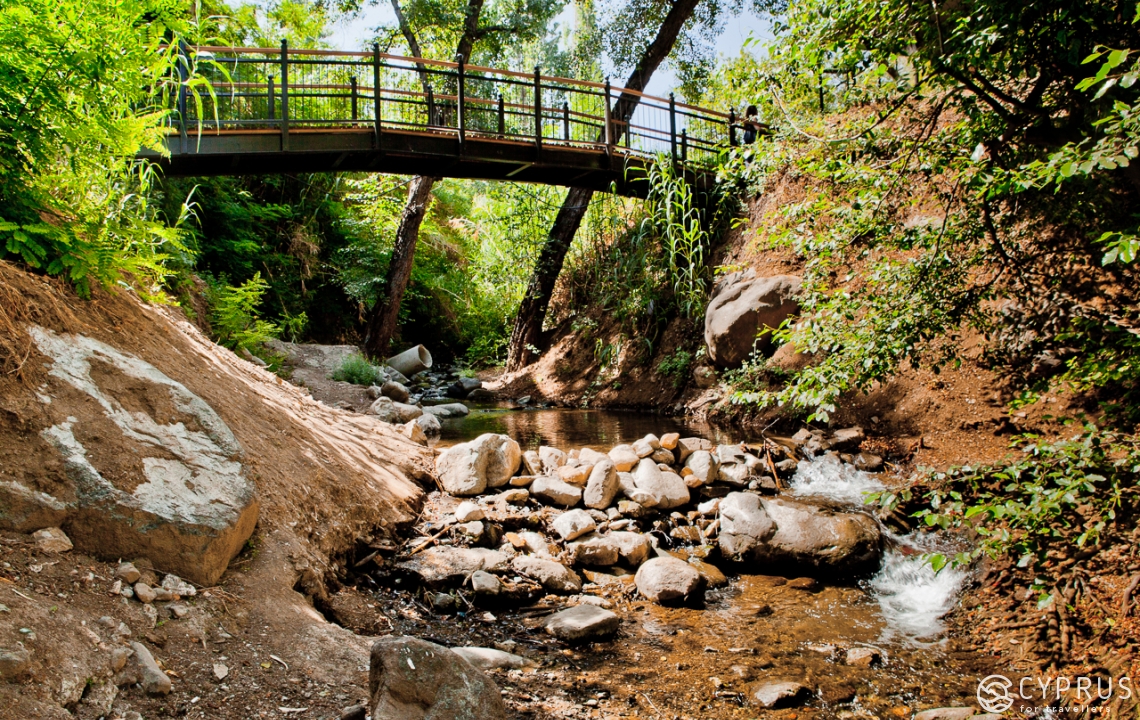
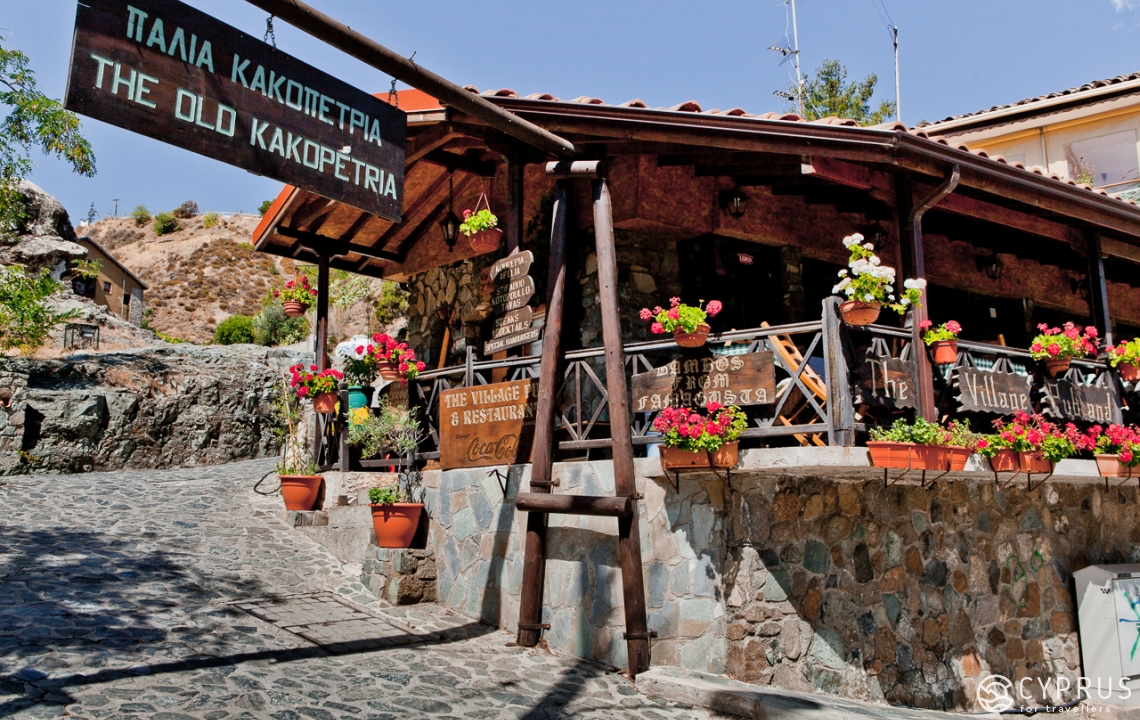
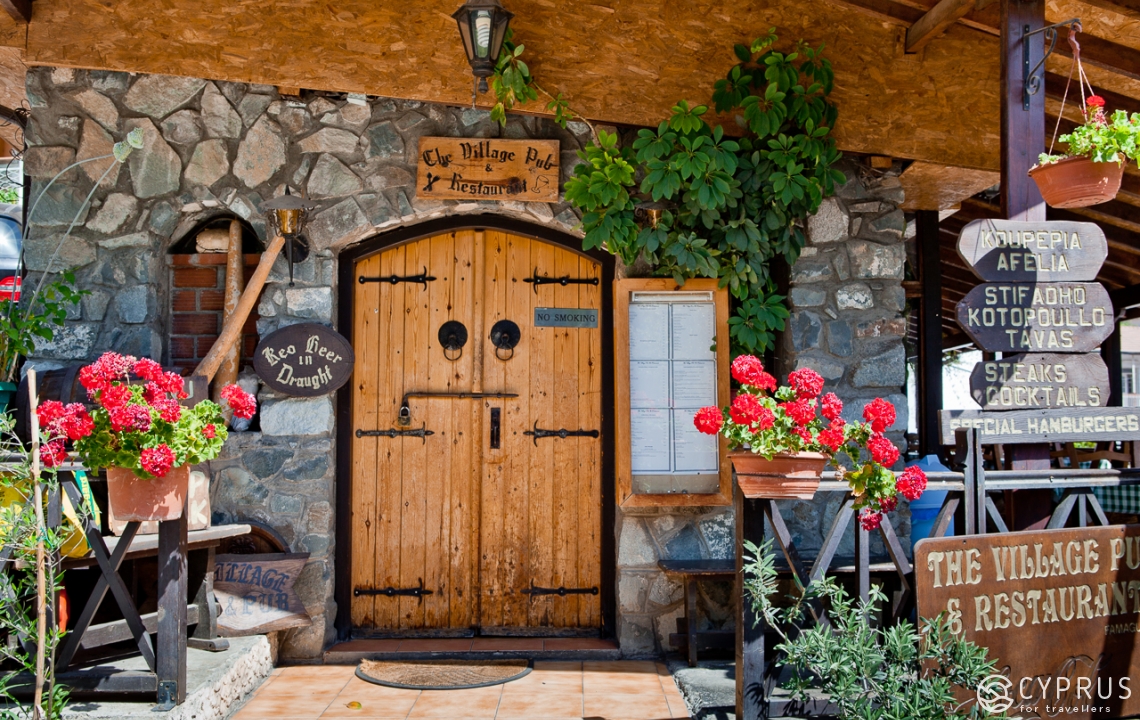
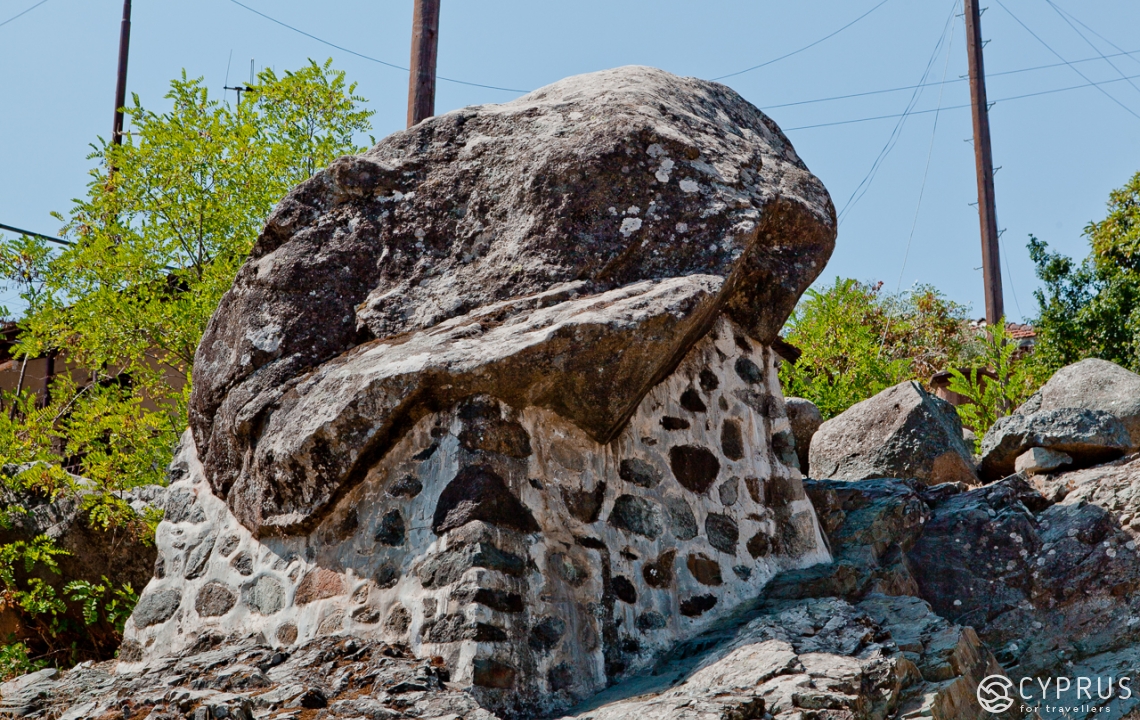
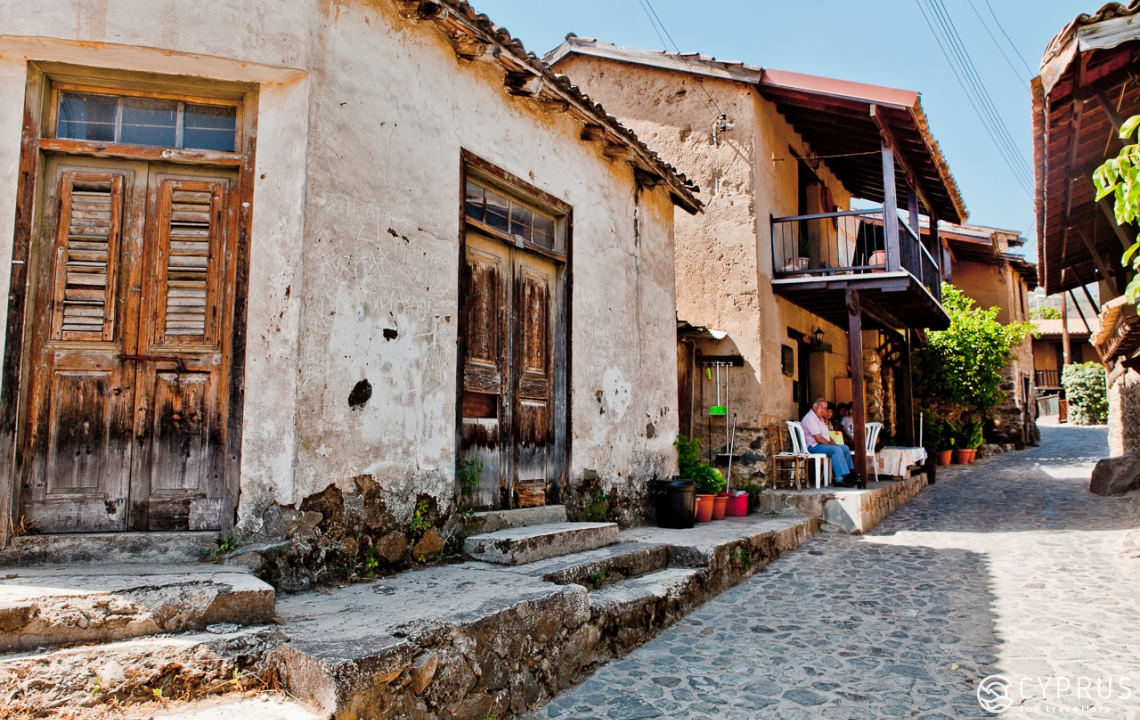

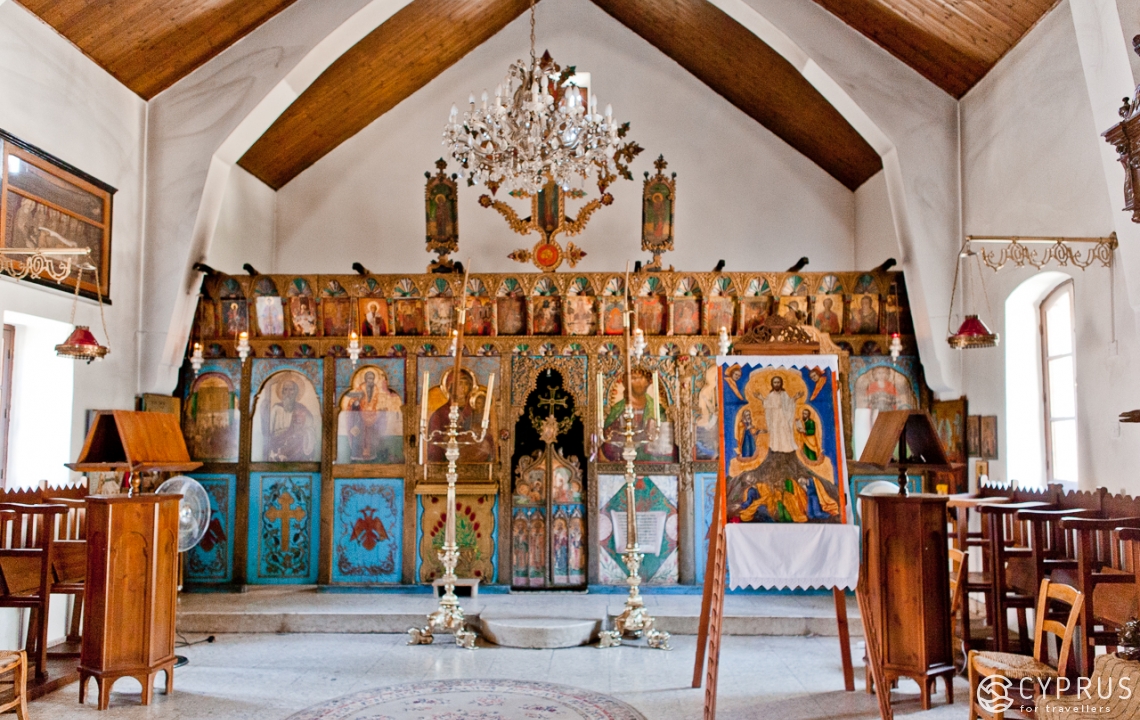
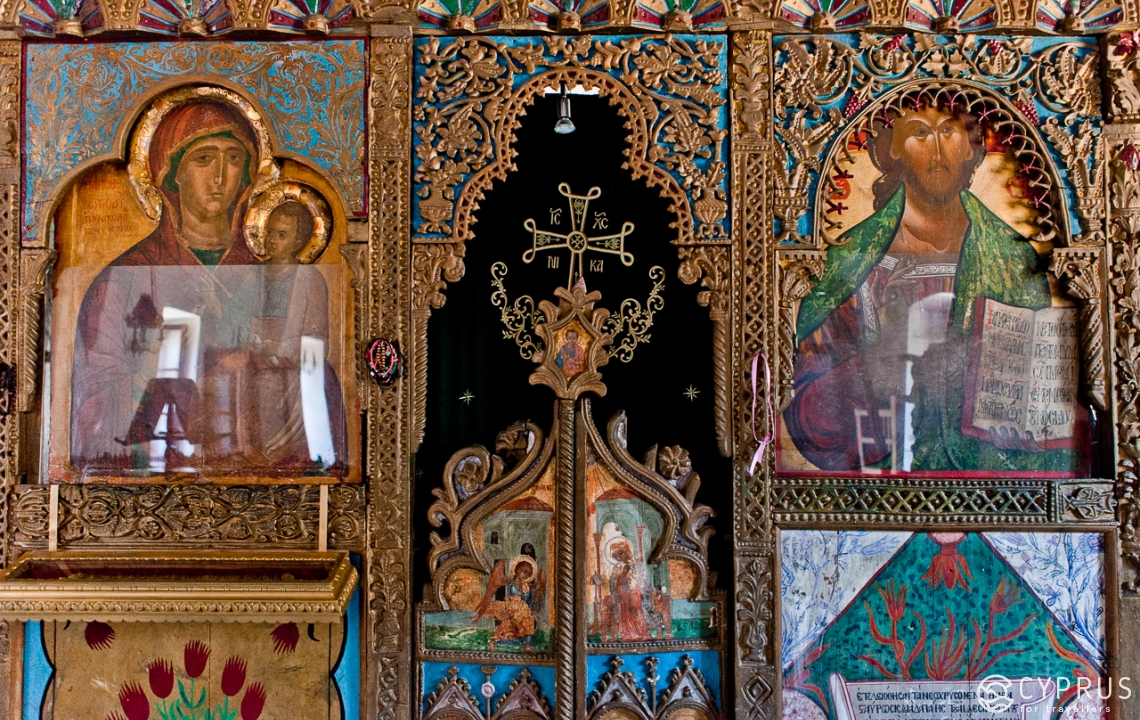



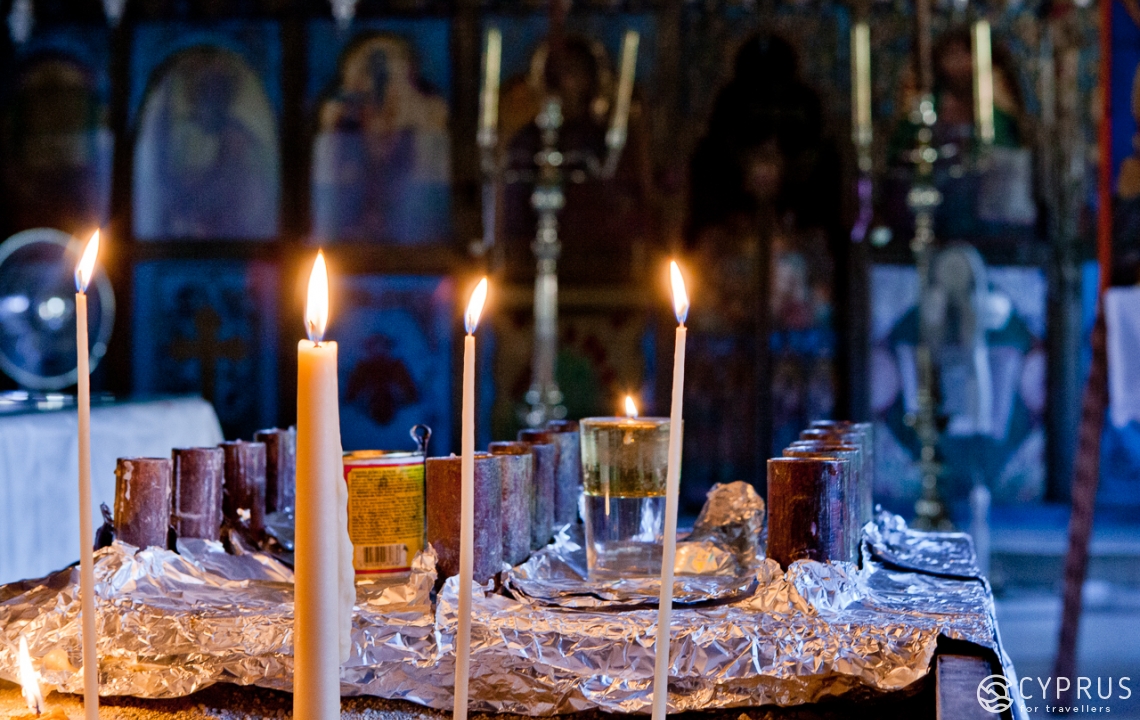


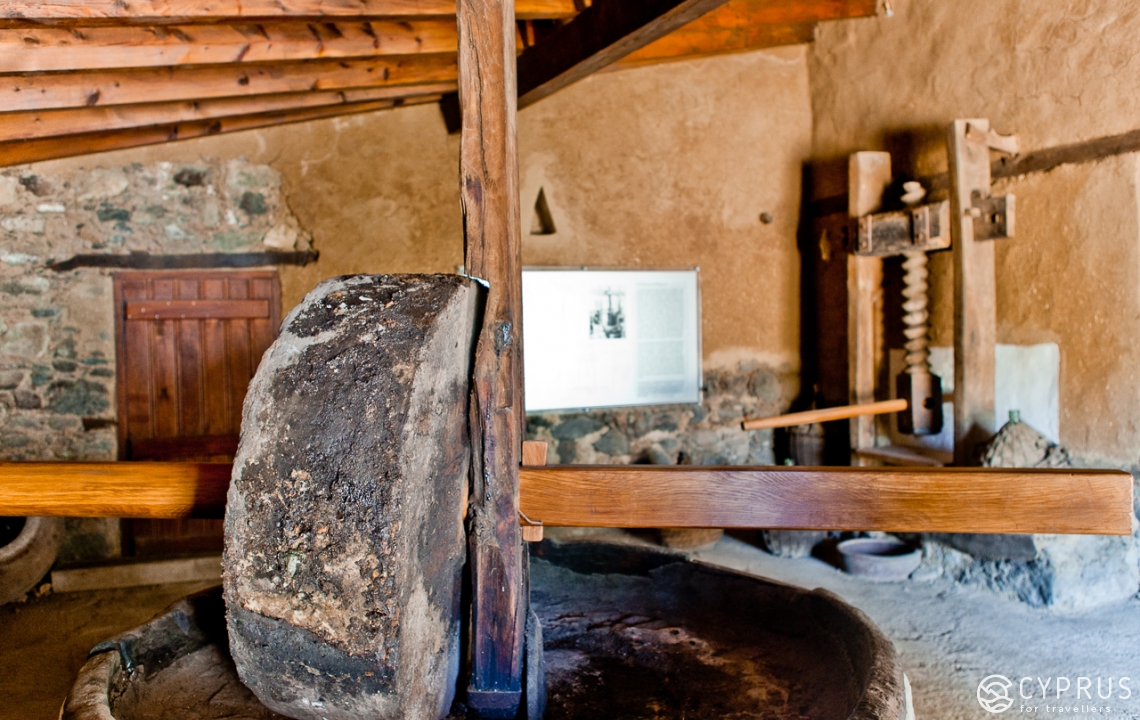
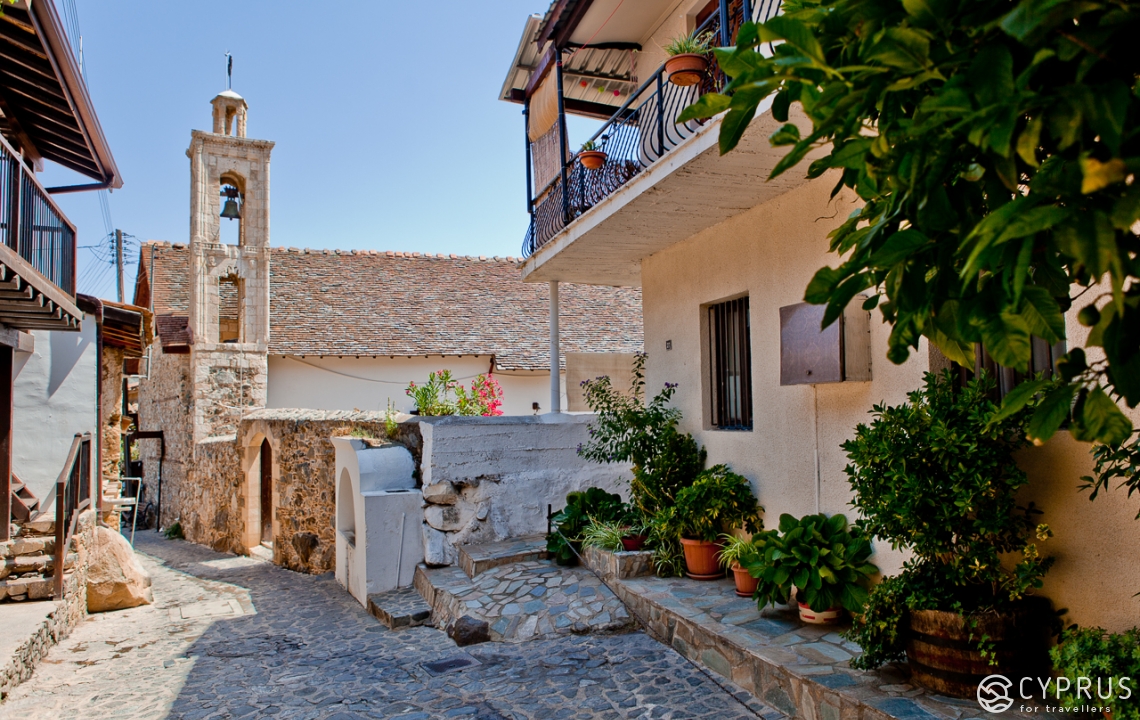
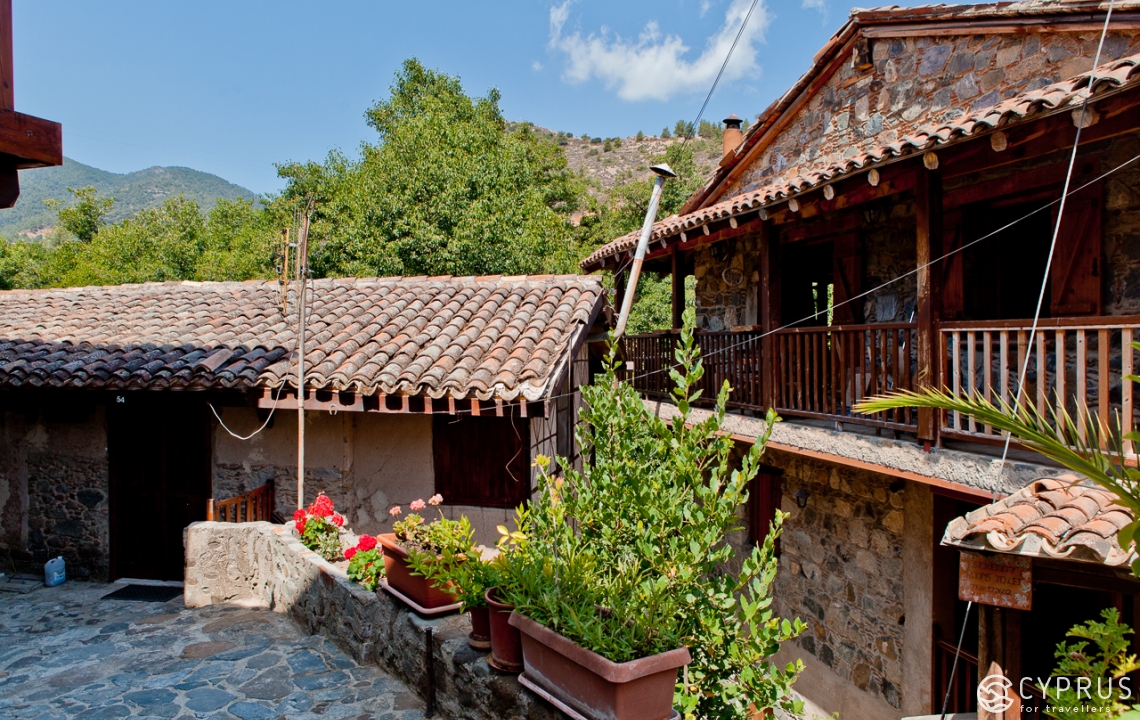
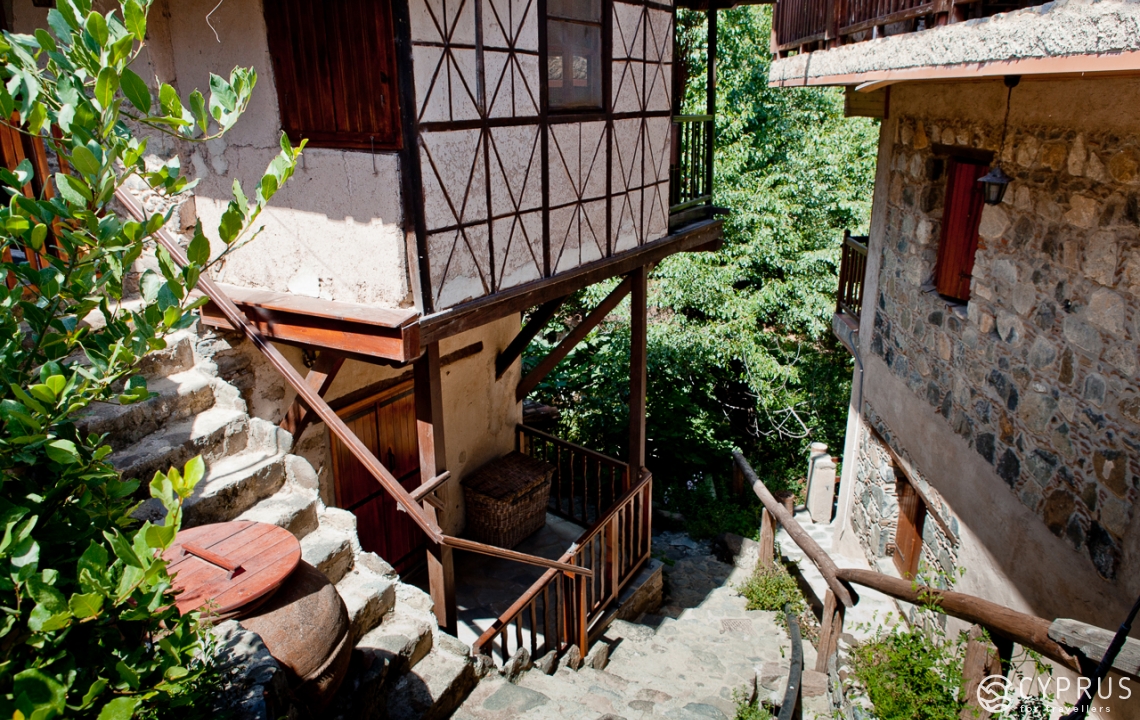
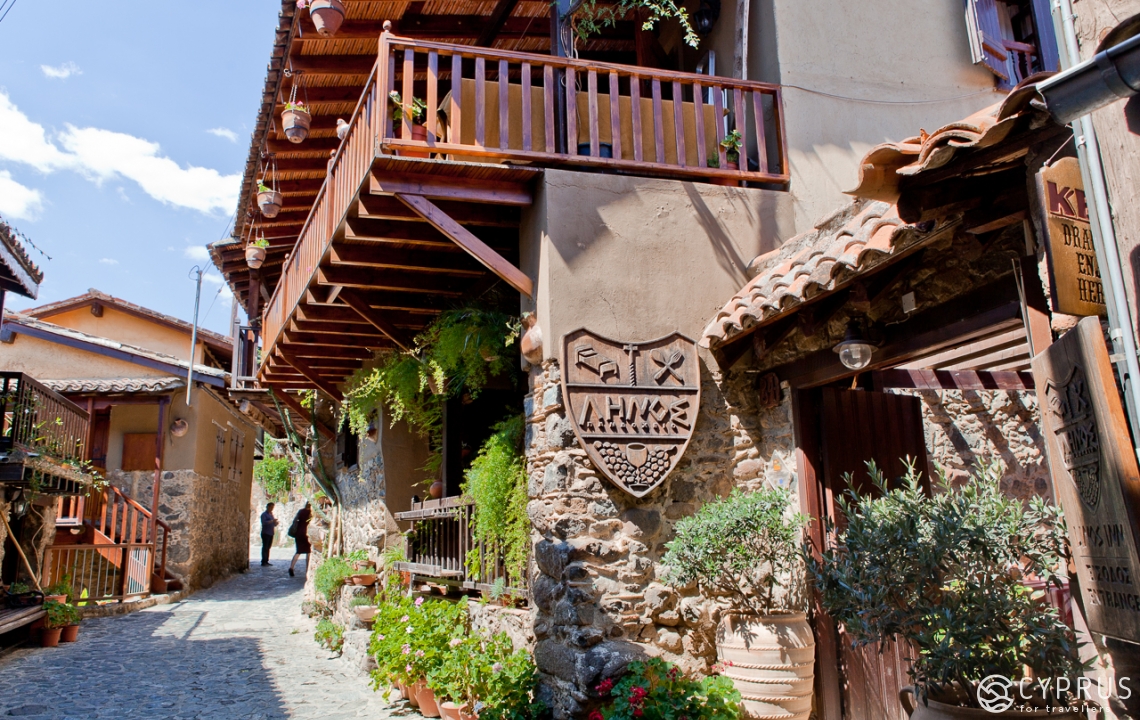


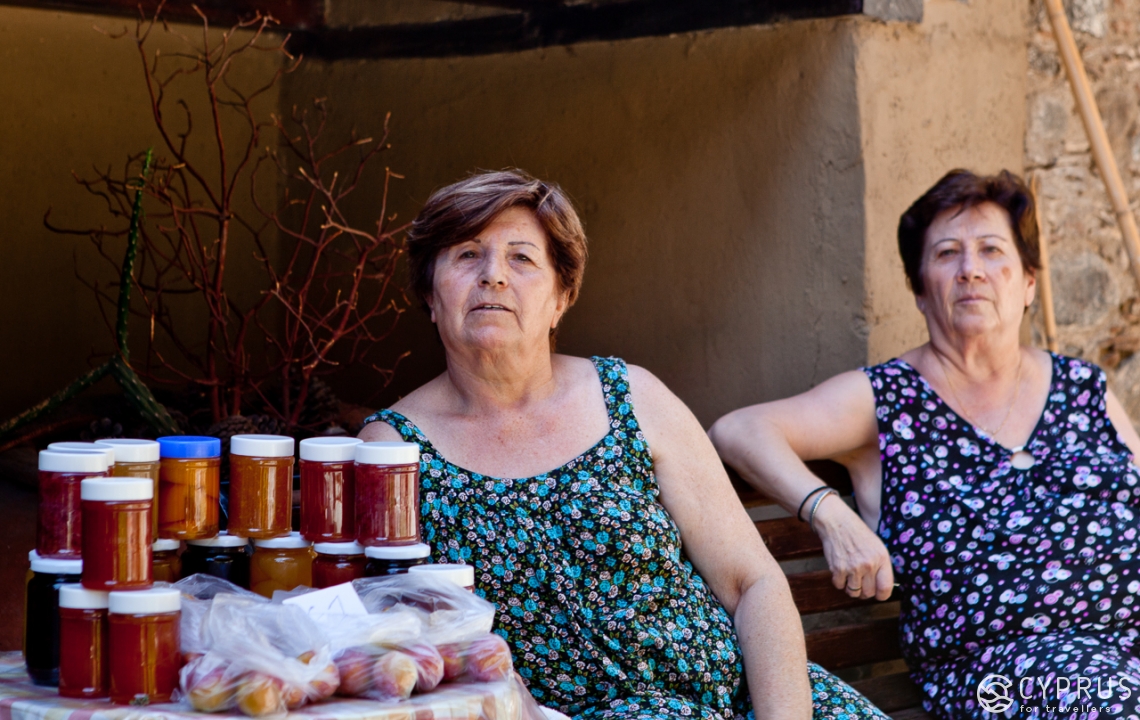
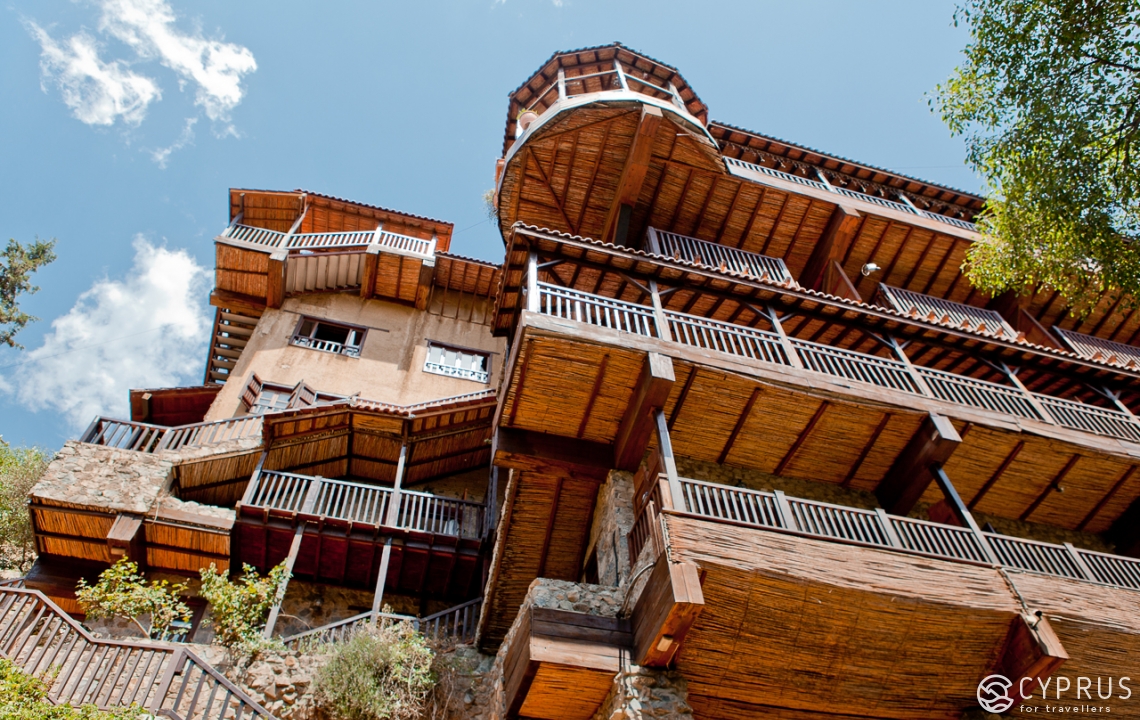
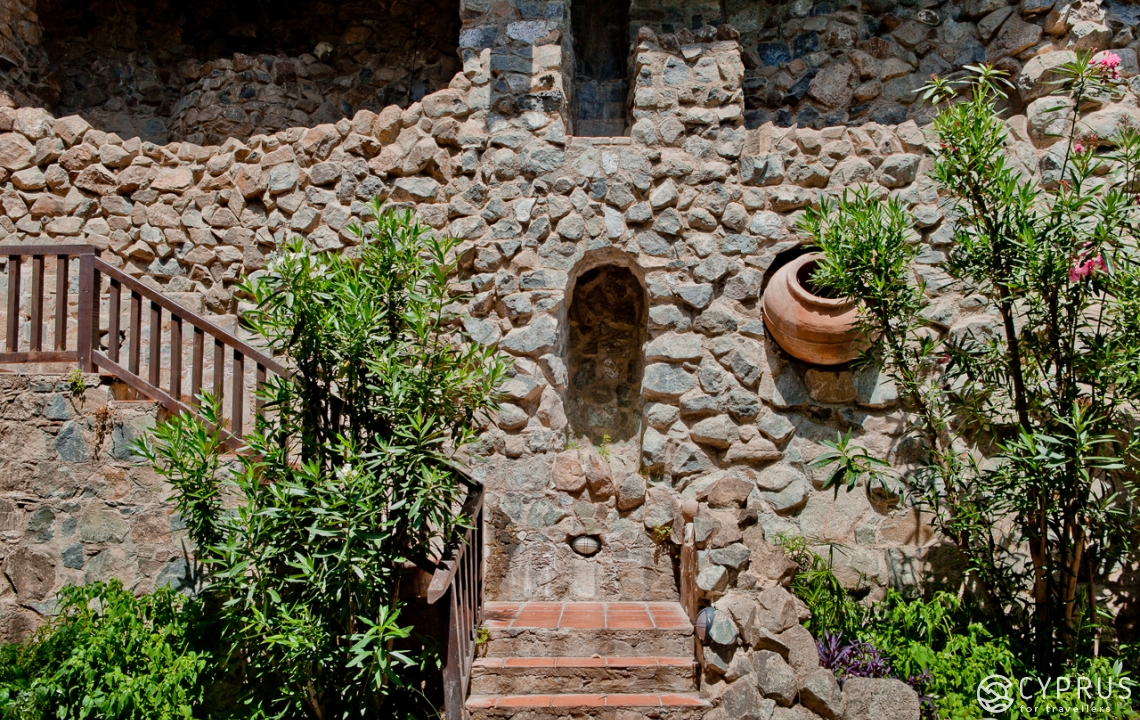

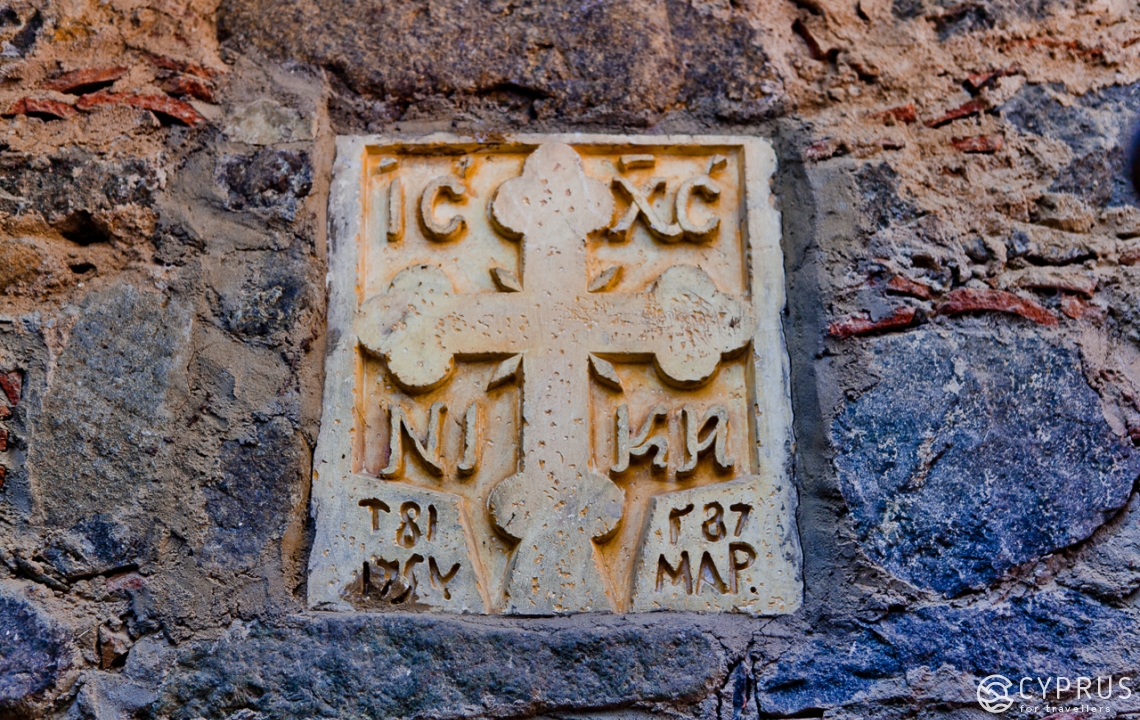
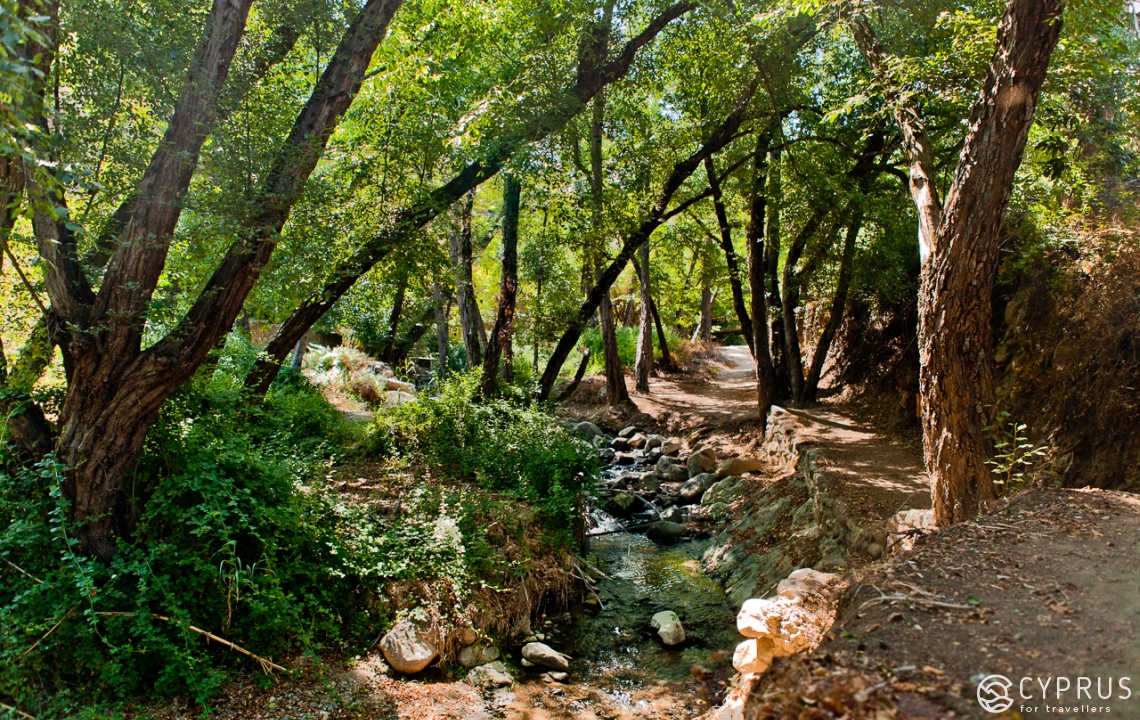
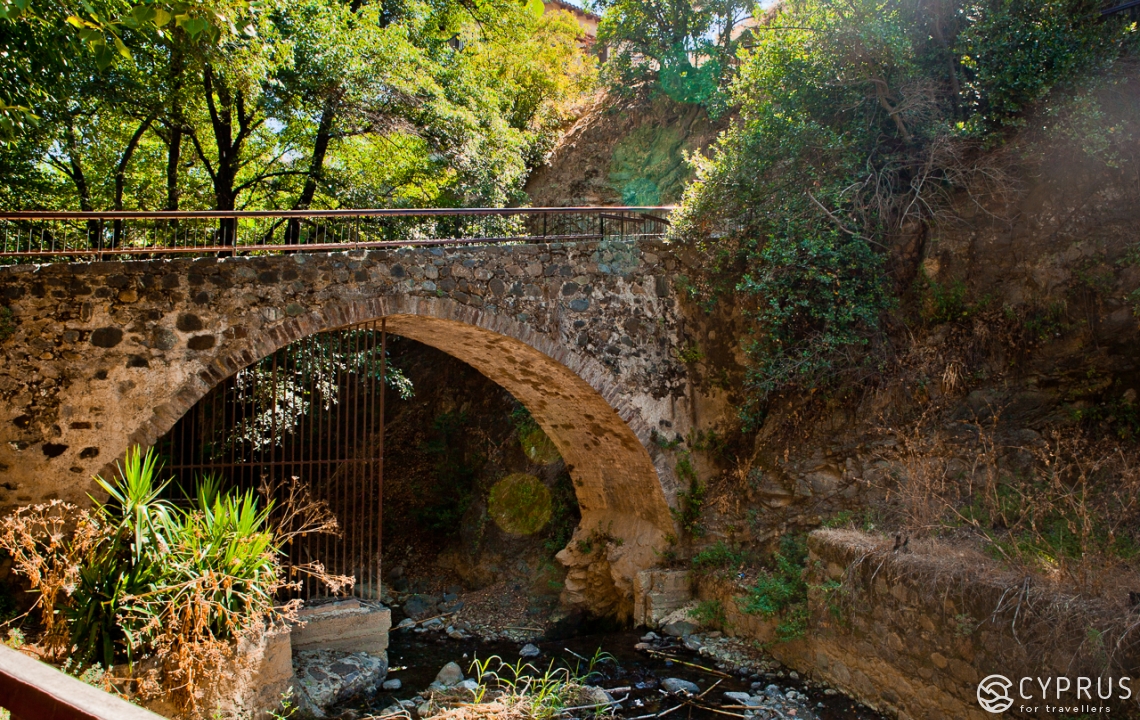

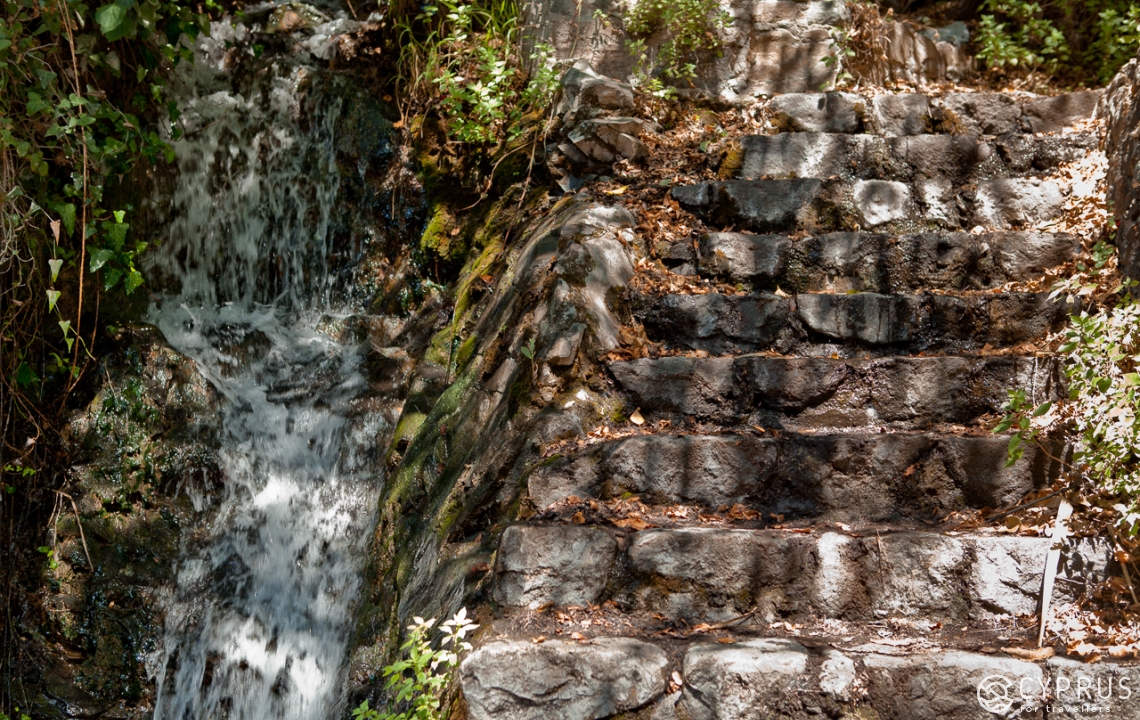

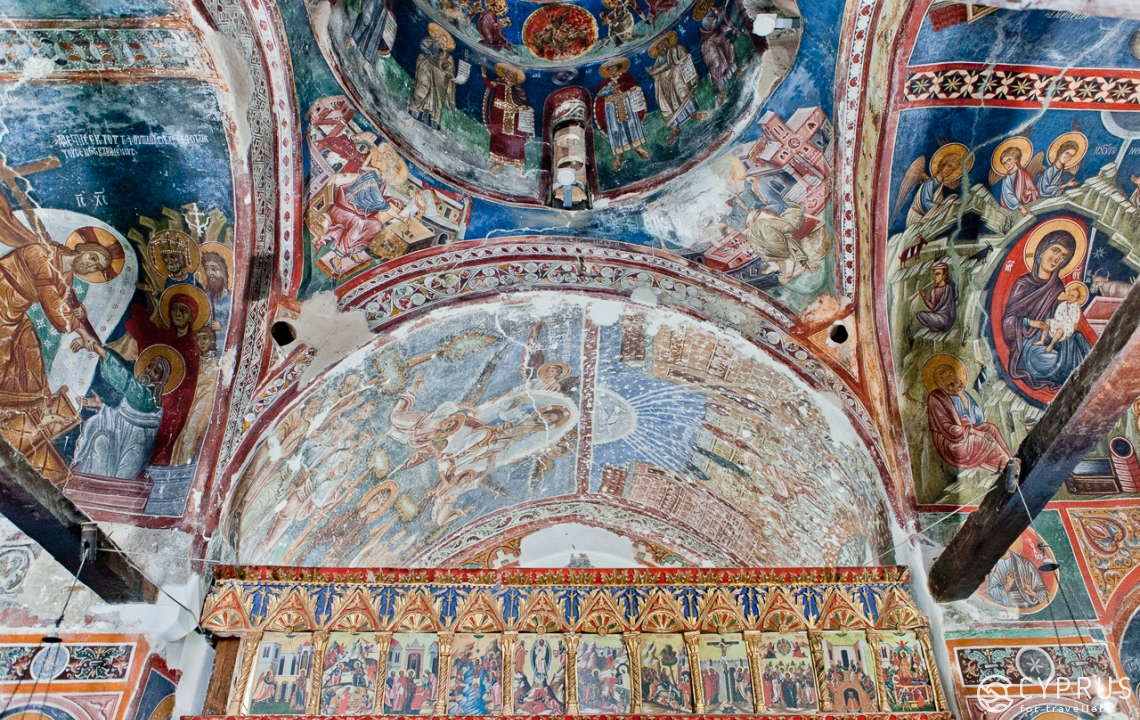
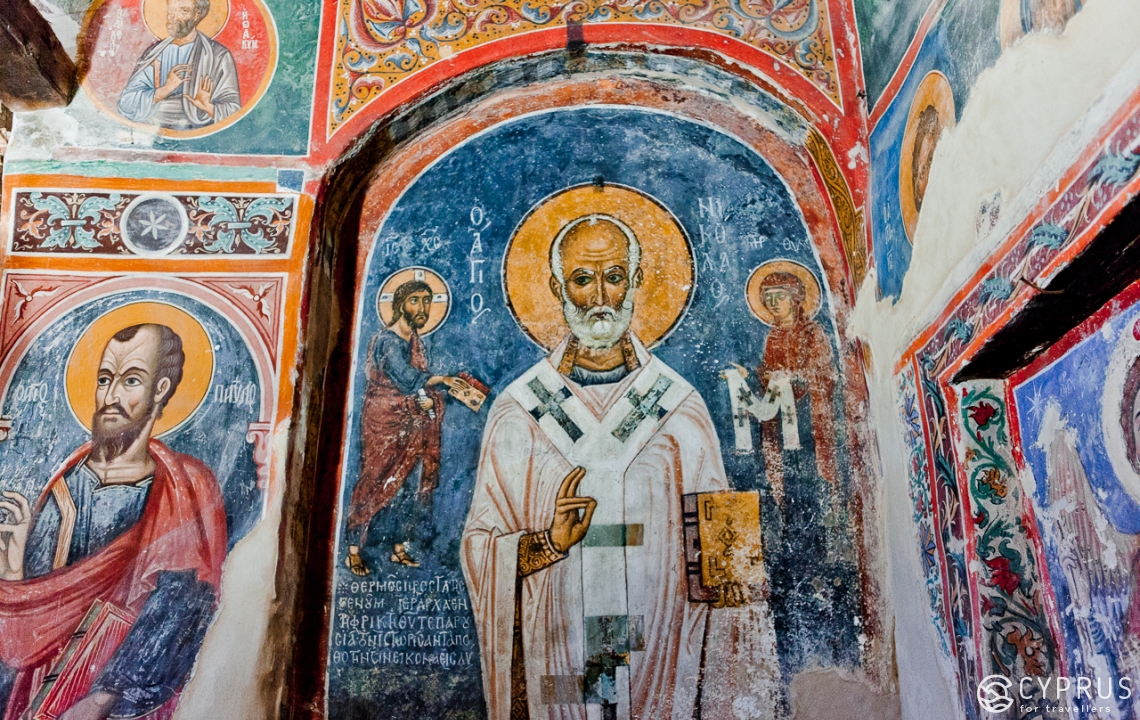
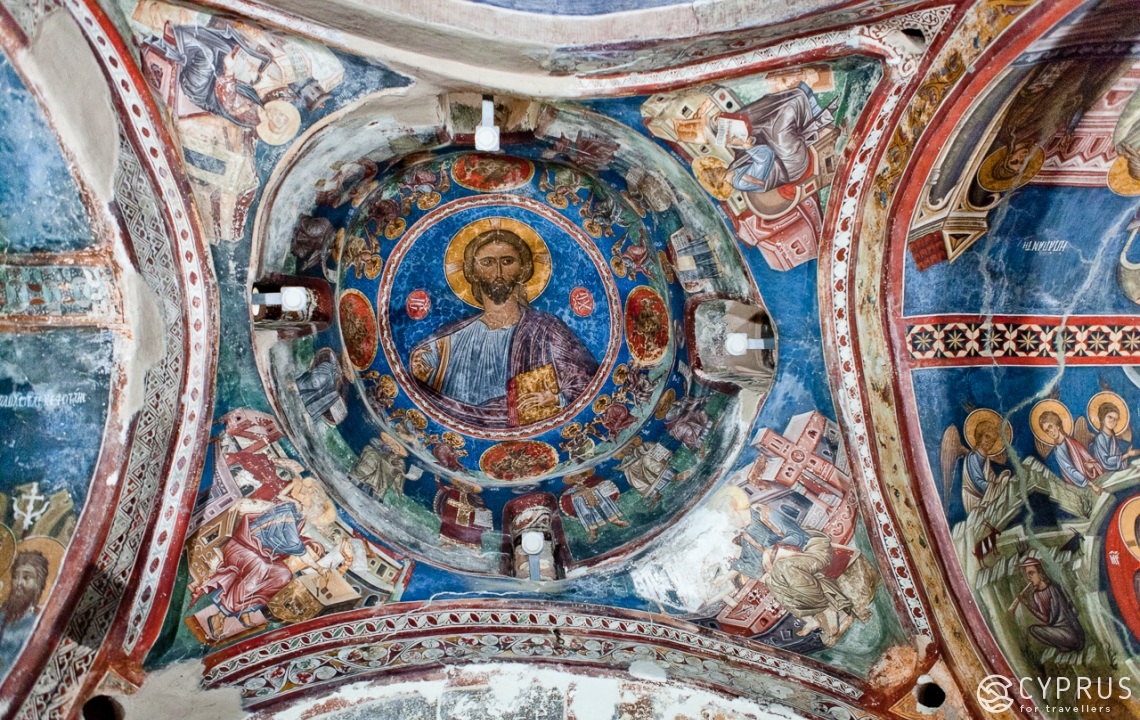
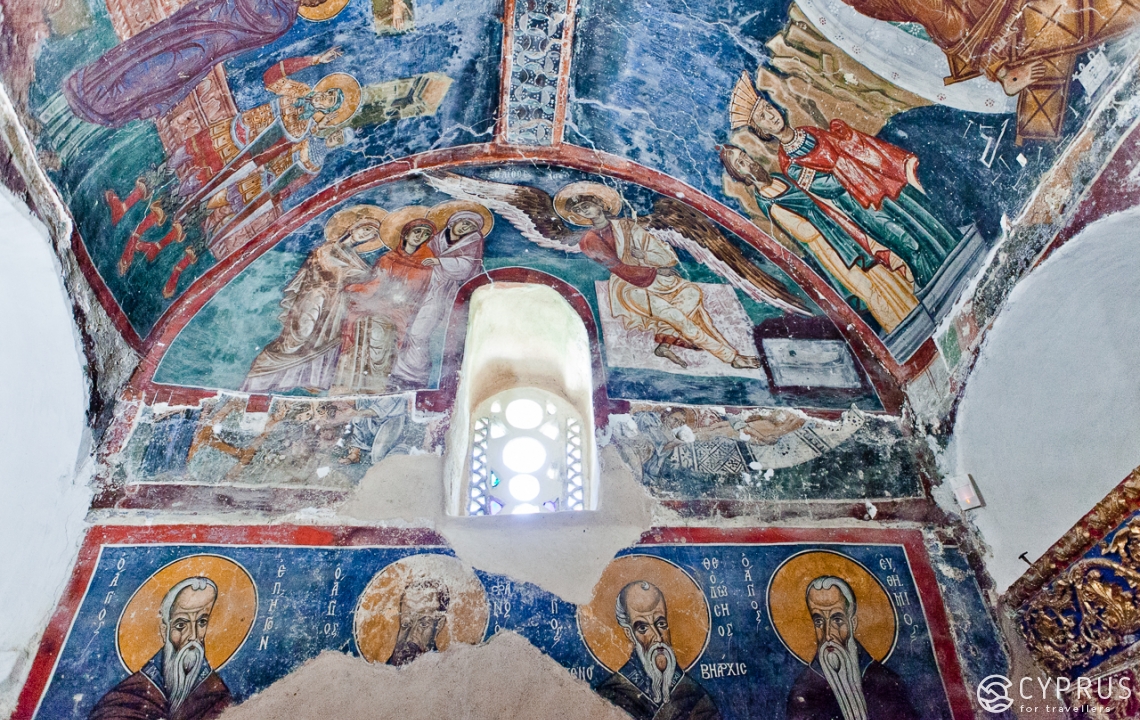

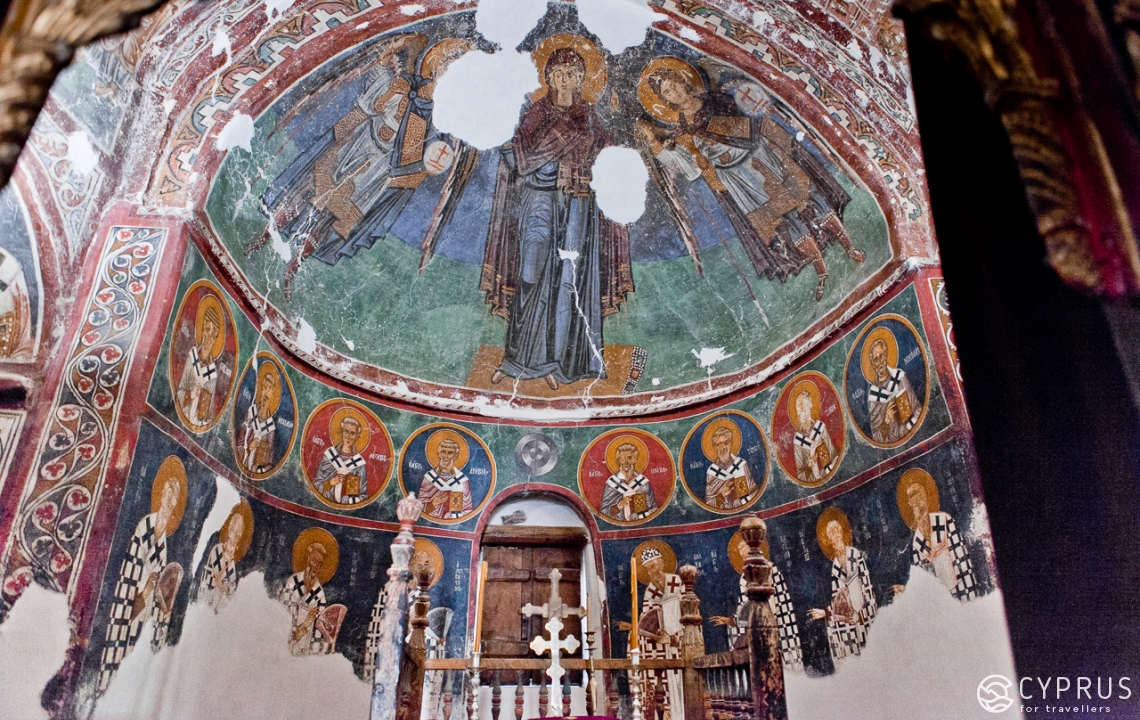
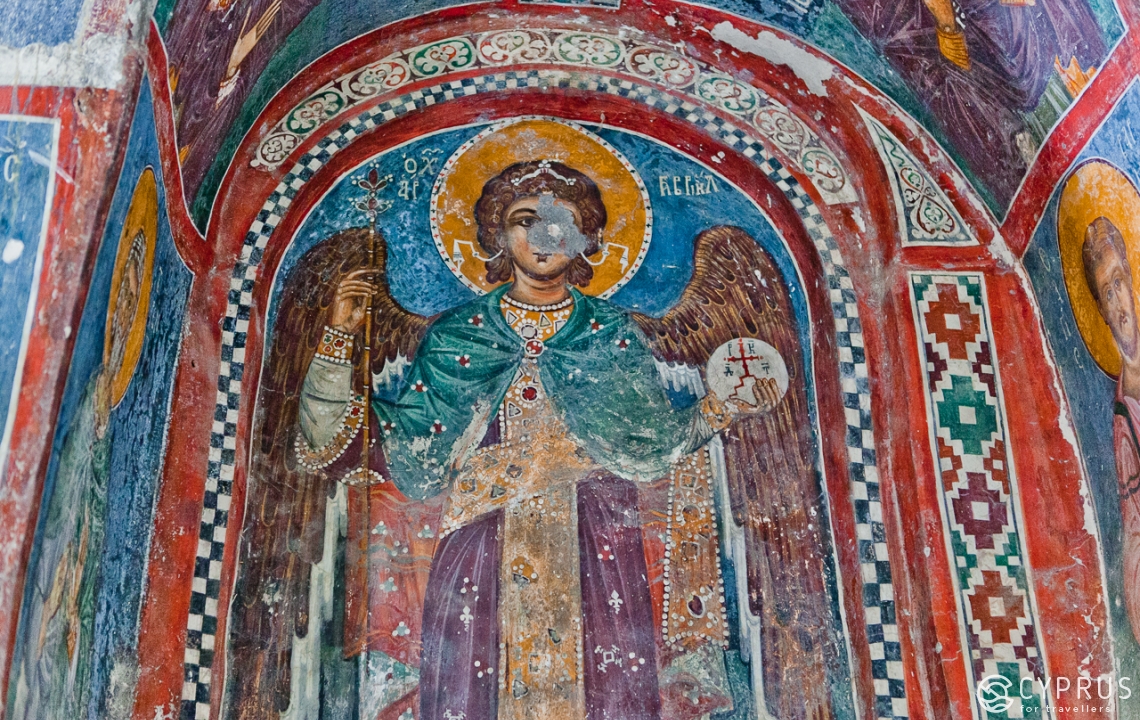

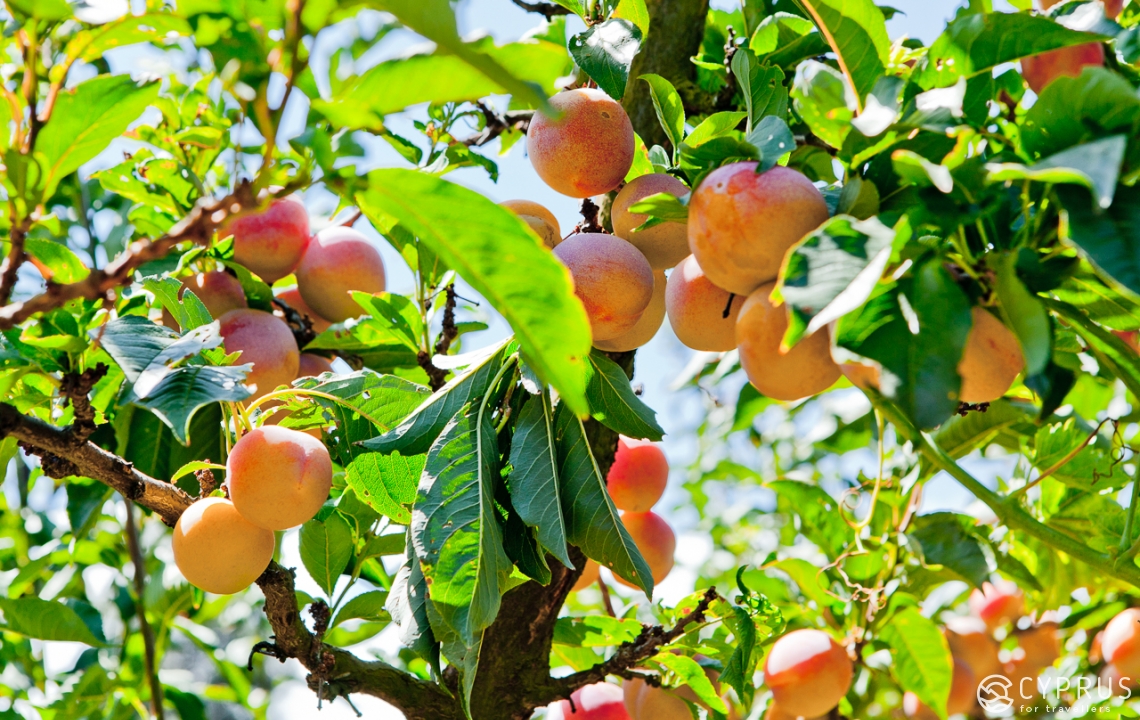


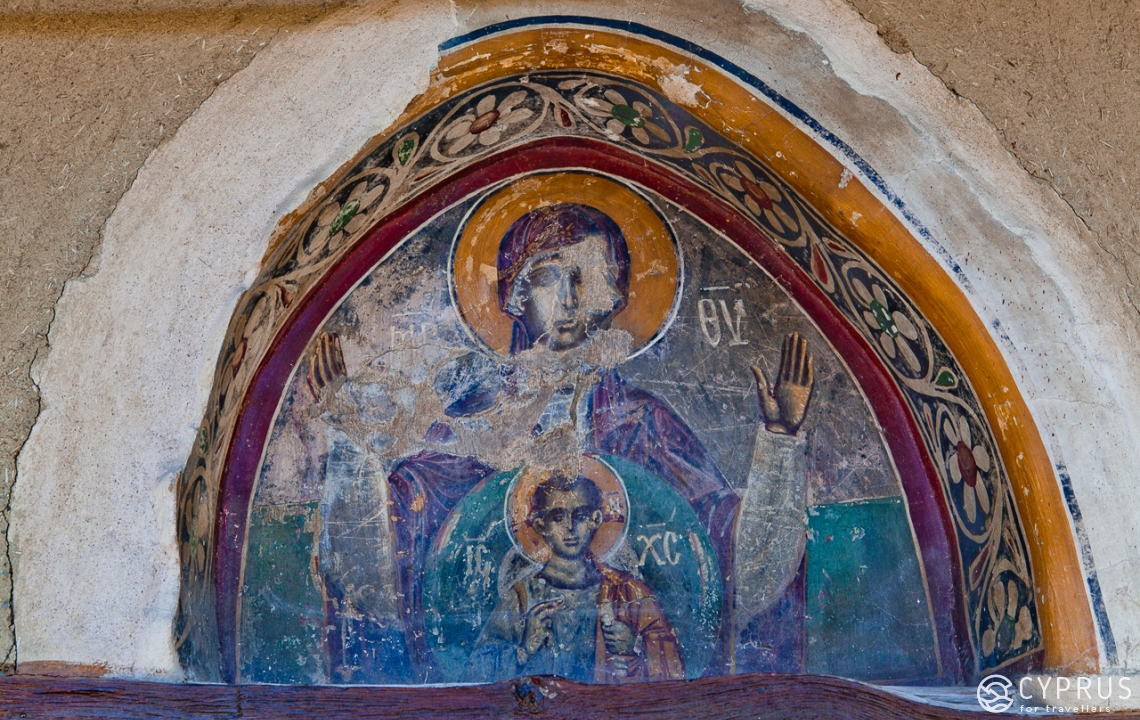
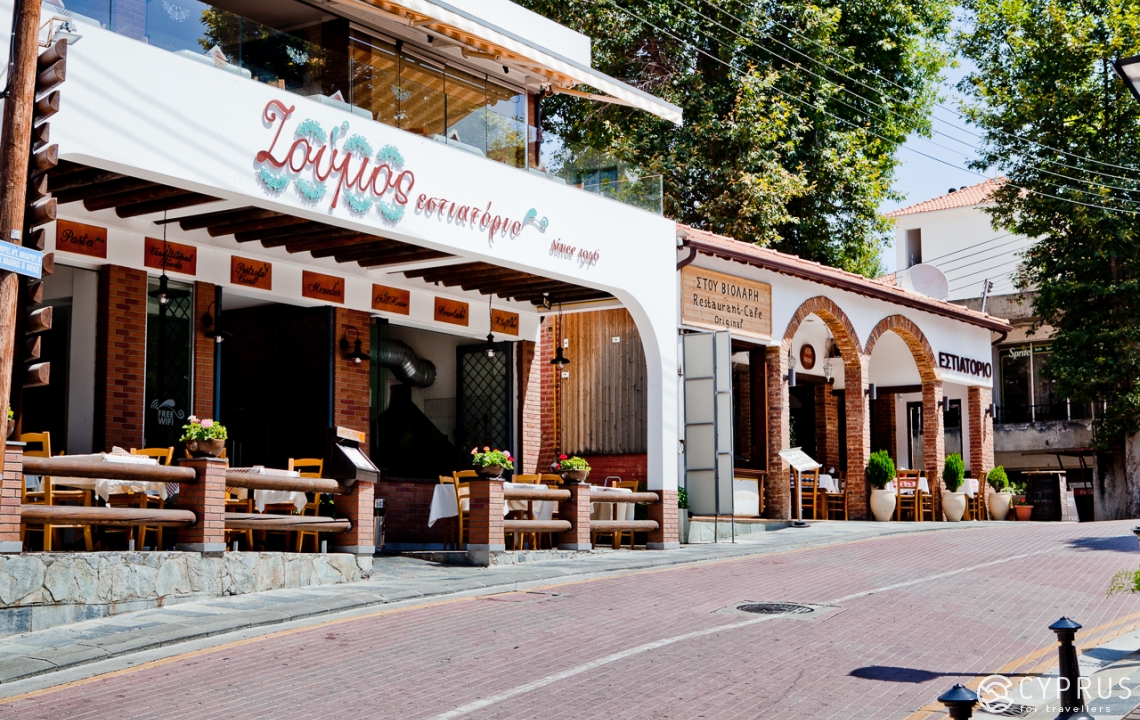
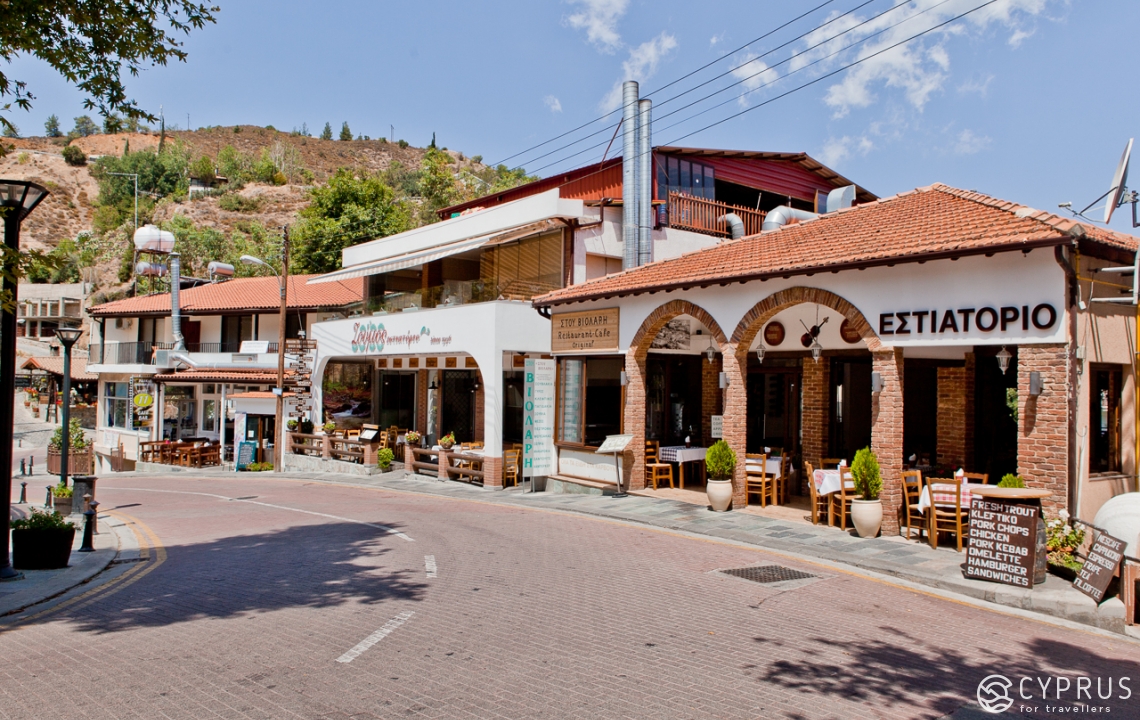
Behind Kakopetria, you witness the beginning of a beautiful, dense forest and the location of “Platania”, one of the largest and most popular picnic zones in Cyprus. When driving here, you feel as though you’re somewhere in Germany.
A level forest — without any mountains, elevations or significant fluctuations in height — is a rarity on the island. Here, on the other hand, you can freely walk amongst the trees with no fear of fracturing your leg or becoming exhausted from the endless slopes and ascents.
Once Platania is behind us, we exit out onto the crossroads where there’s a superb roadside eatery (the very one described in the first route we suggested) and find ourselves at the highest point in our journey. From here on, the road will only go downwards.
The forest now gradually becomes scarcer and scarcer, at some point disappearing entirely, and the air temperature will make a noticeable rise.
At one of the sites, you’ll be persistently pursued by signs categorically suggesting you stop by the waterfall, as it’s an inherent must. That being said, we recommend you don’t stop. The explanation for such an invitation is that entrance requires a fee. There are also several small restaurants located nearby and even a hotel which lives off the custom of tourists.
Naturally, there’s nothing wrong in having to pay to visit a waterfall. But… not too far away, there’s a heap of equivalent examples — also picturesque and completely free.
You can make the drive from the waterfall to Limassol with ease, not making any turn-offs. Some stunning hamlets will flash by along the way, as well as the mountains, valleys and a large reservoir.
You don’t have to make any turn-offs, but we’re still going to tell you about a couple of fascinating locations, so you can decide for yourself whether it’s worth spending your time on visiting them.
The first will appear after the village of Trimiklini, requiring a right-hand turn into the valley. You drive along the F815 main road, not turning off anywhere, and reach the village of Agios Georgios.
It doesn’t have any super sights, so to speak, but this works to its advantage, as tourists don’t come here. The village is tiny and doesn’t even have any shops. Still, in truth, there’s a small tavern.
The streets are narrow. Orange and almond trees envelop you from all angles; by the way, the oranges here seem to be the tastiest in Cyprus. An almond lying on the ground, semi-dried from the sun, is also a fantastic spectacle, and nothing like what you'll find in shops. The houses are beautiful, clean and tidy, with flowerpots outside. There’s also a church. In one spot, an enchanting view of the valley below is revealed. Go forth and imbue yourself with the spirit of Cyprus while chewing on an almond!
You can get to the second location by turning off before the reservoir, onto the E613. Firstly, the road itself here is stunning: a winding road creeping along the water’s edge. Secondly, where we’re going is a sublime, level expanse of coniferous forest not far from Limassol. The depths of the forest have concealed an abandoned horse farm with a racecourse and the ruins of houses.
Having walked and driven around the reservoir and forest, we return to the main road and fly straight on to Limassol, now a stone’s throw away. You can use the A1 motorway to go back, getting there at a rapid pace without any stops.
5
Jeep-trip
Akamas
We likely won’t compile a detailed route this time, as here it’s better to choose for yourself where to go. We’ll warn you immediately, however, that if you’re in a standard, compact car, there’s nothing for you to do in Akamas. An off-roader or quad-bike will be ideal here. Cars with a wide clearance, as well as bikes and scooters, are also a possible option. But be careful.
Akamas is a nature reserve on a peninsula. The westernmost point of Cyprus. If you’re feeling the need for a lot of sea, crazily beautiful beaches, an evergreen forest, mountains and the absence of a large number of tourists — then this is where to go...
The roads in Akamas vary in quality, but there are no asphalt tracks whatsoever. You’ll have to drive over giant puddles in places, and avoid boulders sticking directly out of the road. It’s so bad in some spots that the “stylish autobahns” of northern Russia involuntarily come to mind.
It takes roughly 23 km to drive along the entire coast until the furthermost point of the peninsula, leading out to the sea. And the same distance applies going back. But thanks to a complex relief and a large number of different, poor-quality roads spiderwebbing the peninsula — you can race around here all day long.
Out of the must-see spots in Akamas, we’ve highlighted the following:
Avakas Gorge — a unique, stunning monument of nature. The gorge is rather long, expanding in some places and then drooping above your head at other times. In some spots, the gorge walls are covered in moss along which you can see water flowing. A small stream runs at the bottom of Avakas, while somewhere above, mountain goats wander around bleating. The air temperature is always lower than outside the gorge. It is believed that at the end of Avakas lies an entrance into the minotaur’s lair. But don’t try to reach it — you’ll break both your legs.
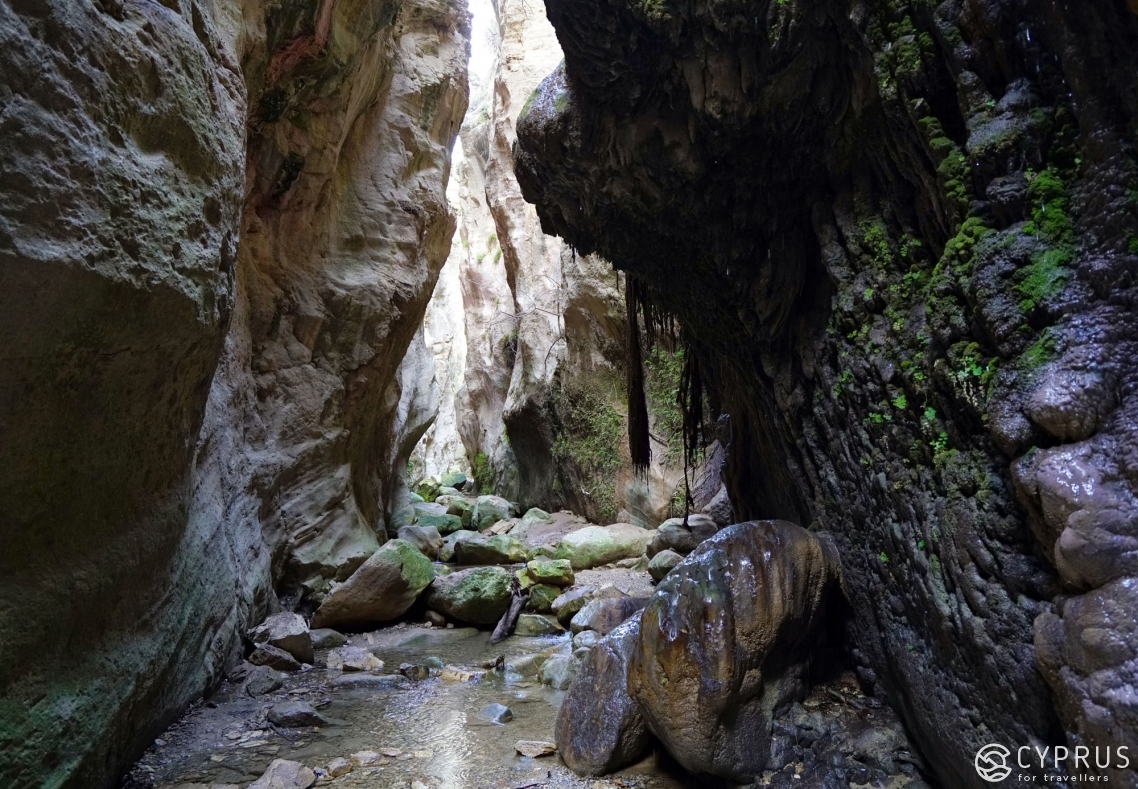
The Baths of Aphrodite — a small grotto with a fountain, and an extremely popular tourist spot. According to legend, this was where the Greek goddess preferred to bathe. Why would we be any worse?Next to the baths, you can see some medieval ruins and a 500-year-old oak tree.
The nature pathway of Aphrodite and Adonis, where you can follow in the footsteps of the Goddess and her beloved, simultaneously feasting your eyes on the amazing panoramic views of Akamas.
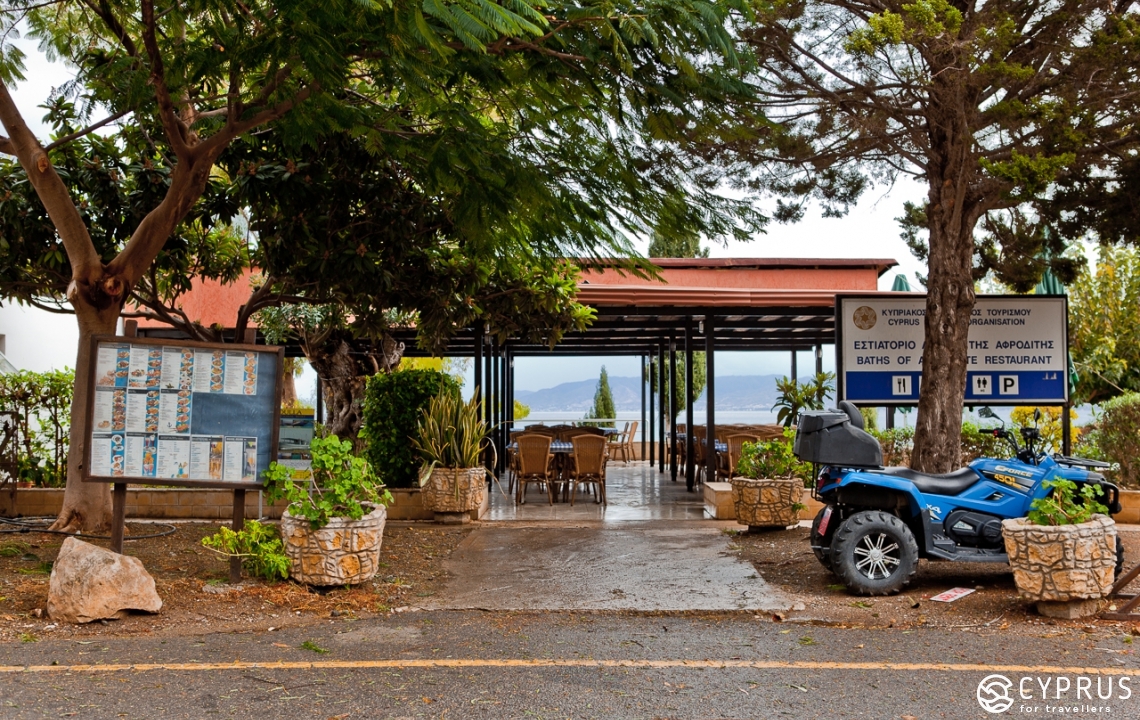
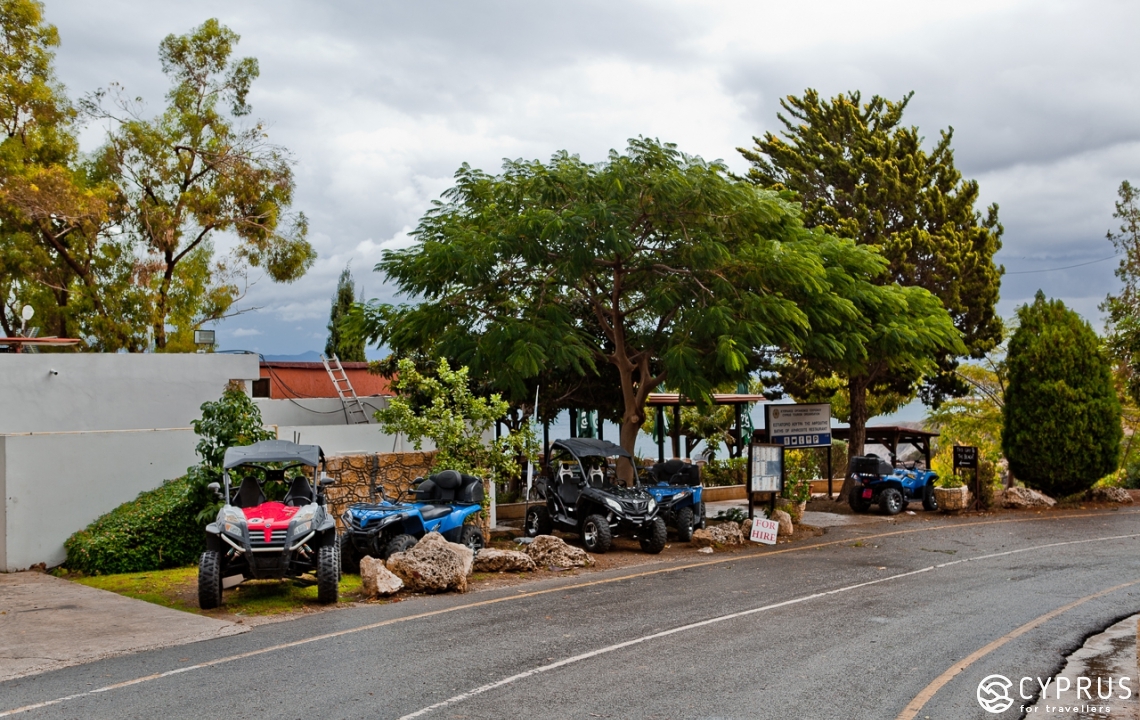

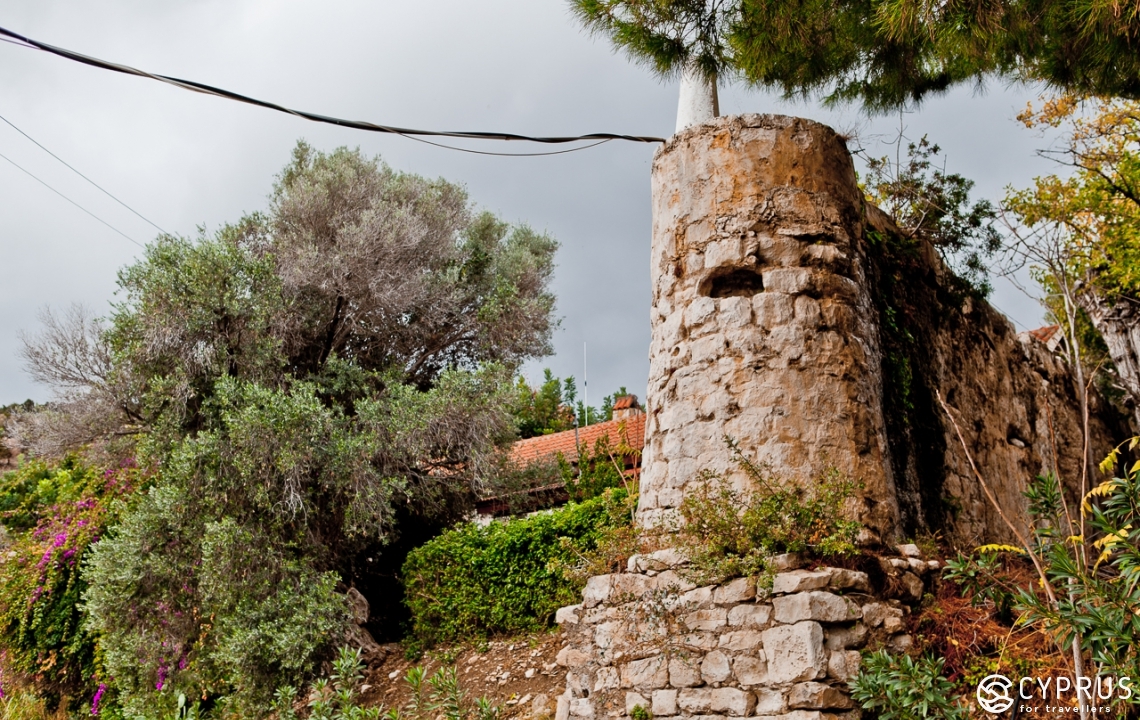
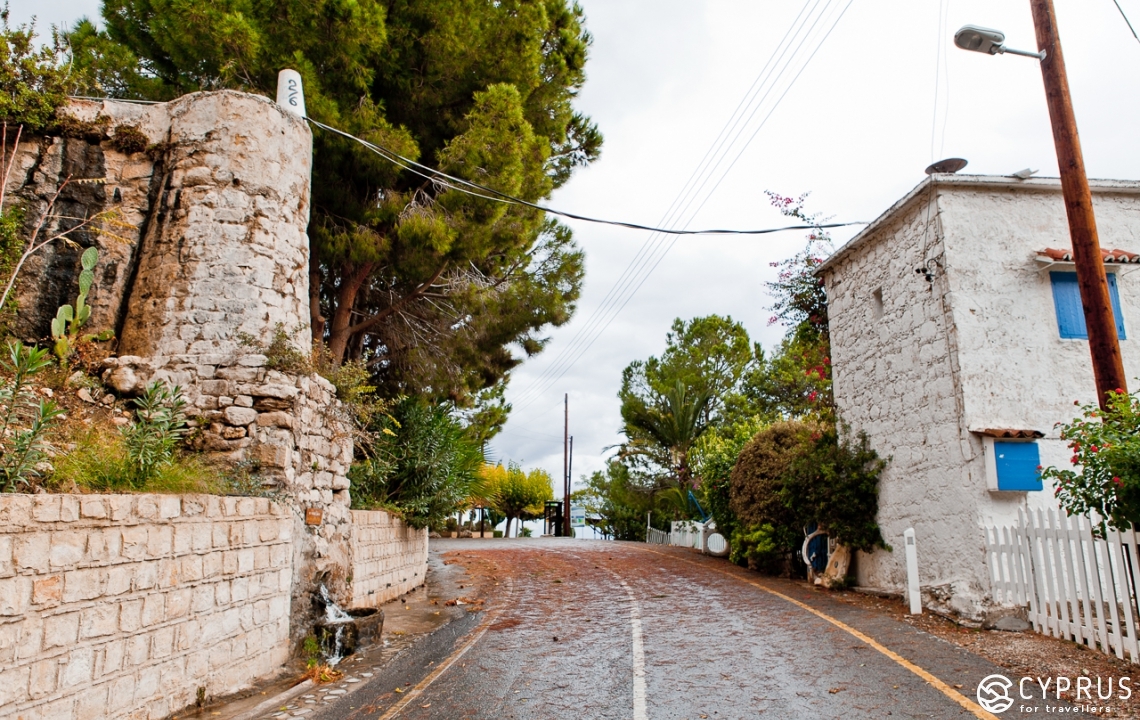
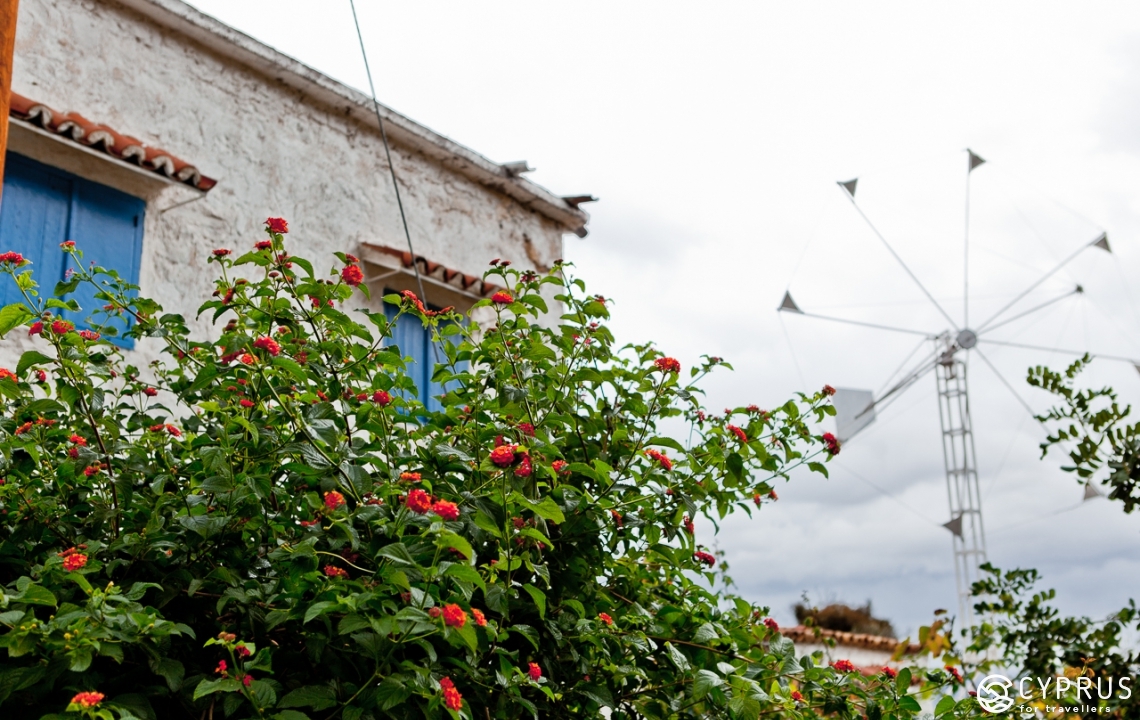
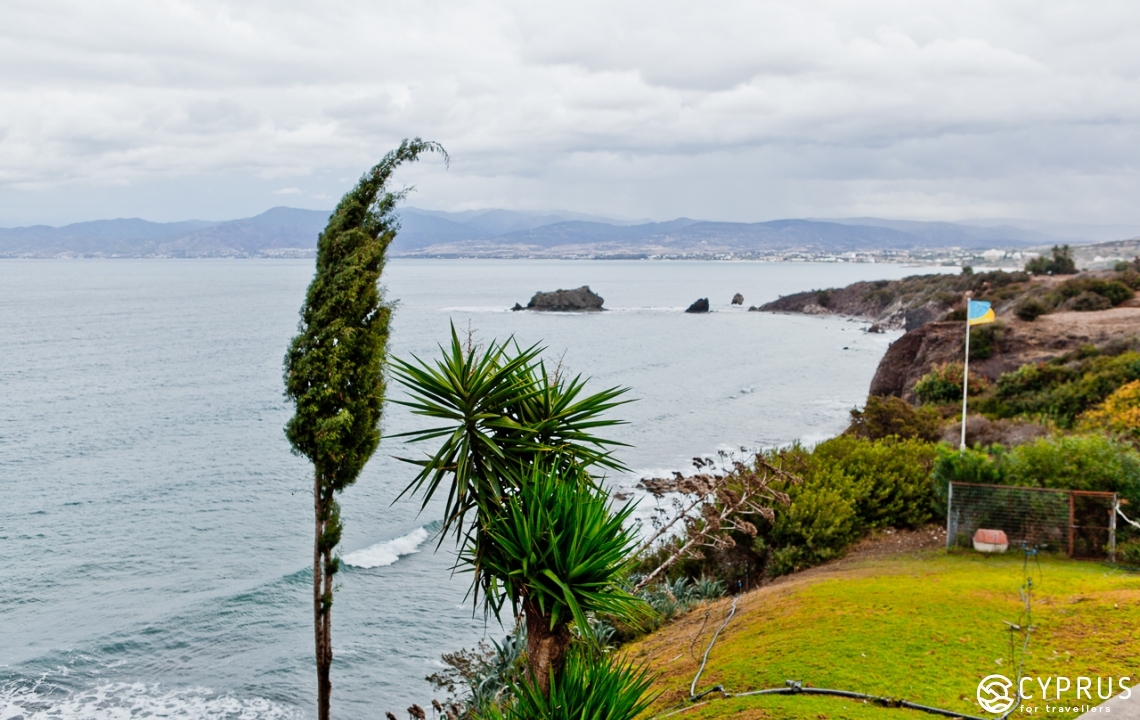


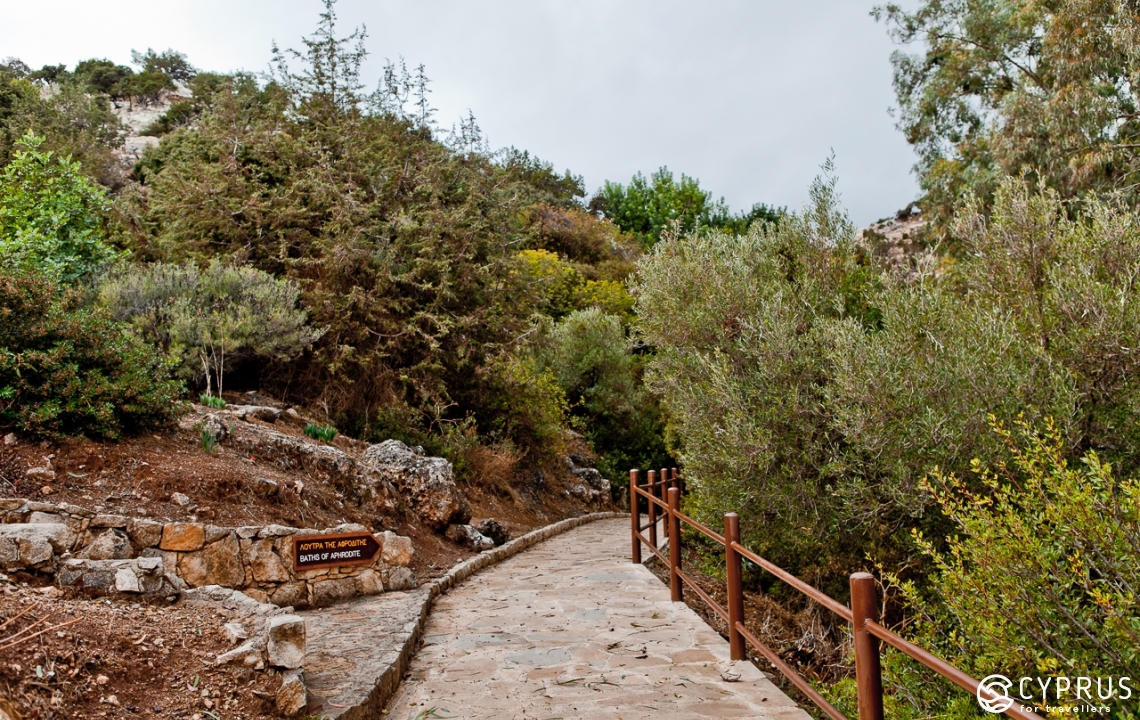
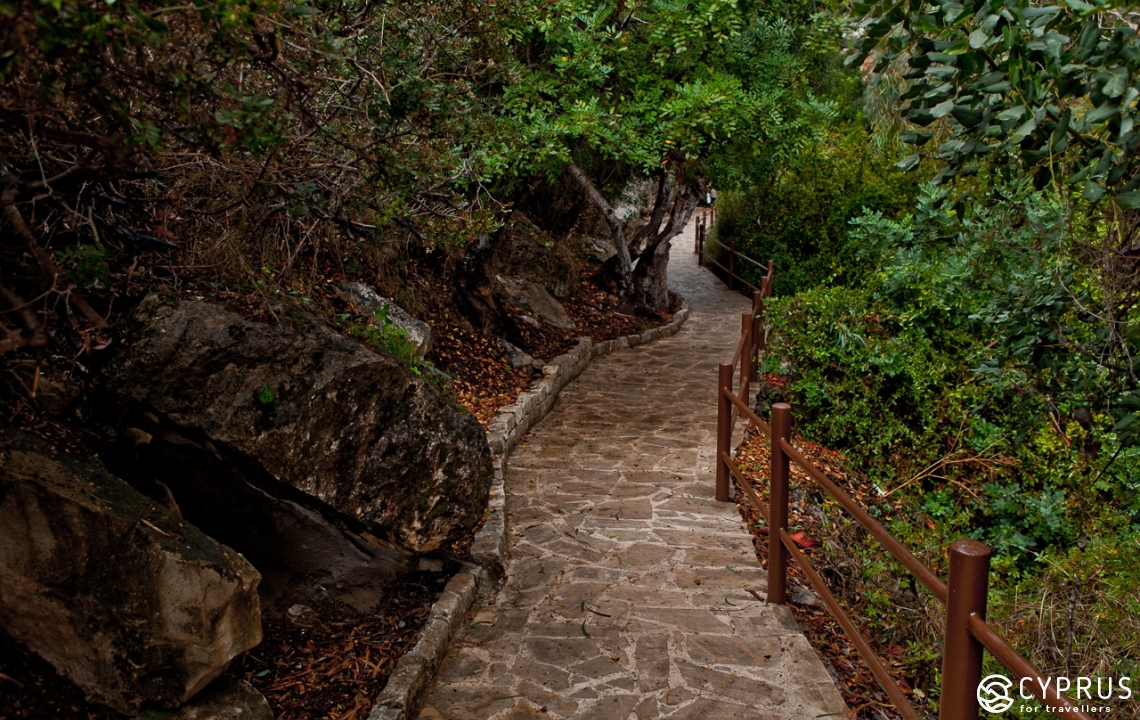

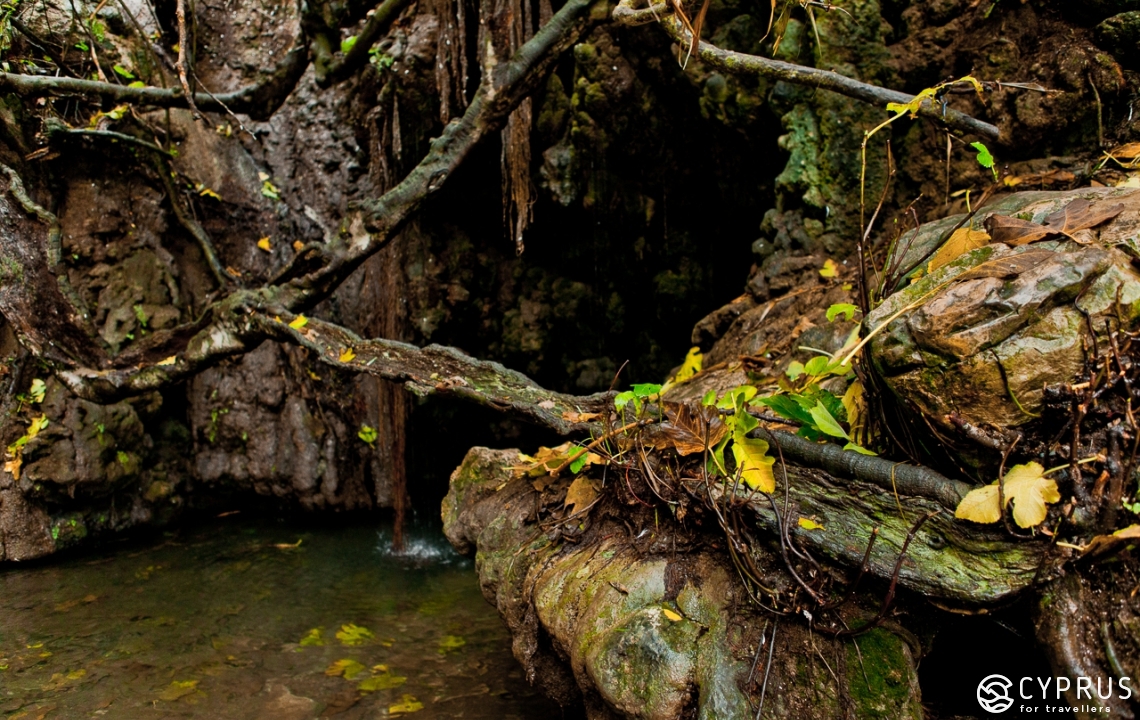

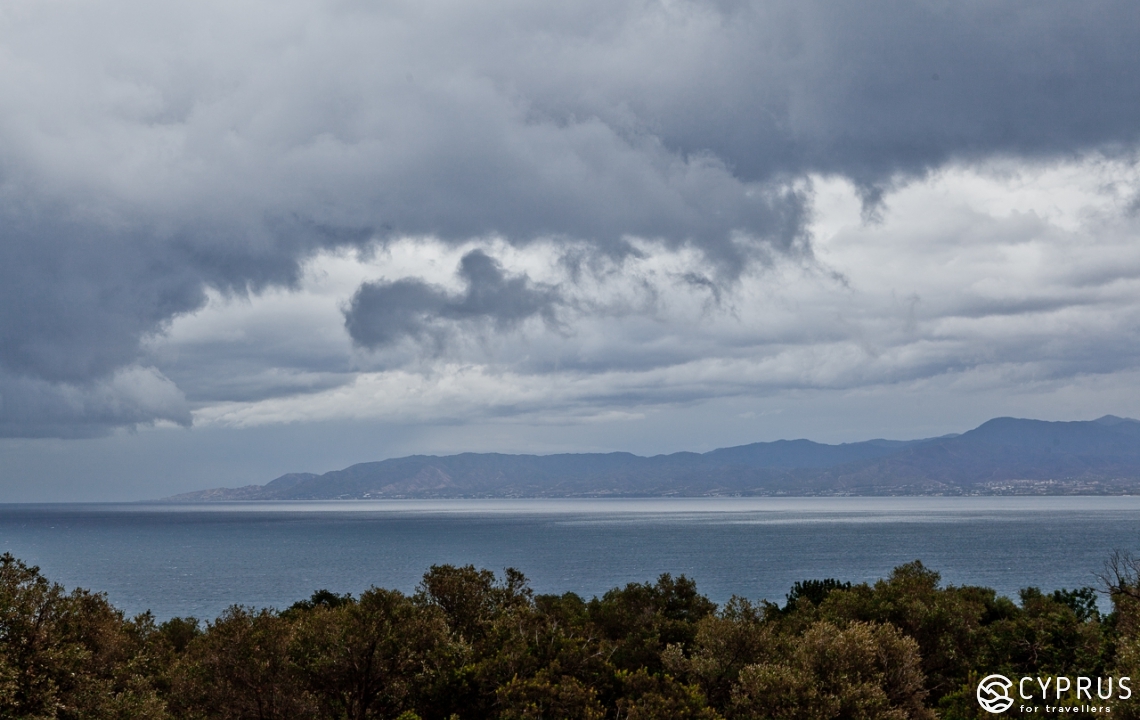
Well, when you’ve had a good enough drive, look, walk and swim — don’t forget to visit the village of Latchi, one of the closest to the nature reserve, with several small cosy restaurants right on the sea coast. It is believed that the best fish meze on the island is in this fishing village. As for you, this is the very time to fortify yourself!
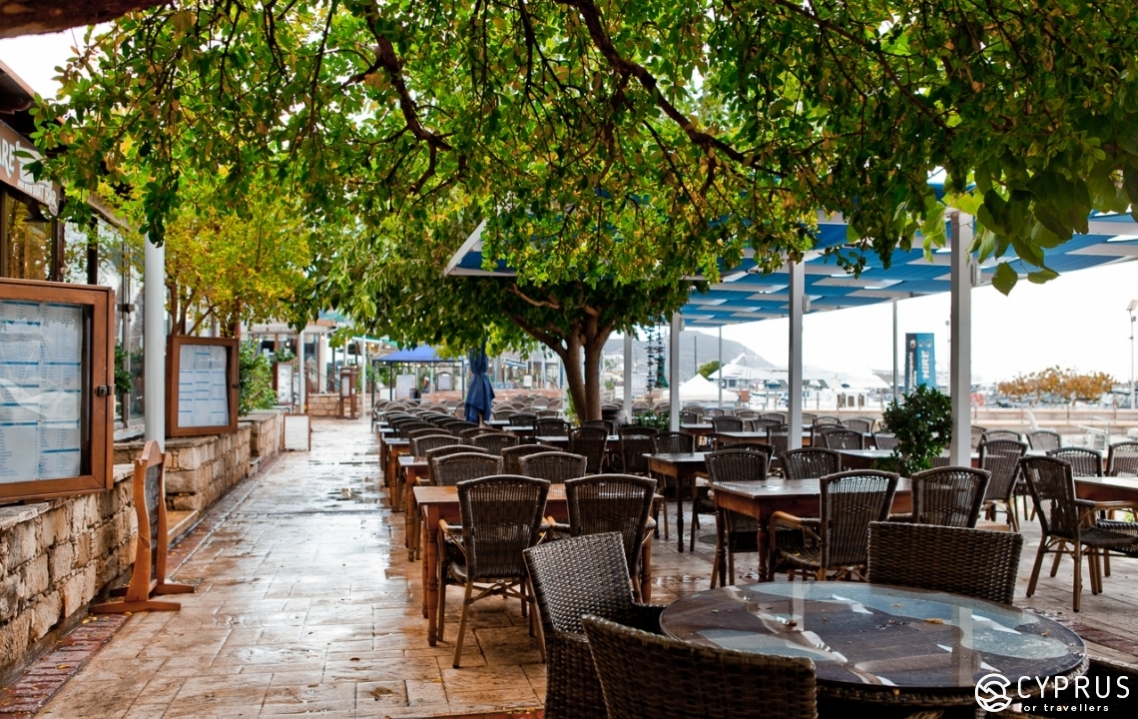
We’ve tried to add the most varied of road-trip options to our list for, as they say, each to their own. So choose one which is closest to home, and then onwards to freedom! But for now, we continue searching for new and exciting places for you to see on the stunning island of Cyprus.
Until Next Time!

